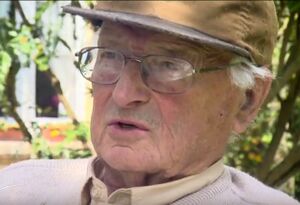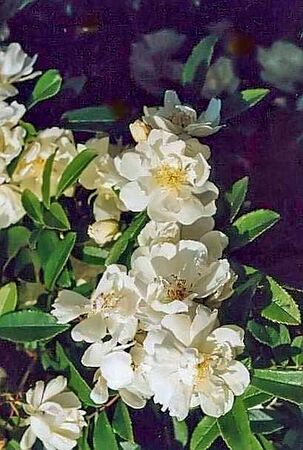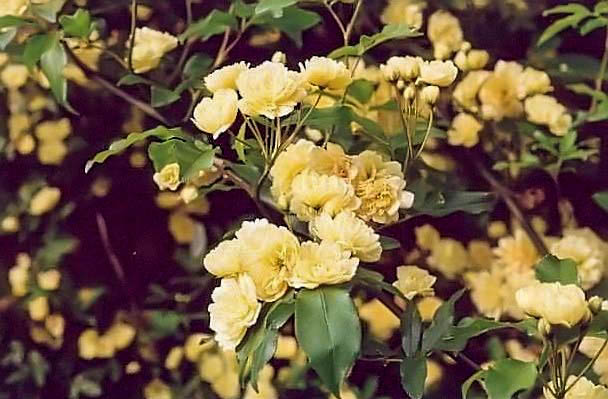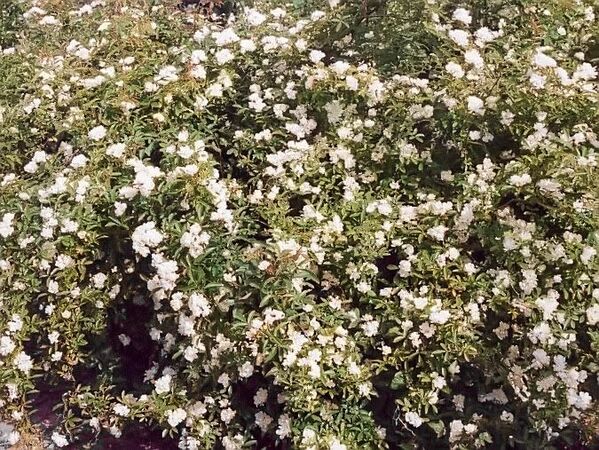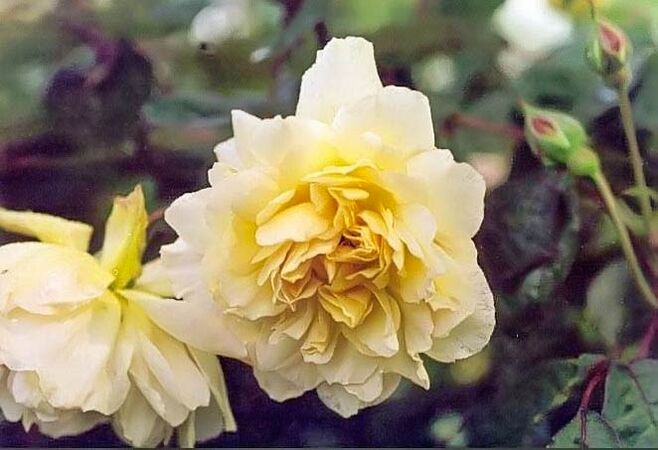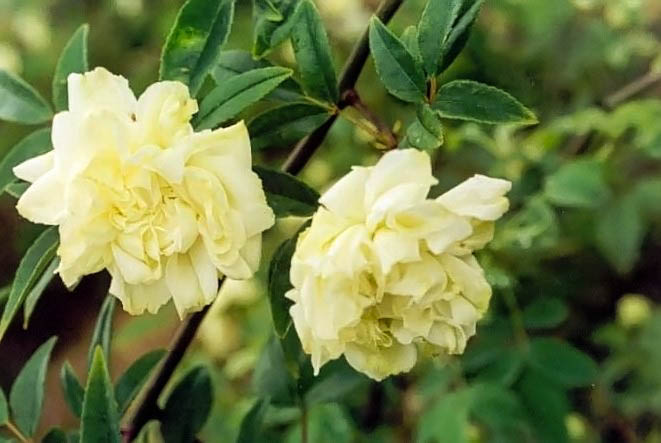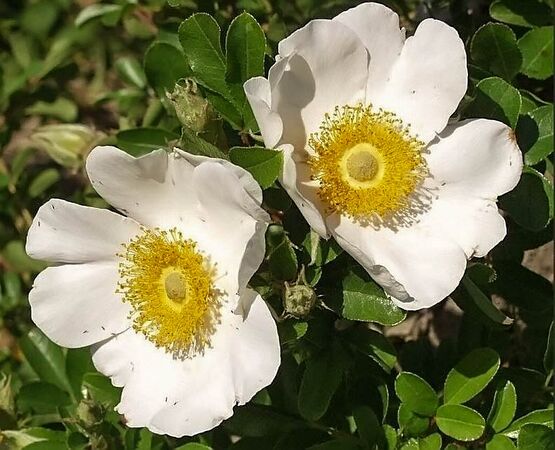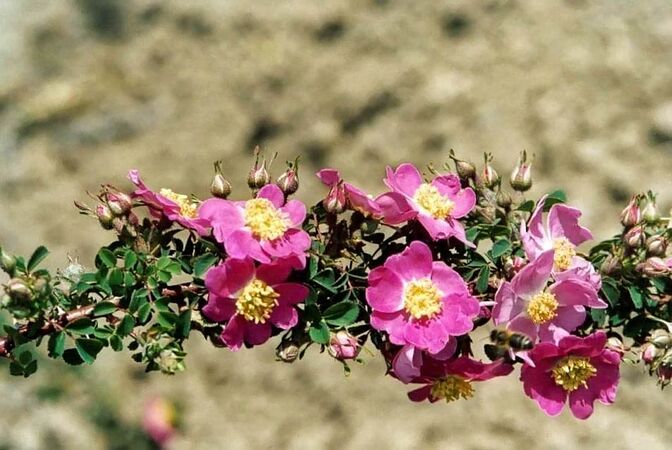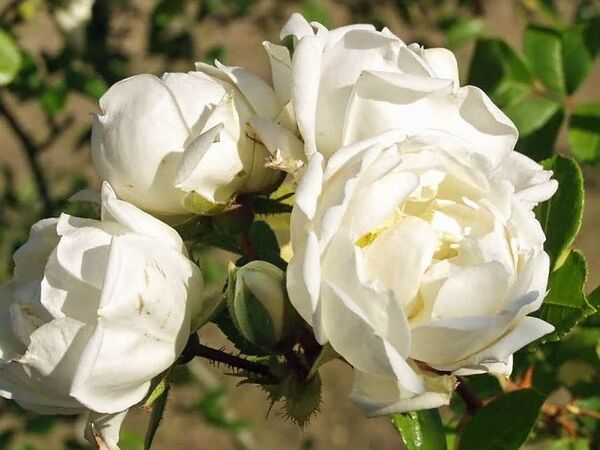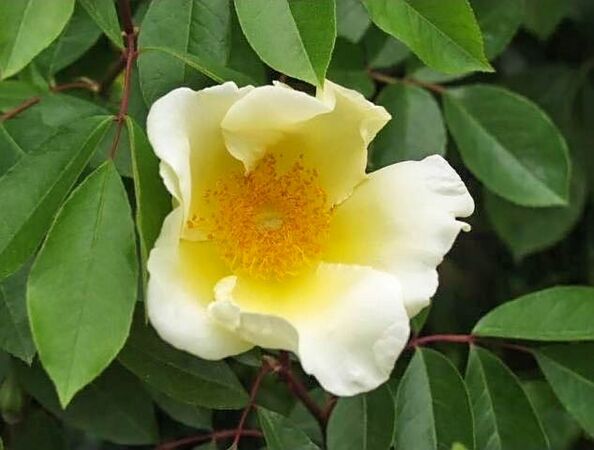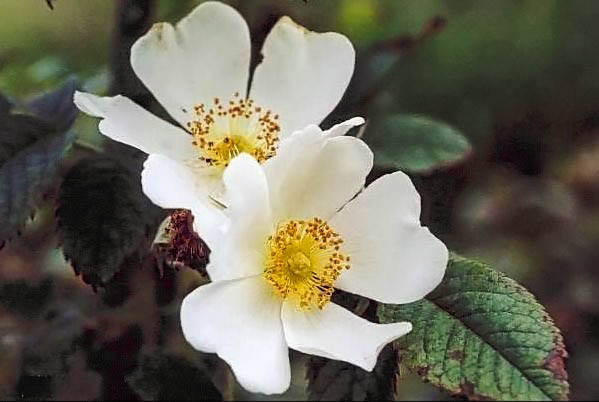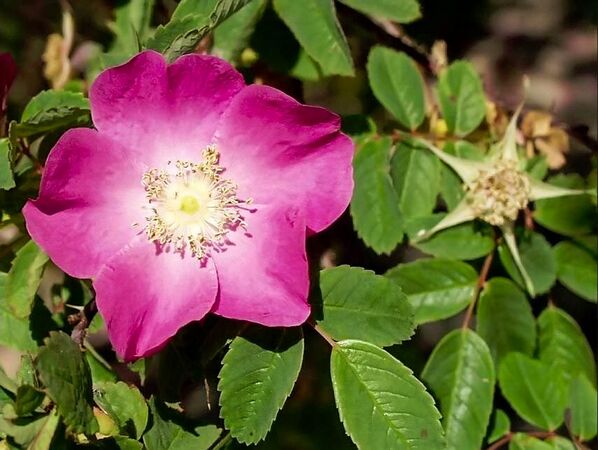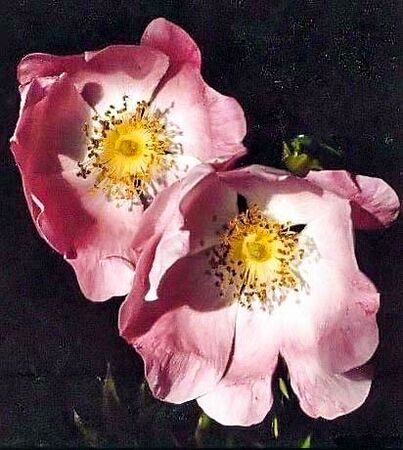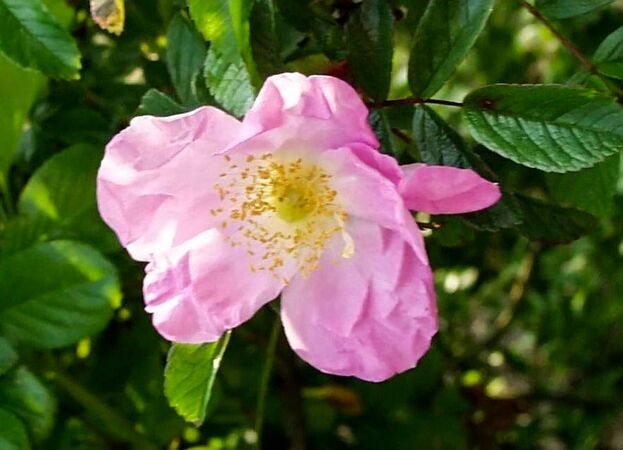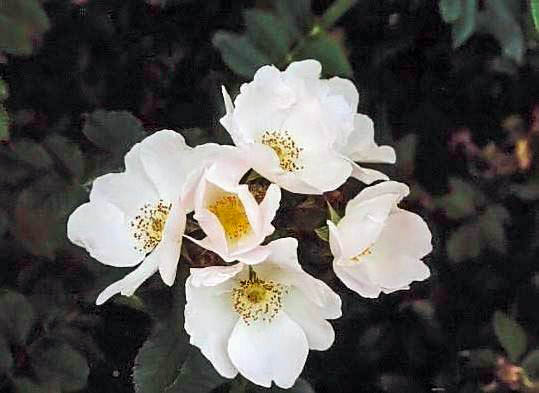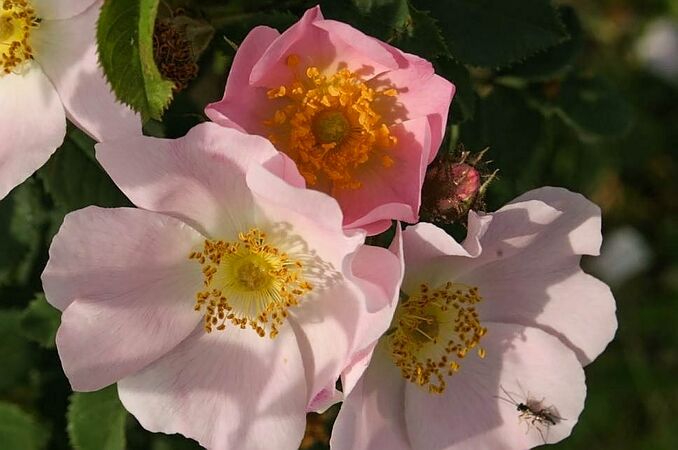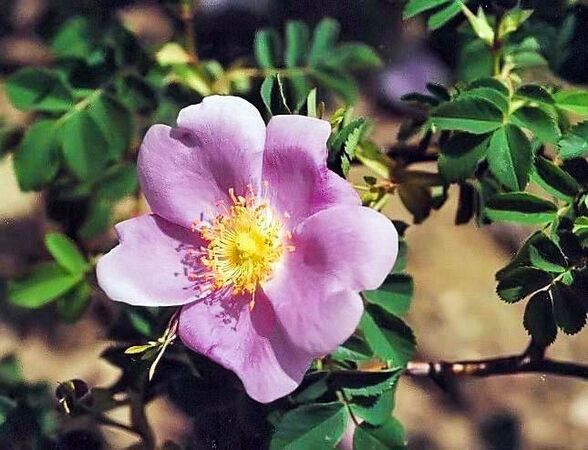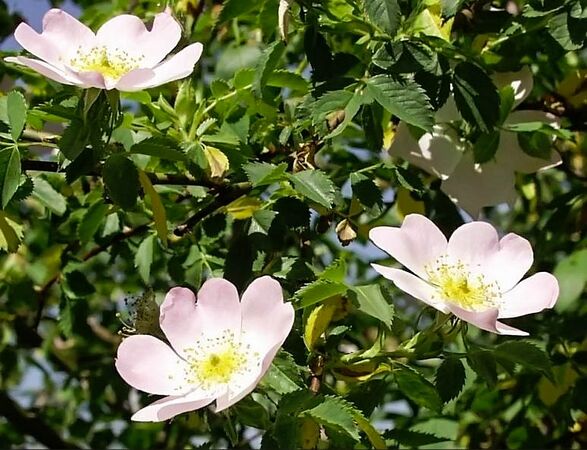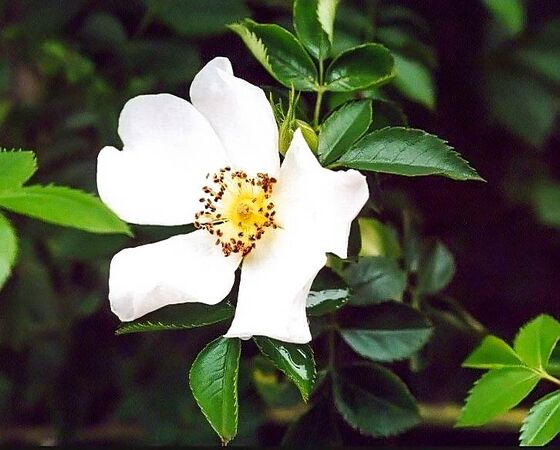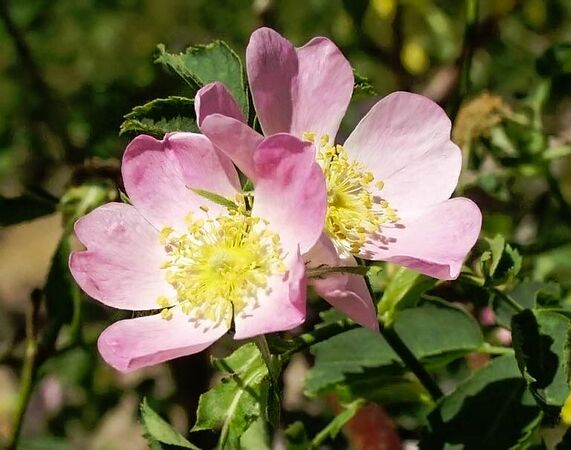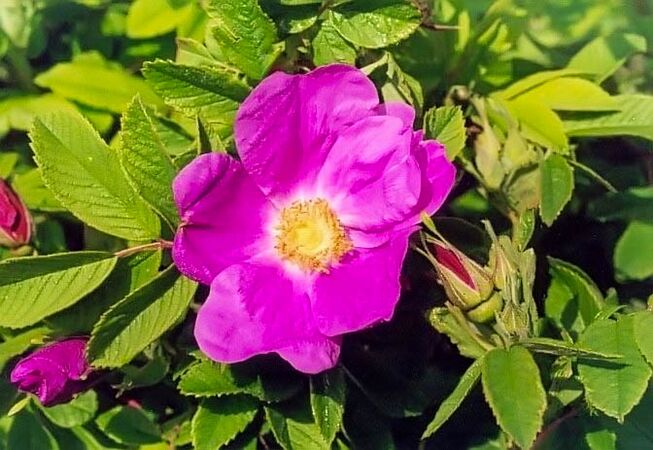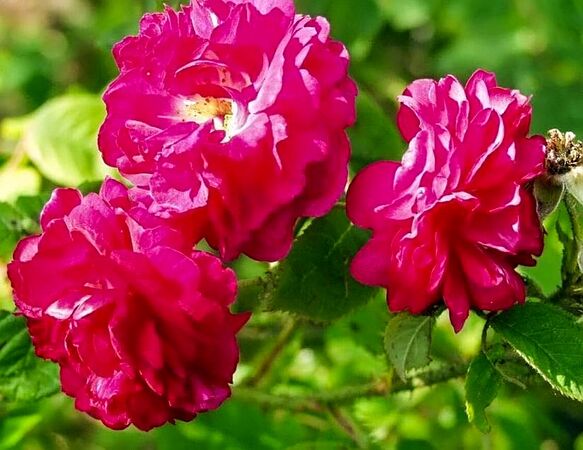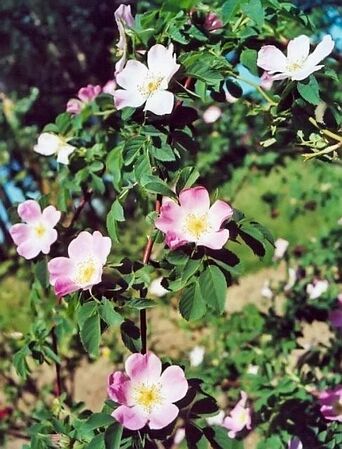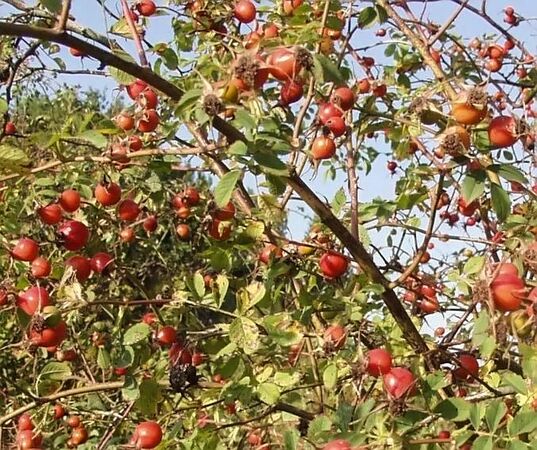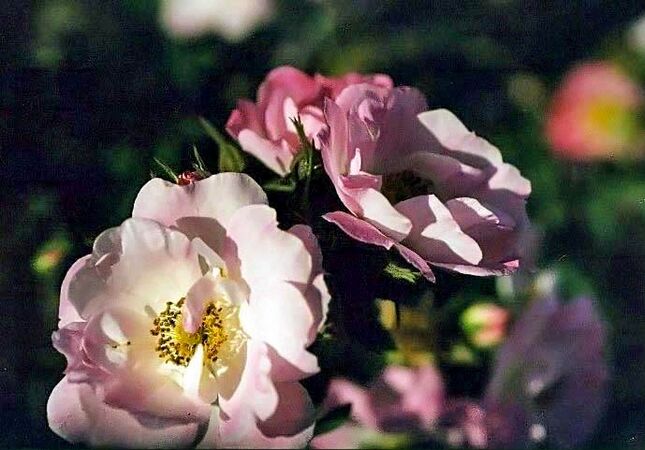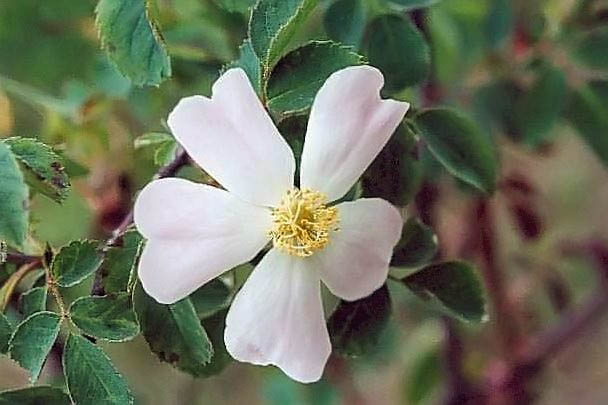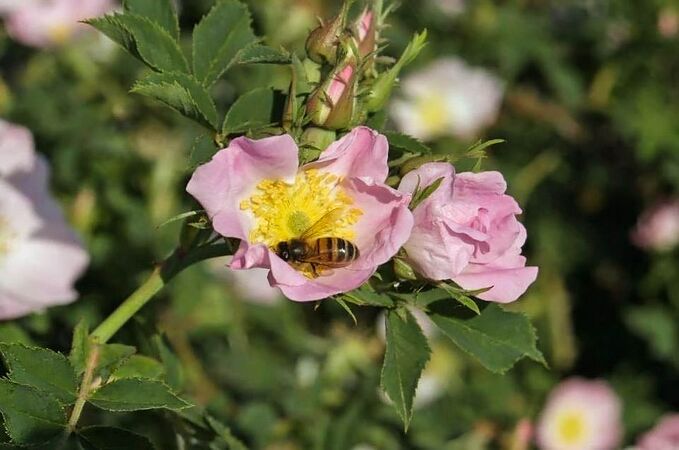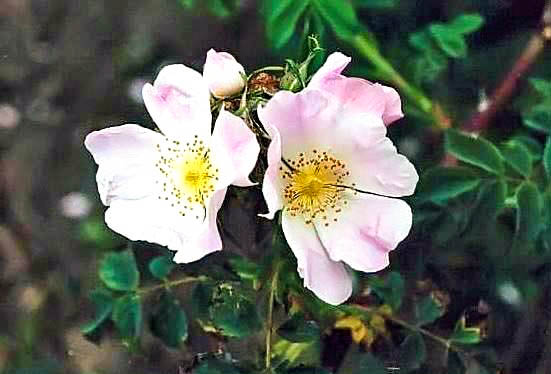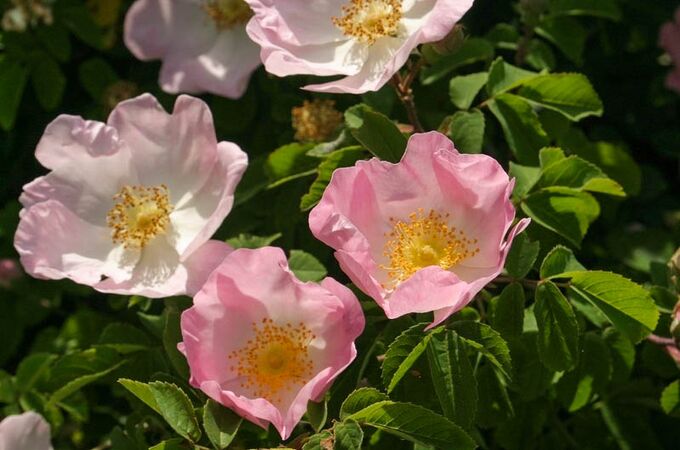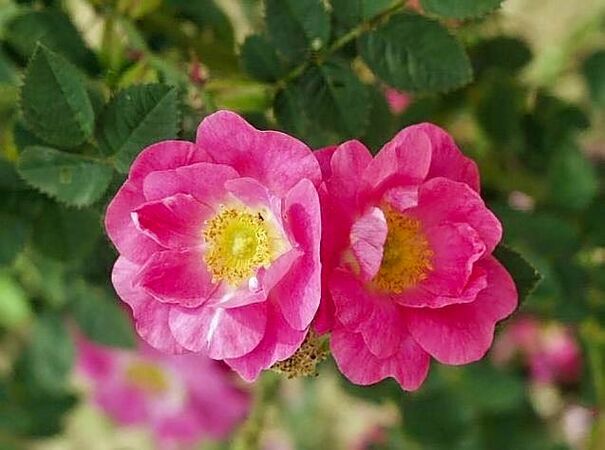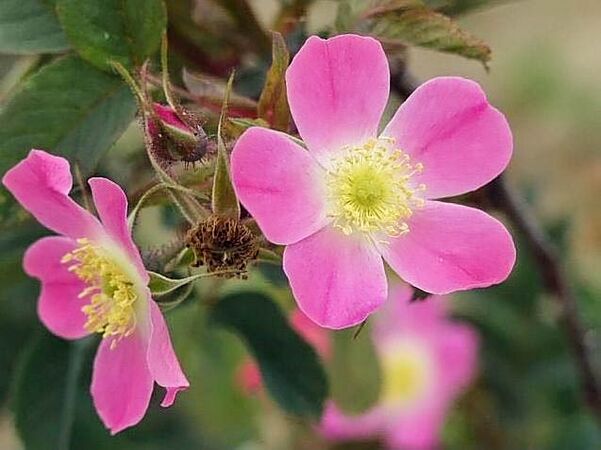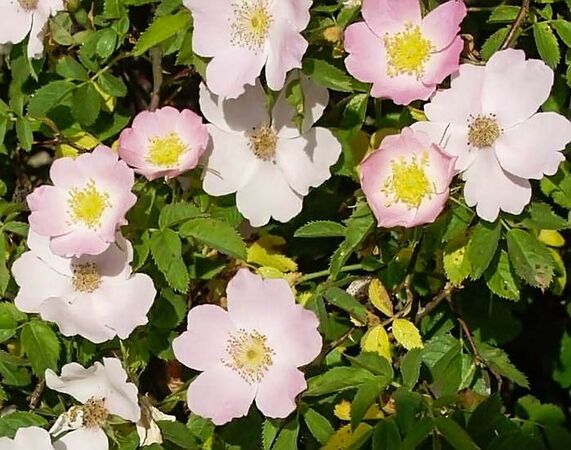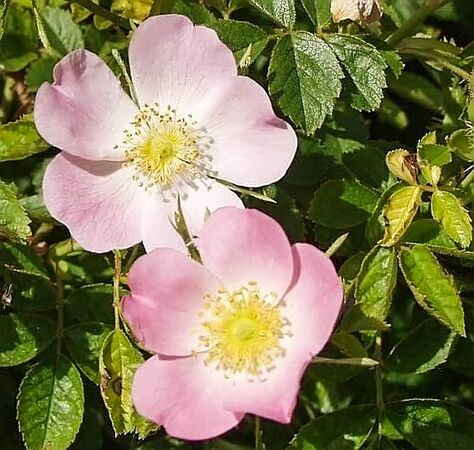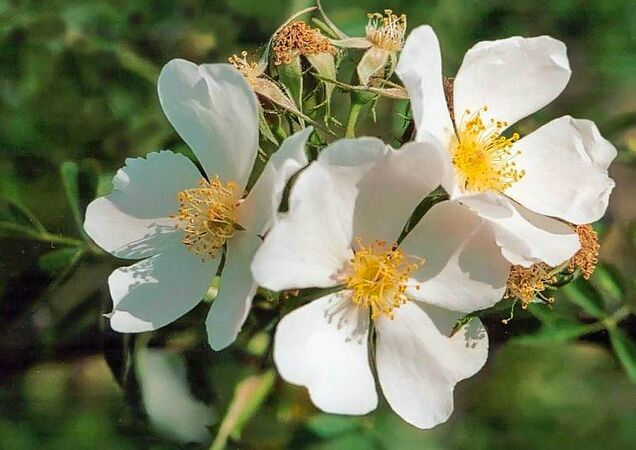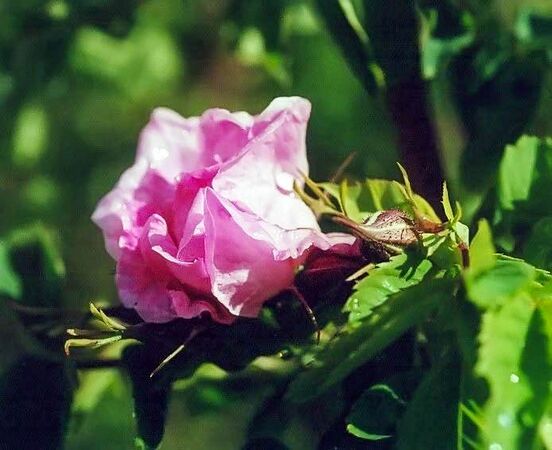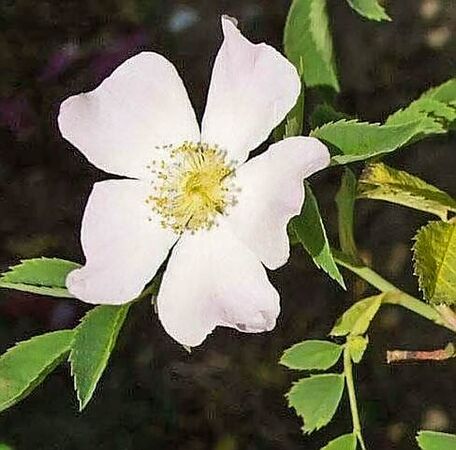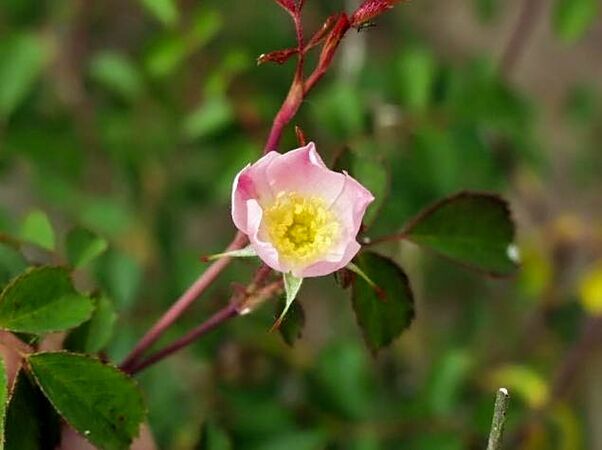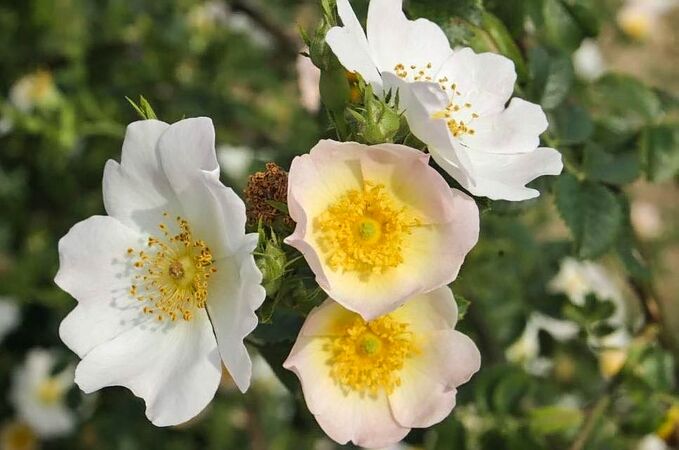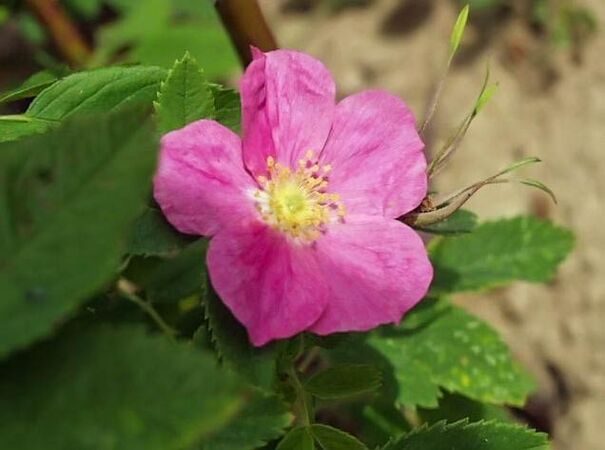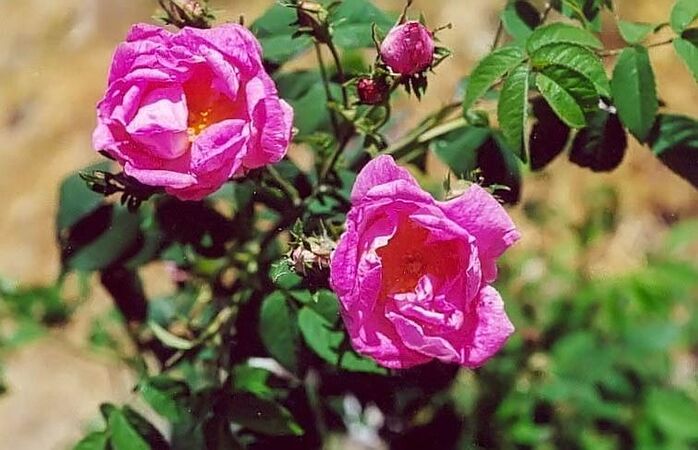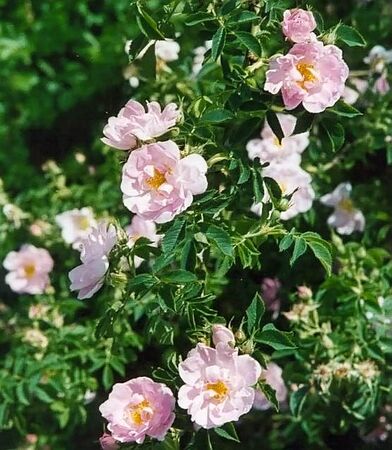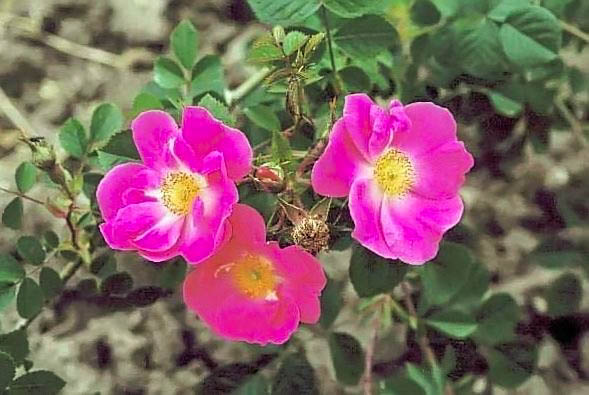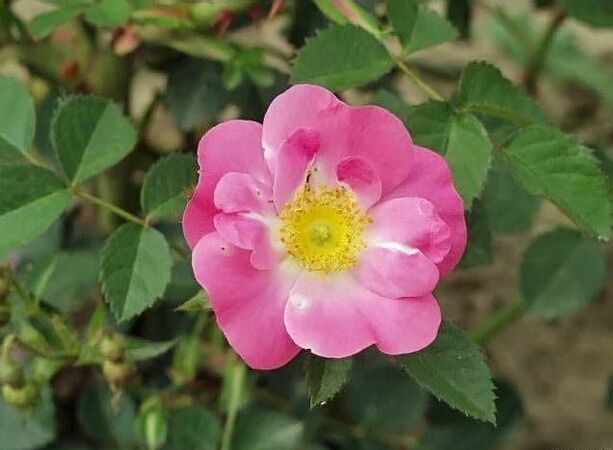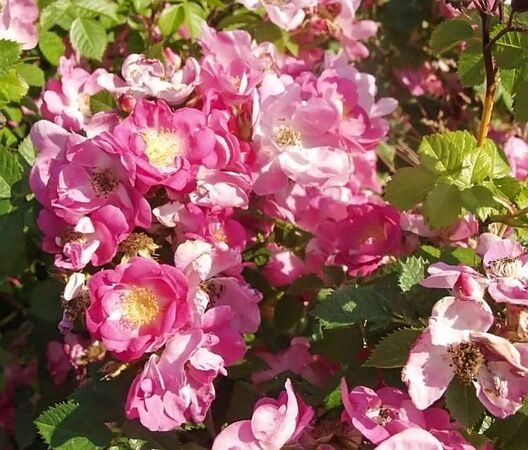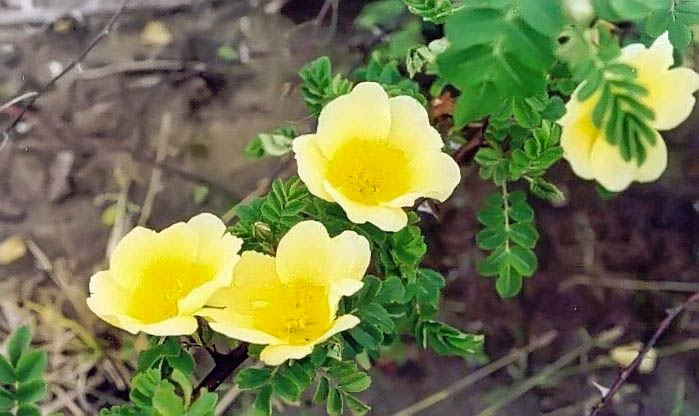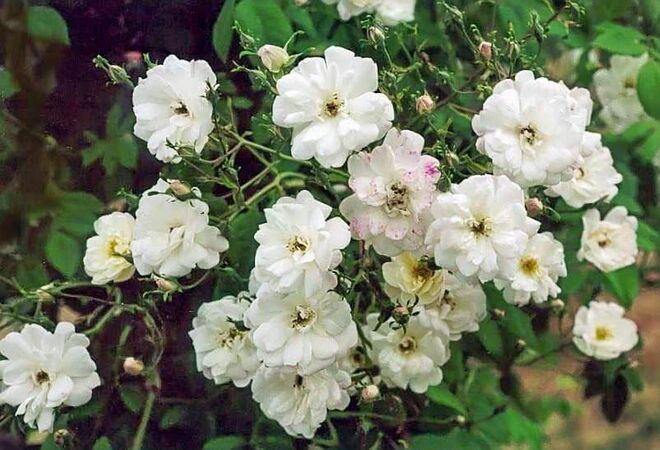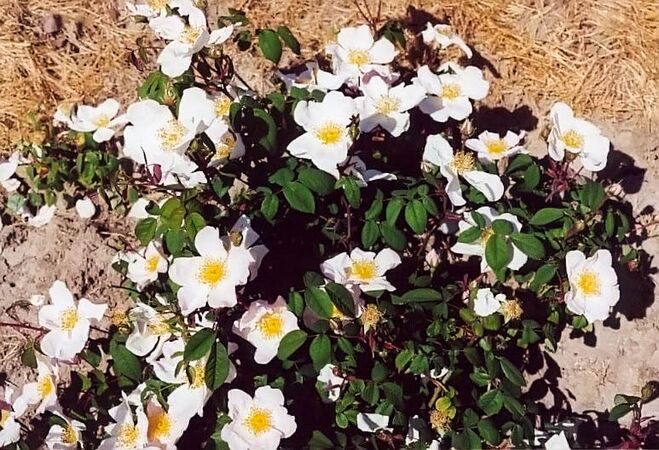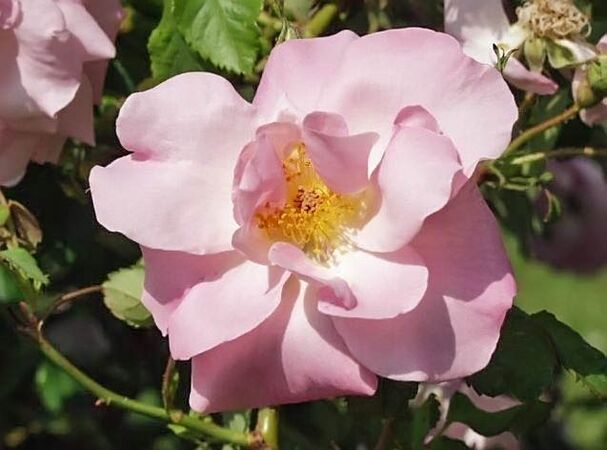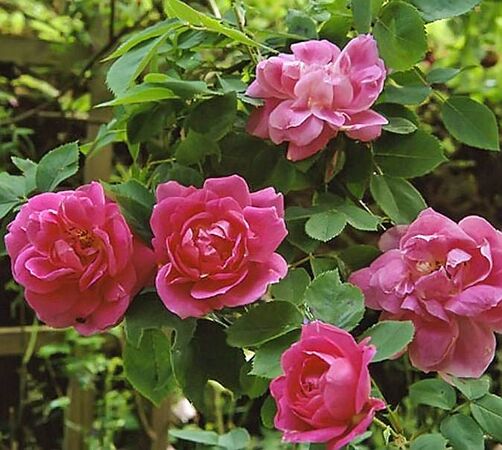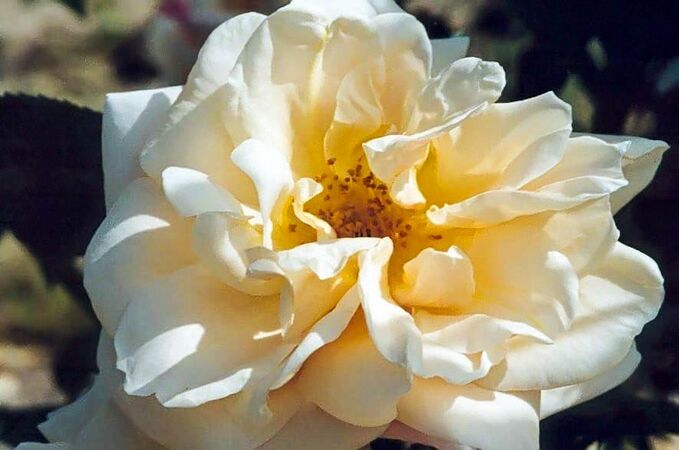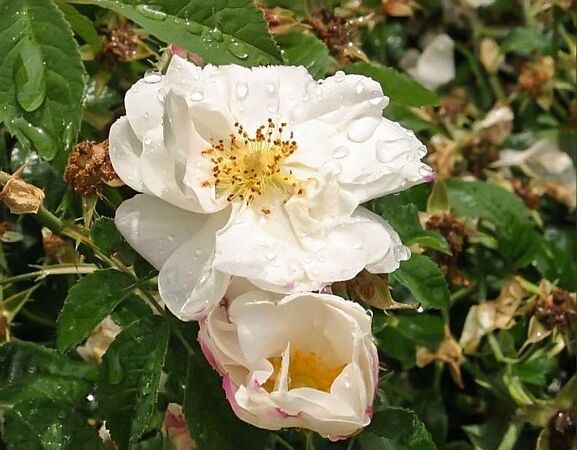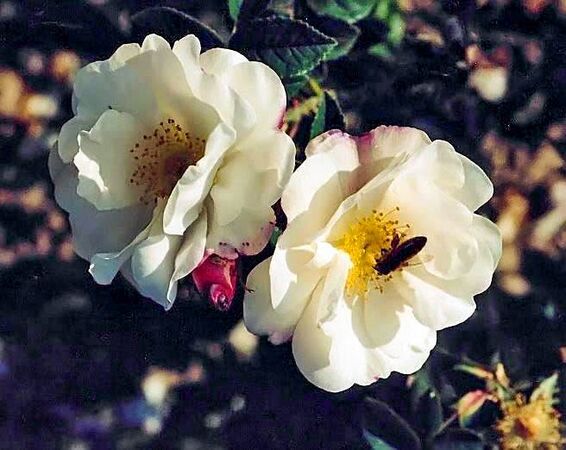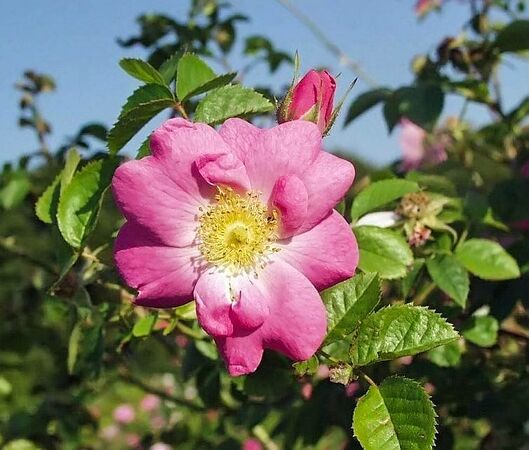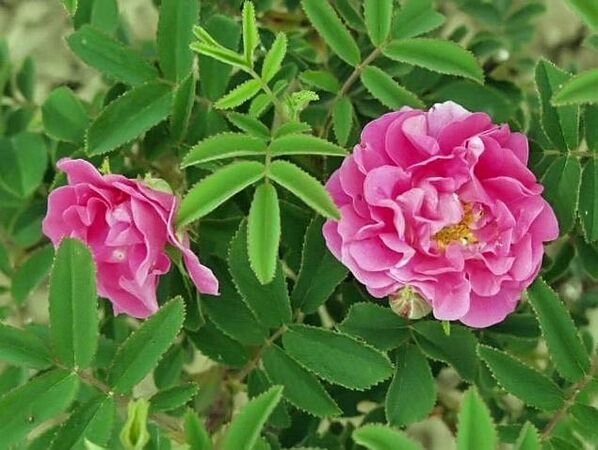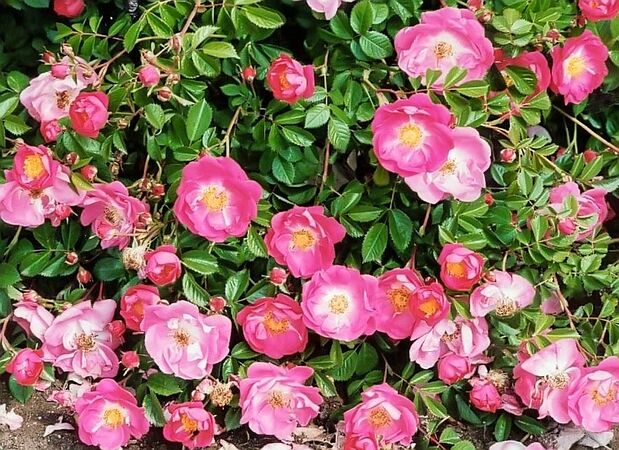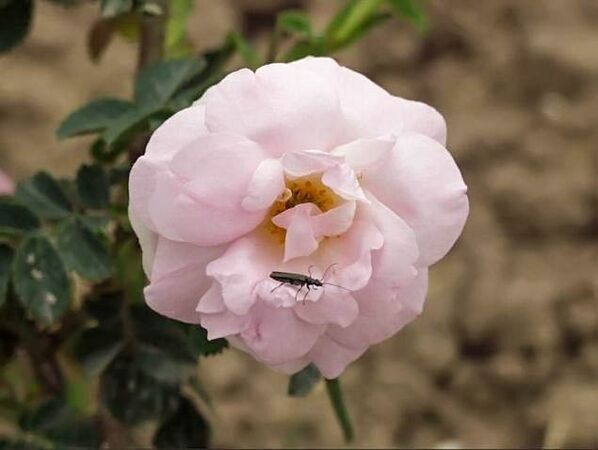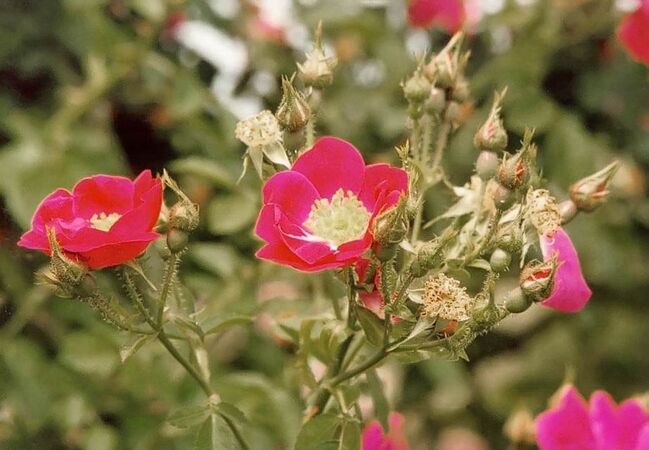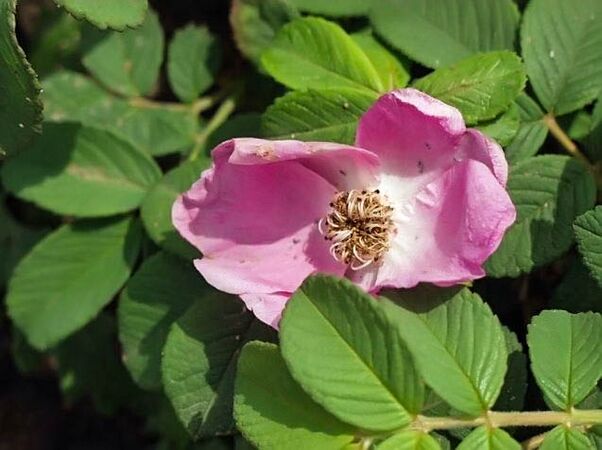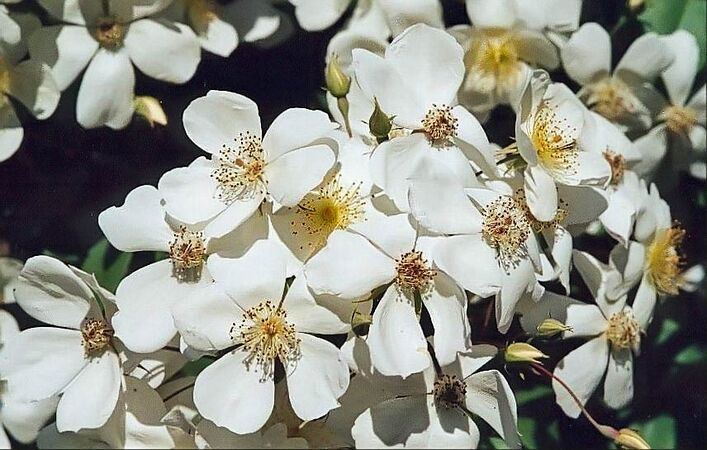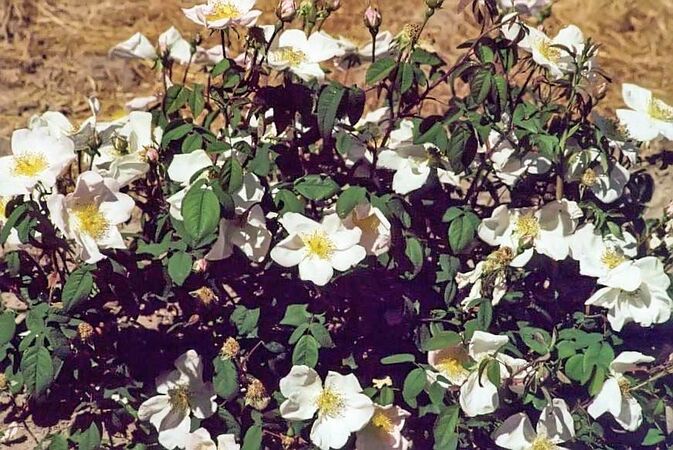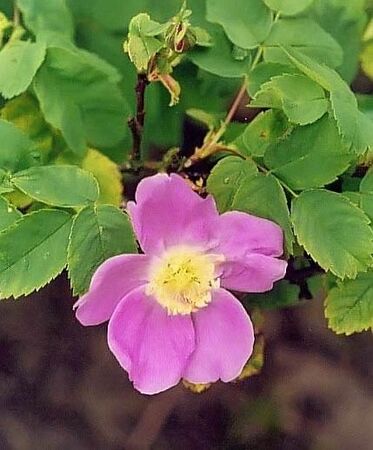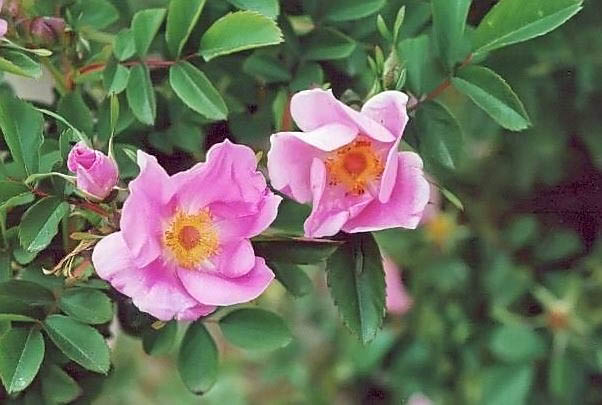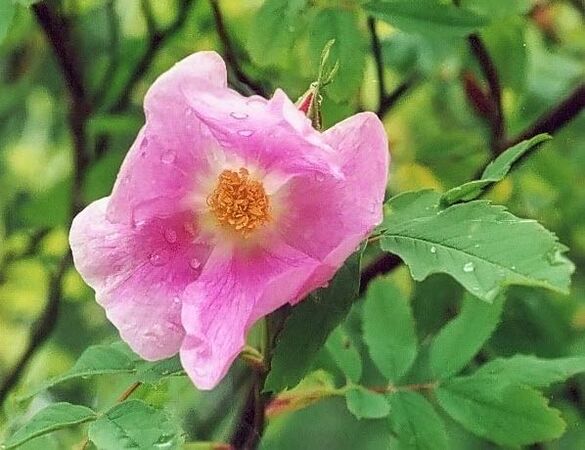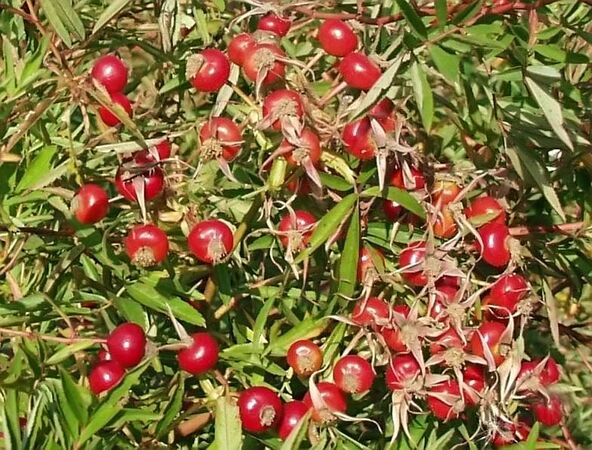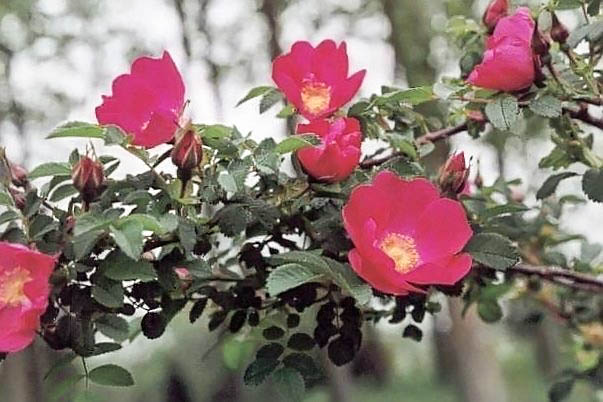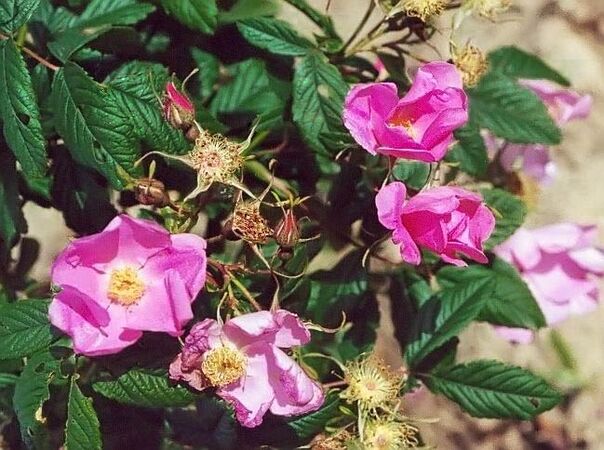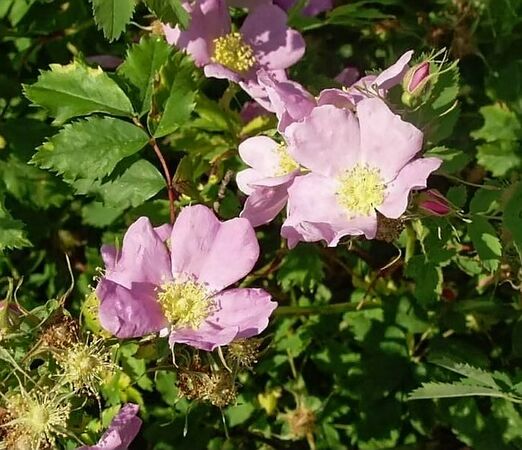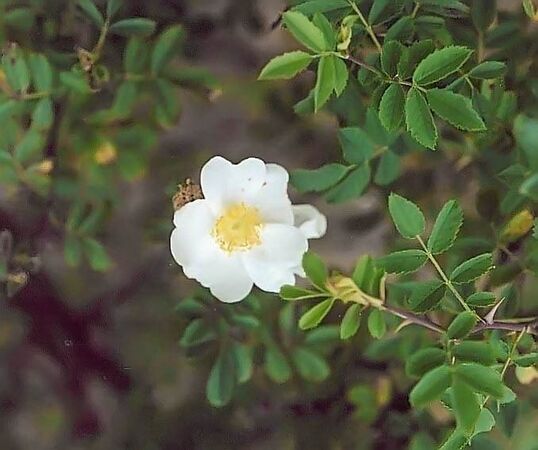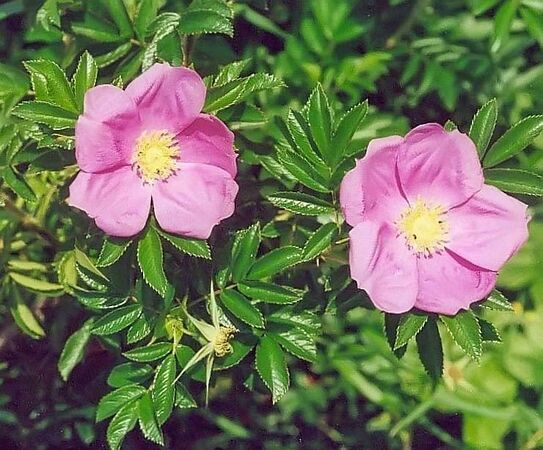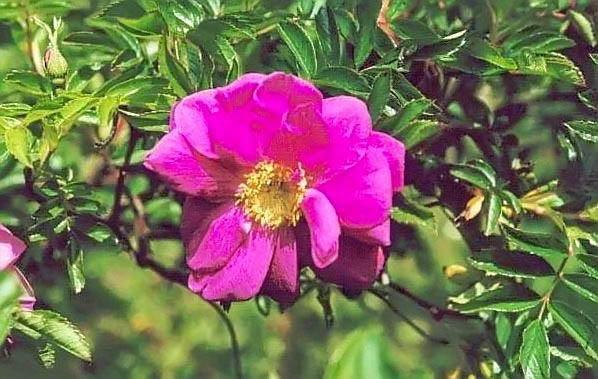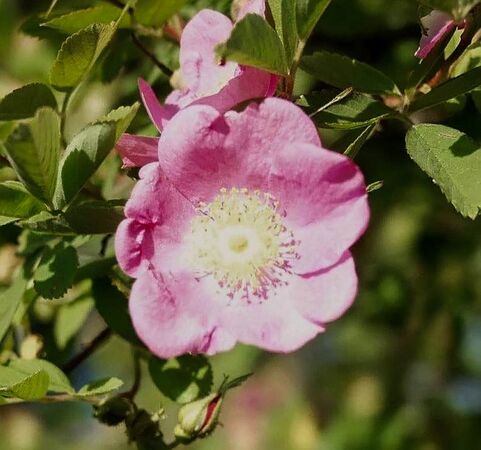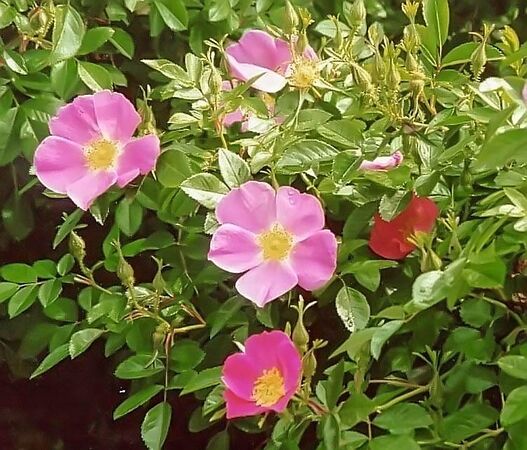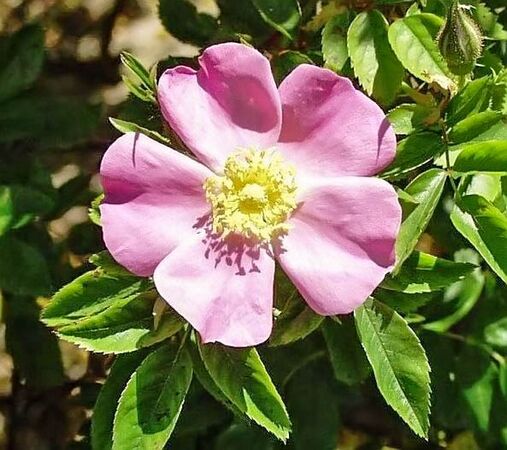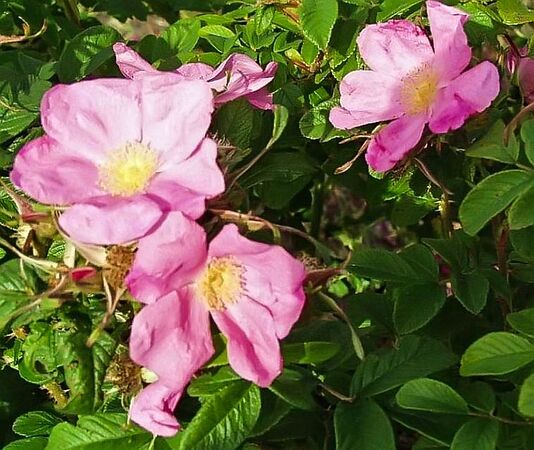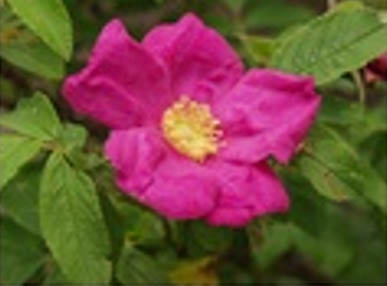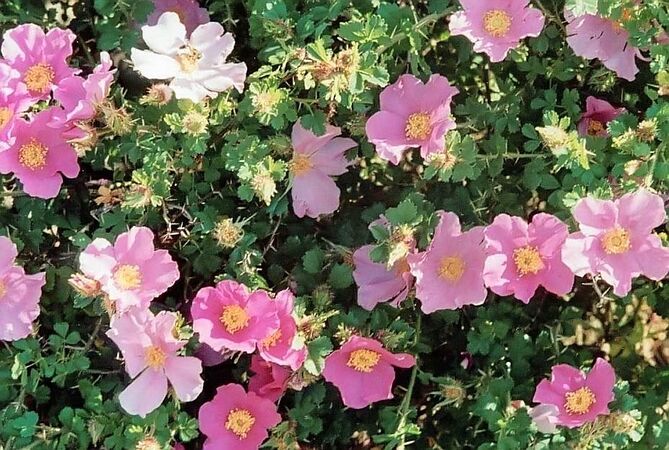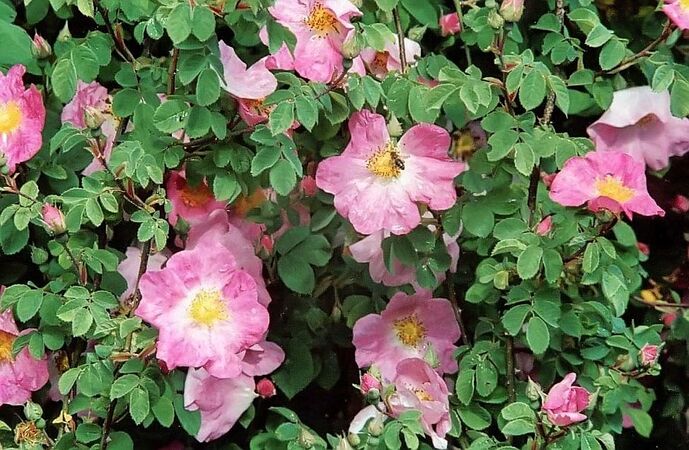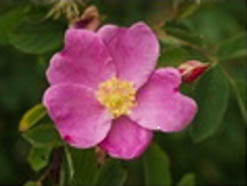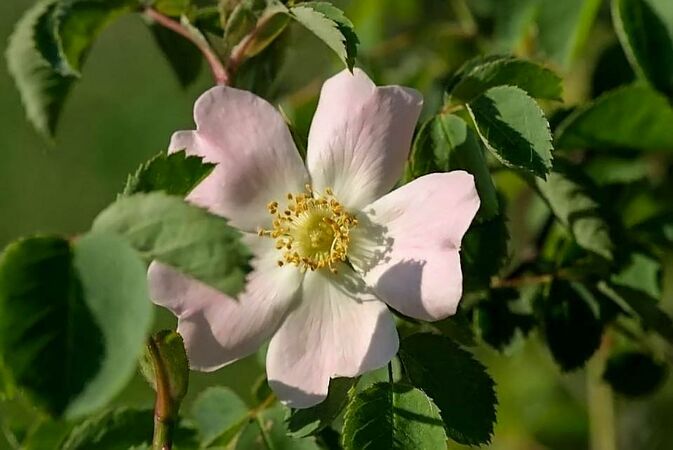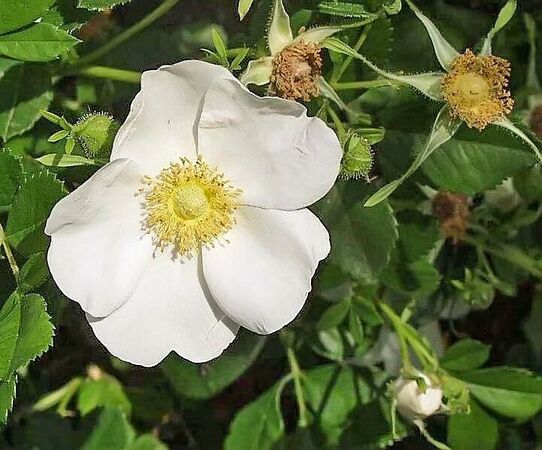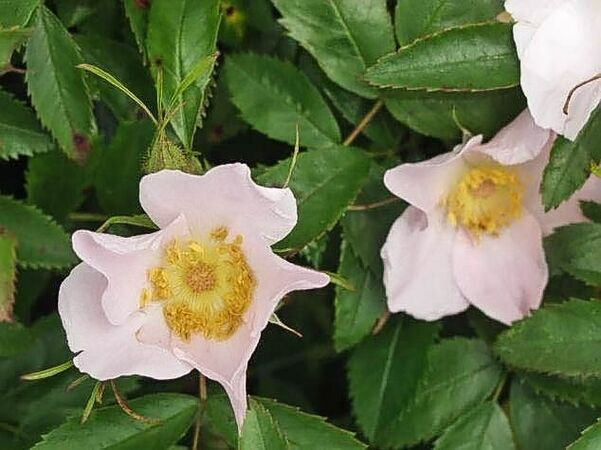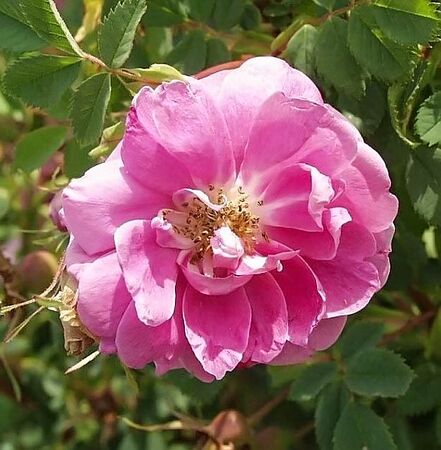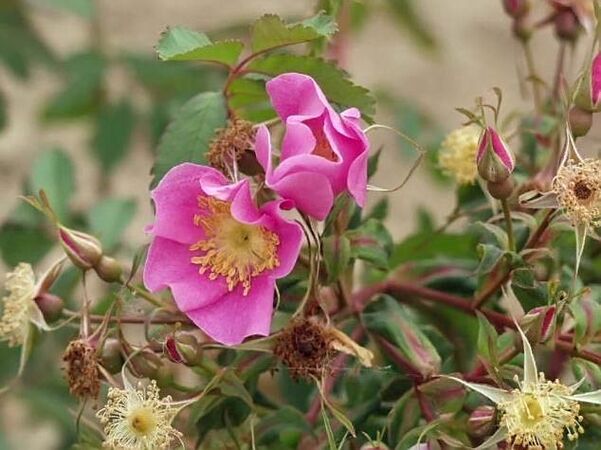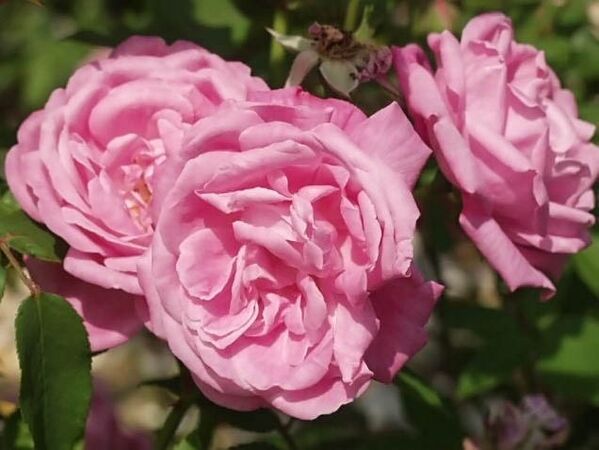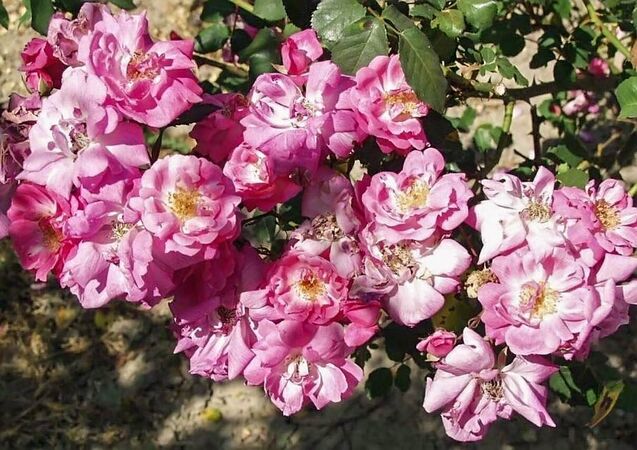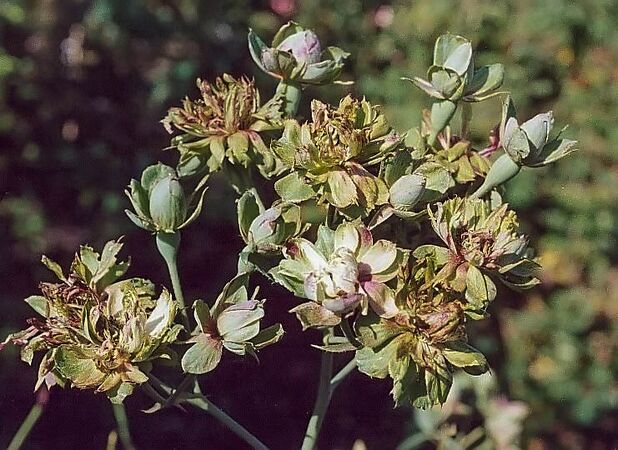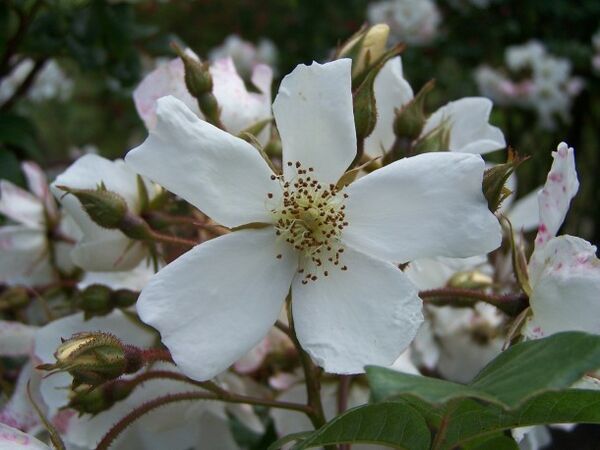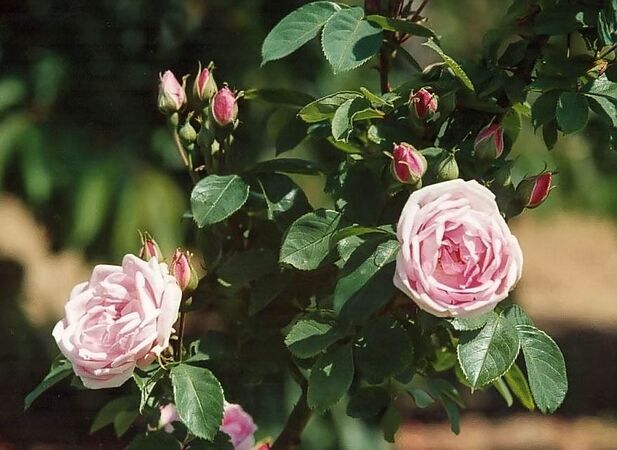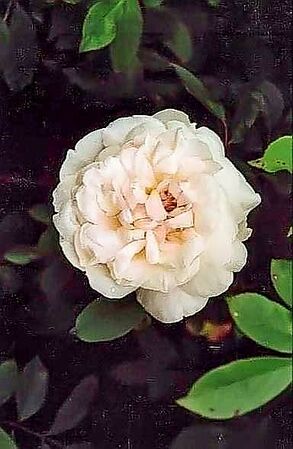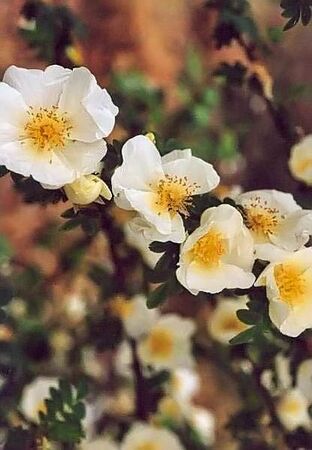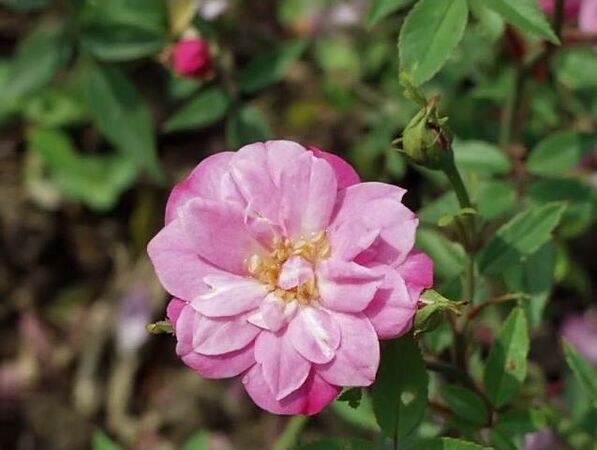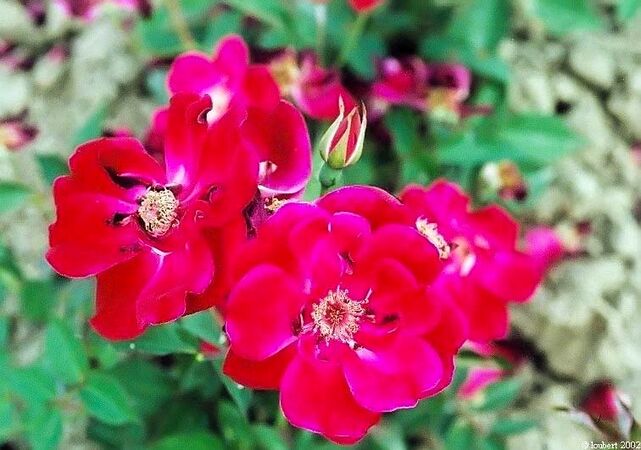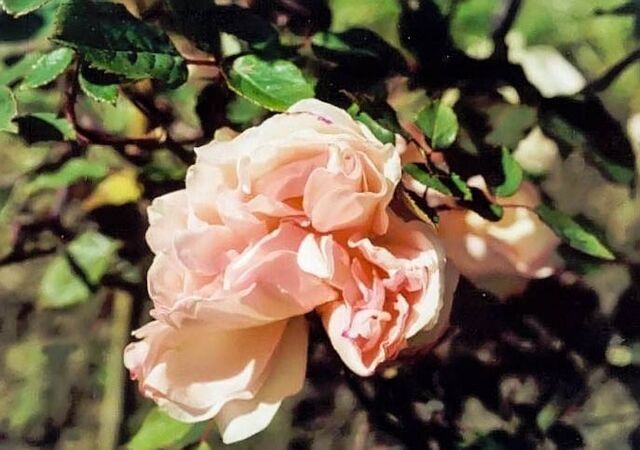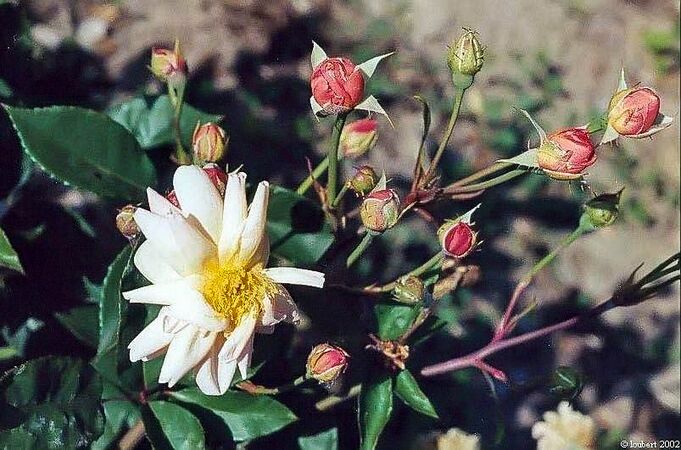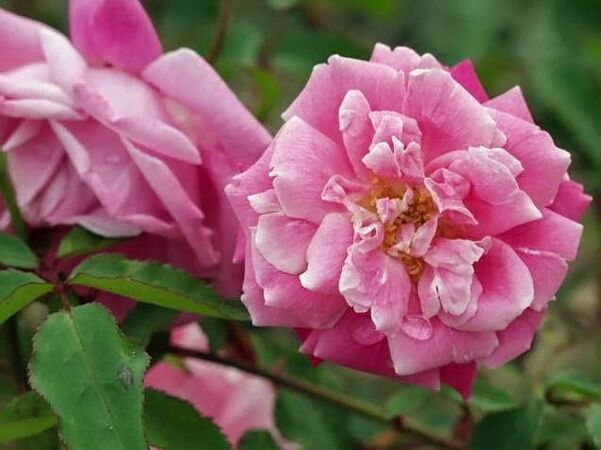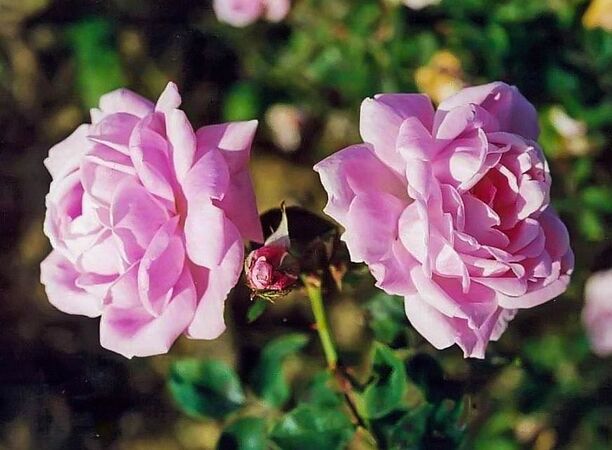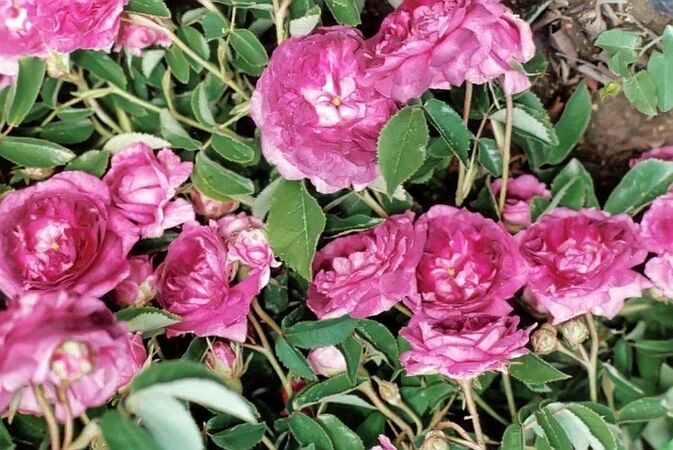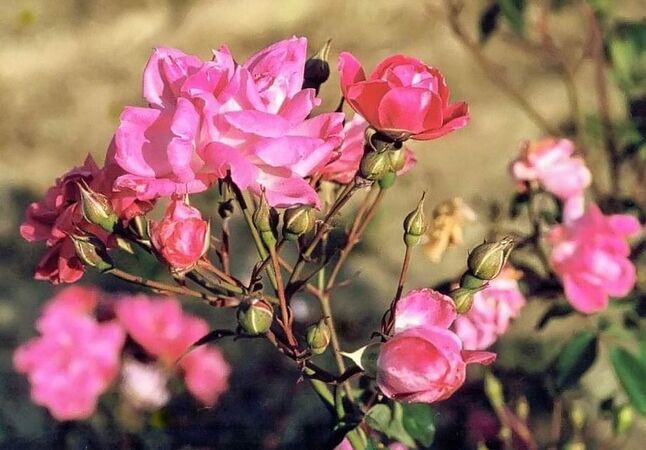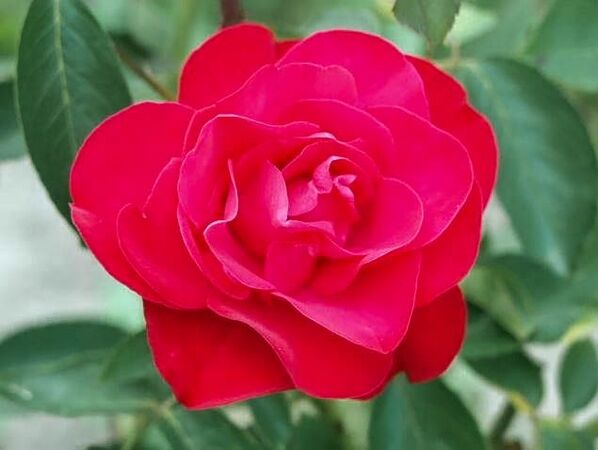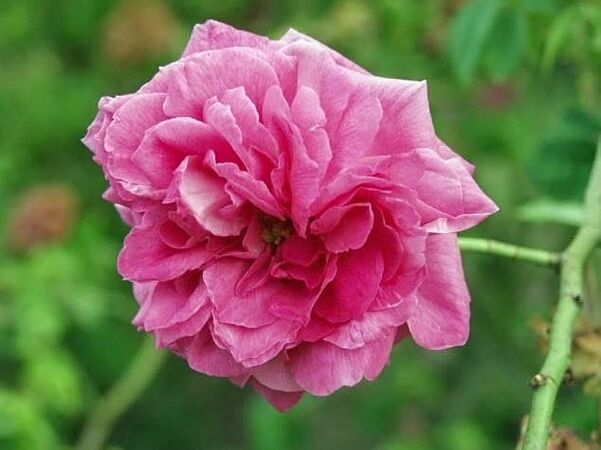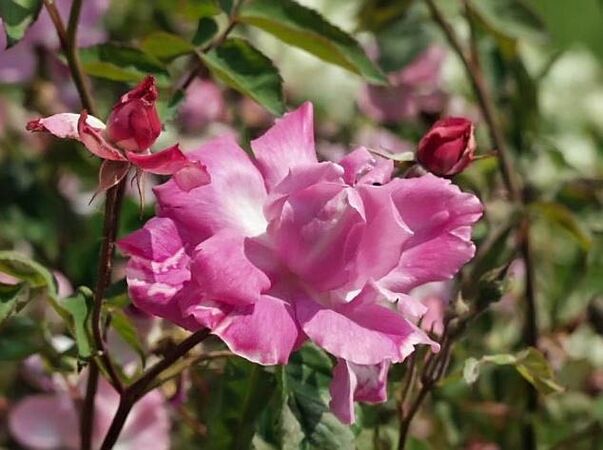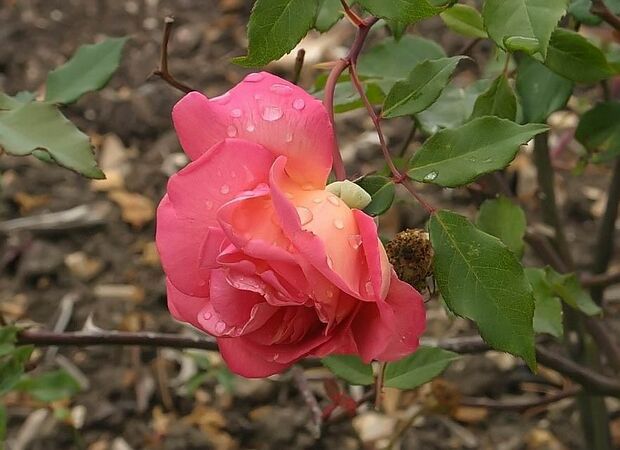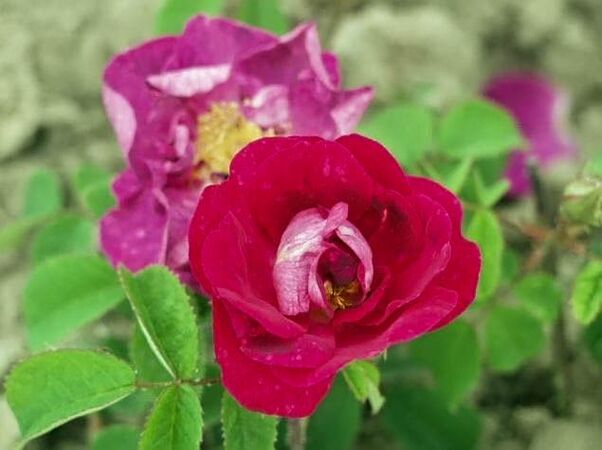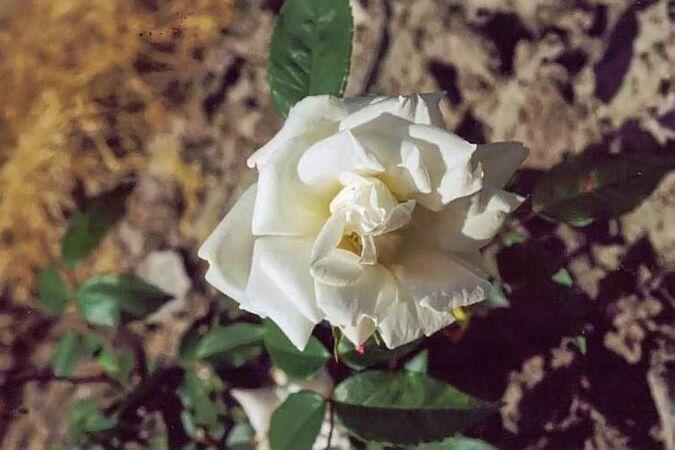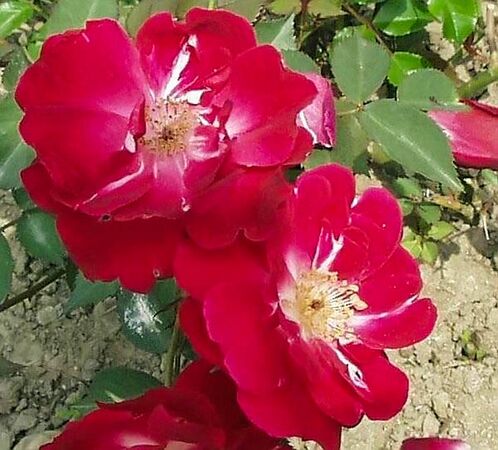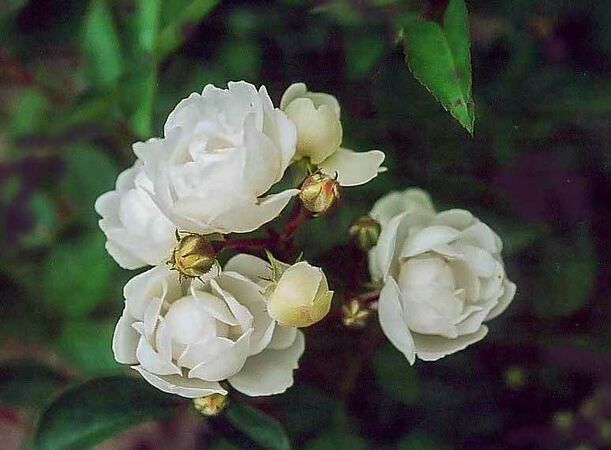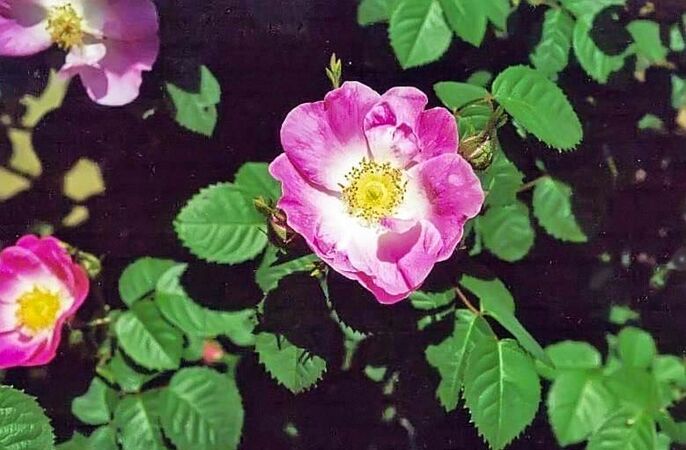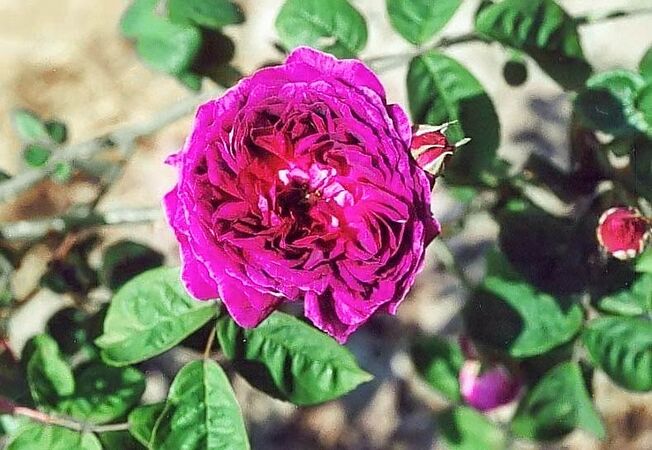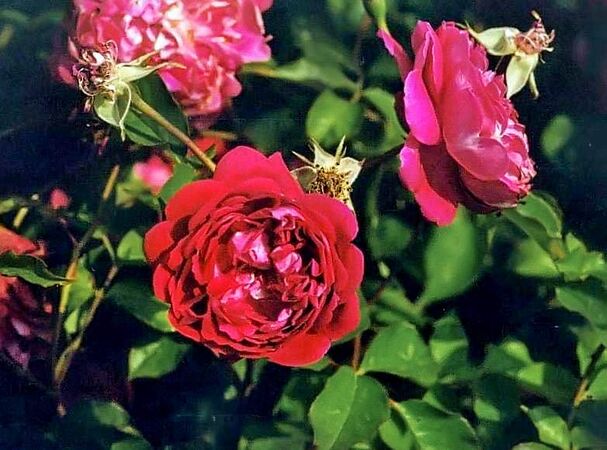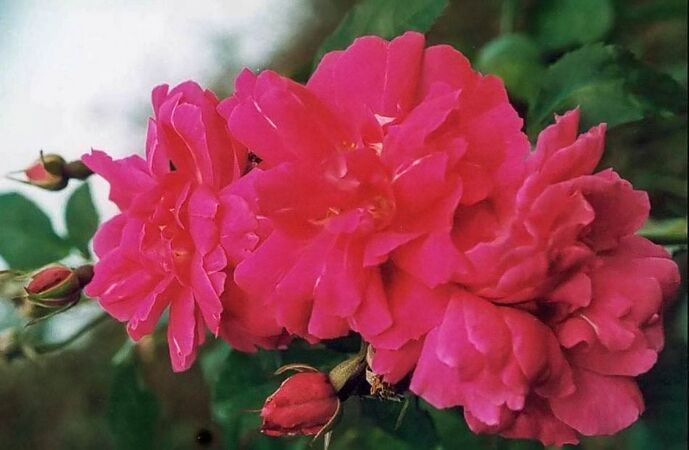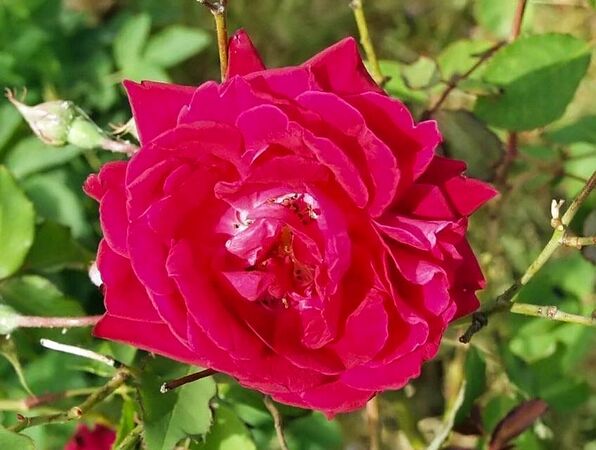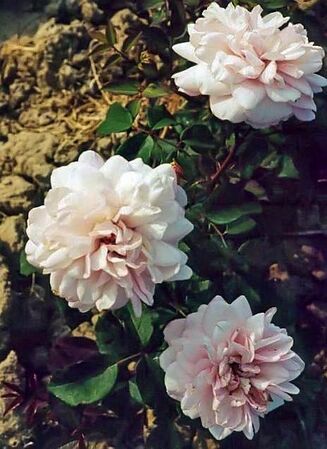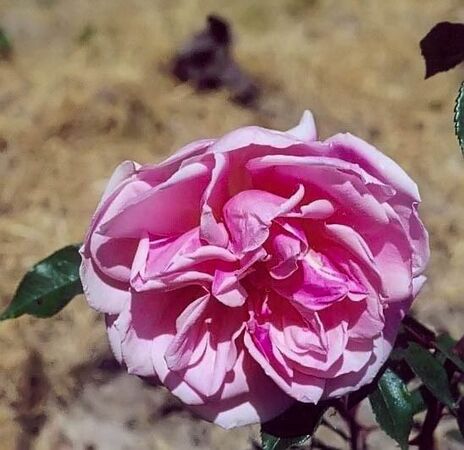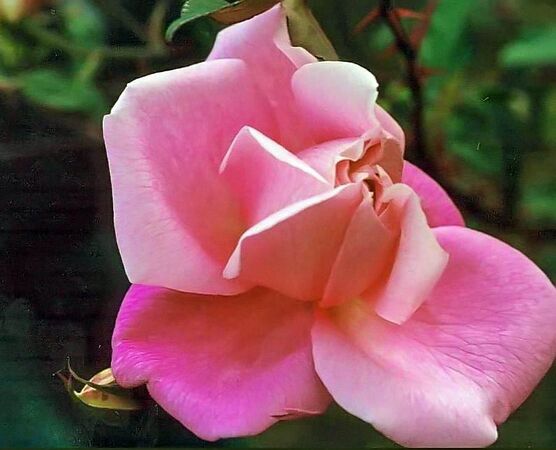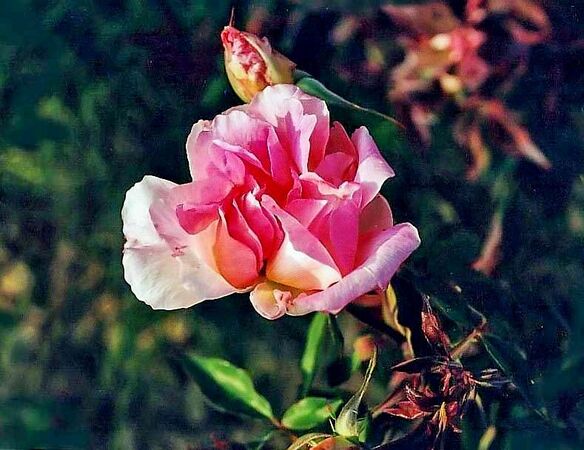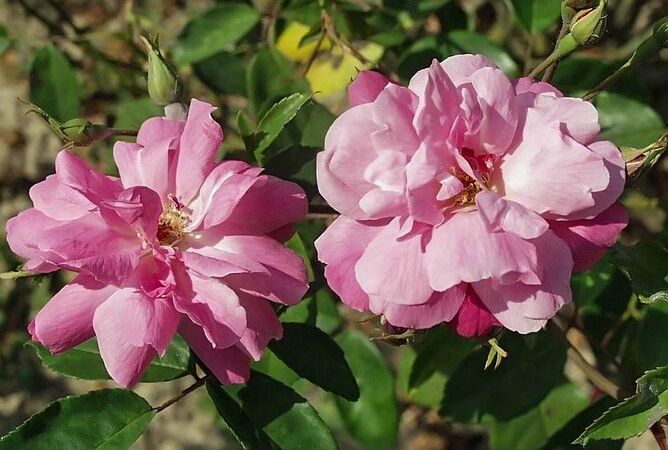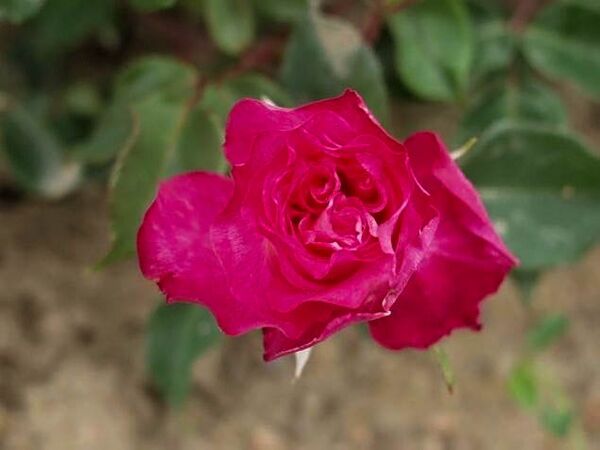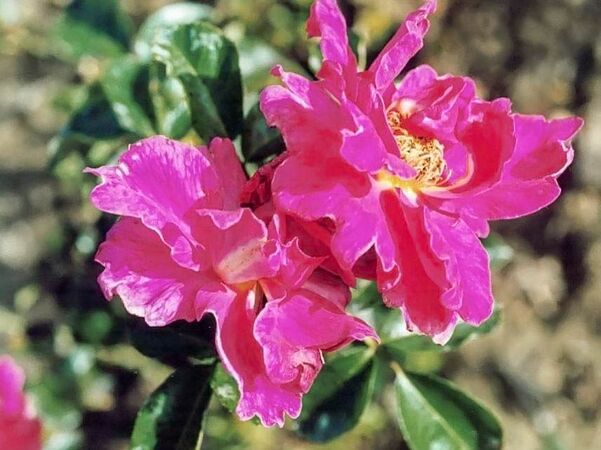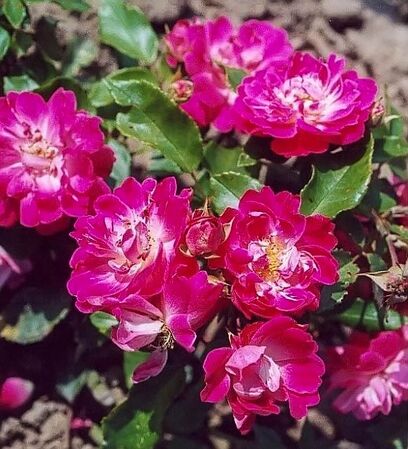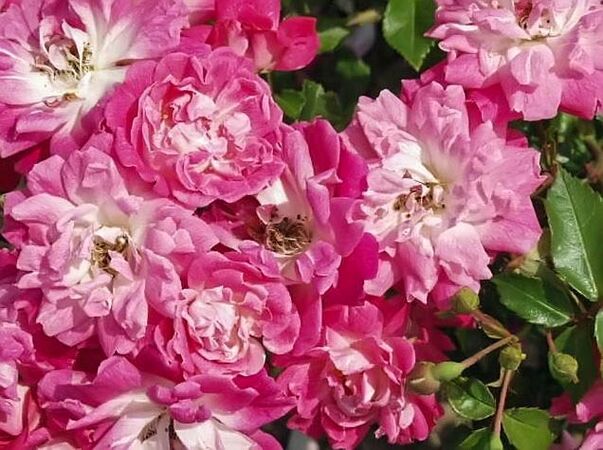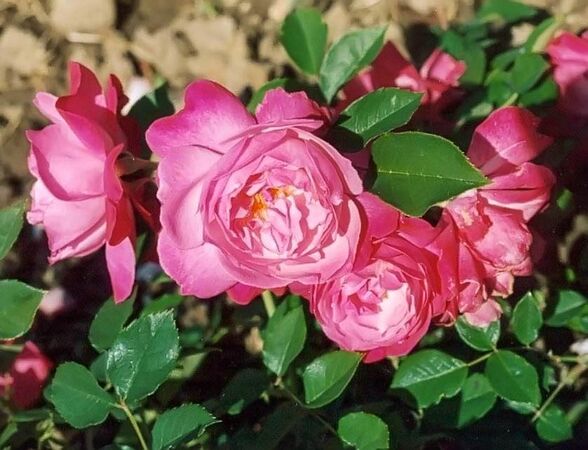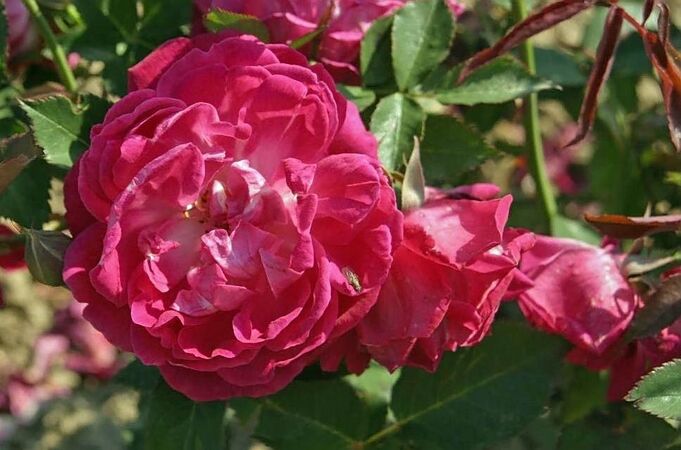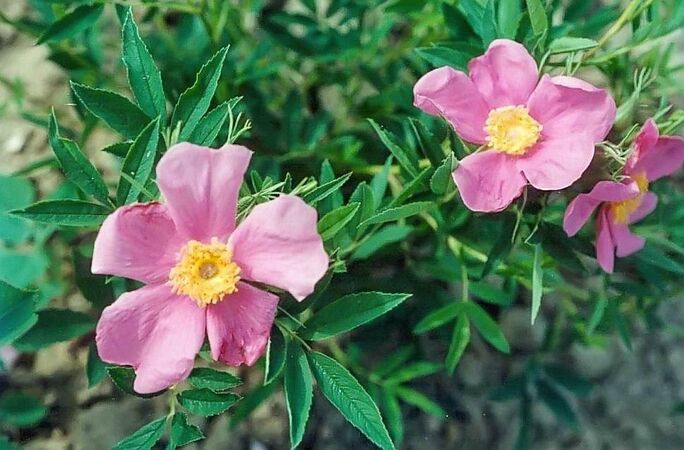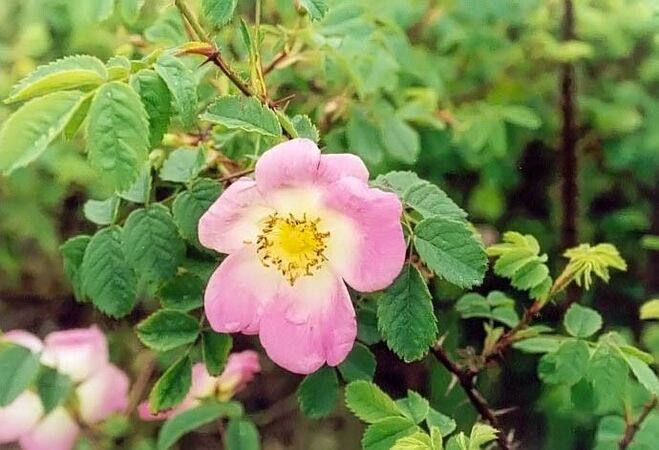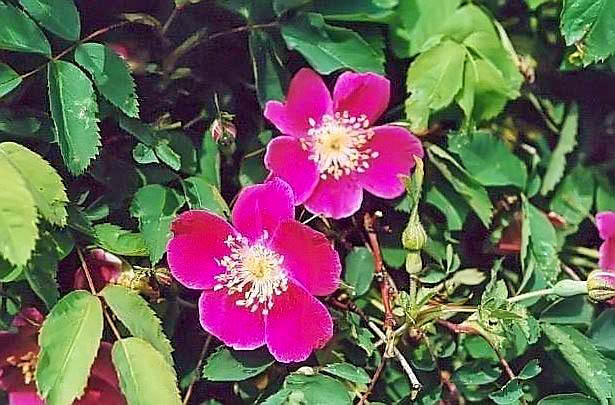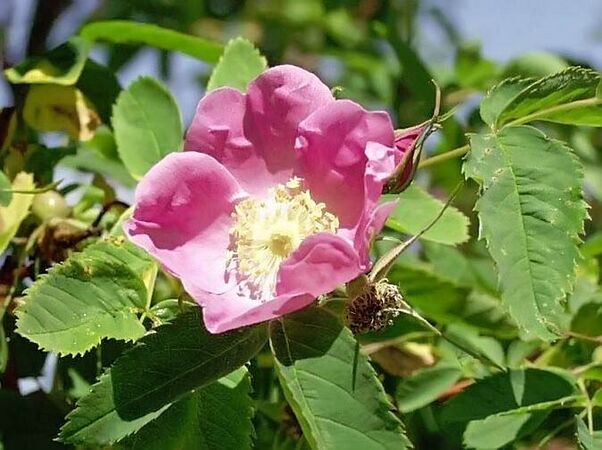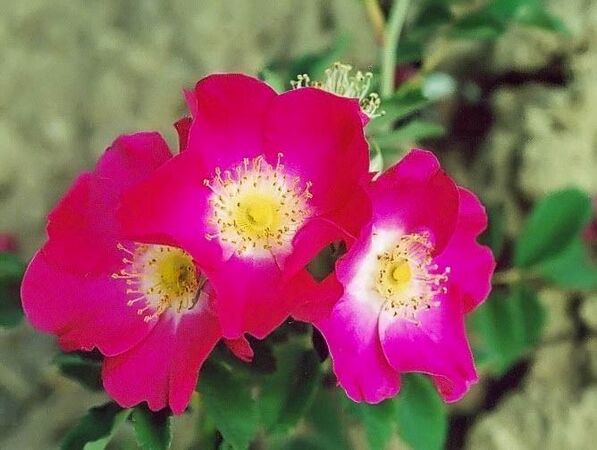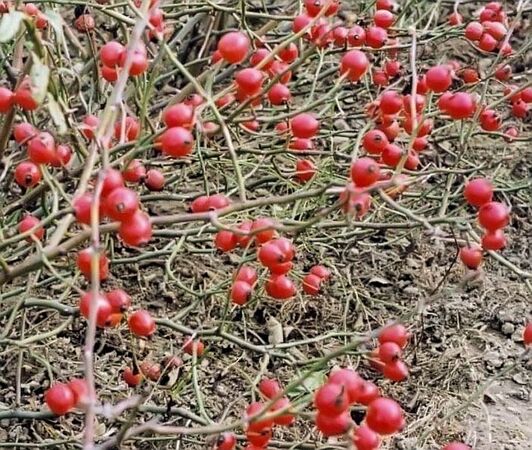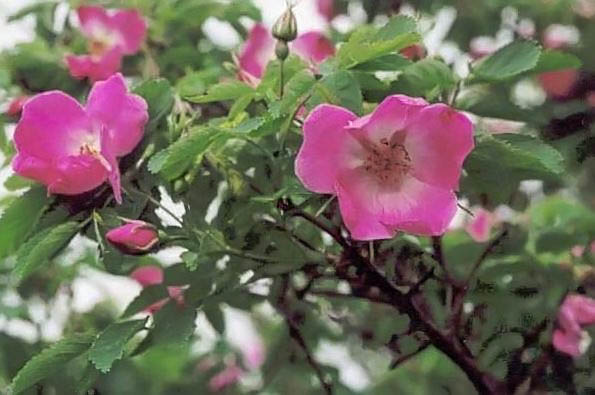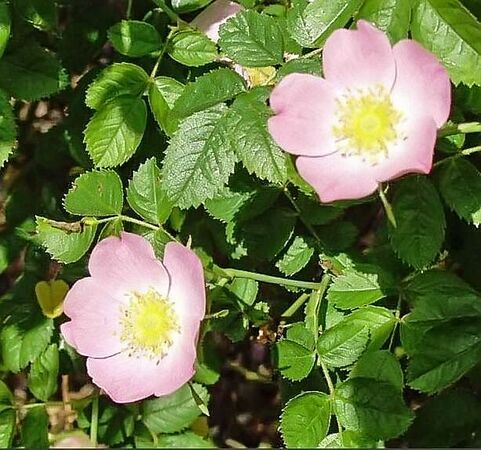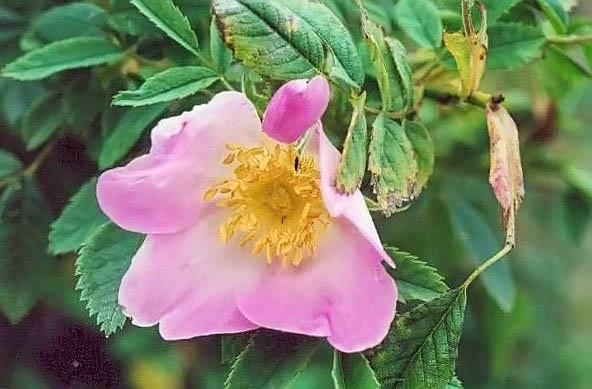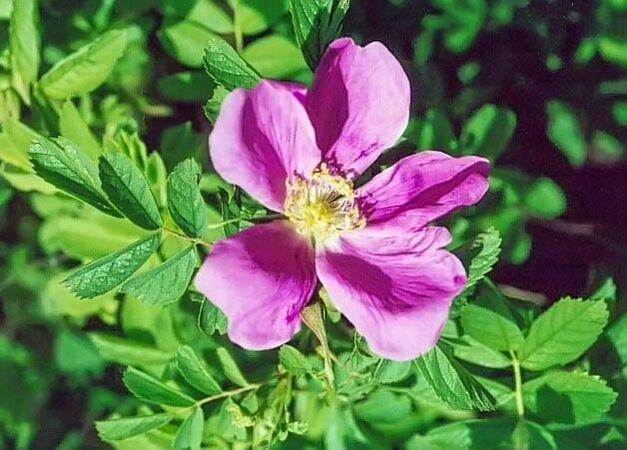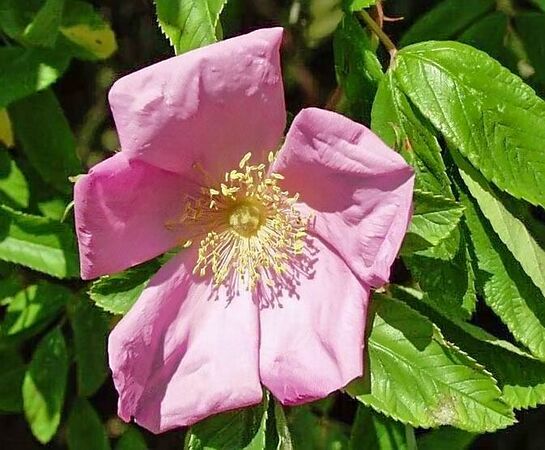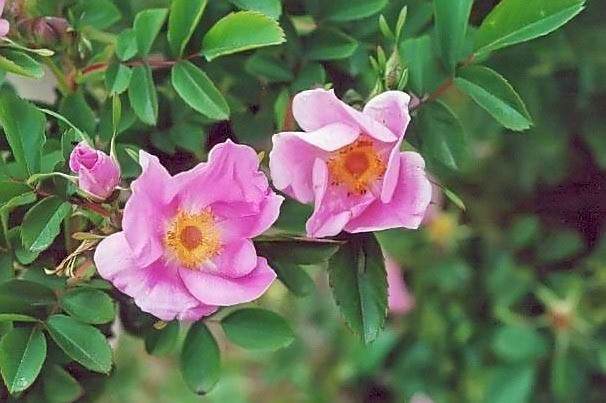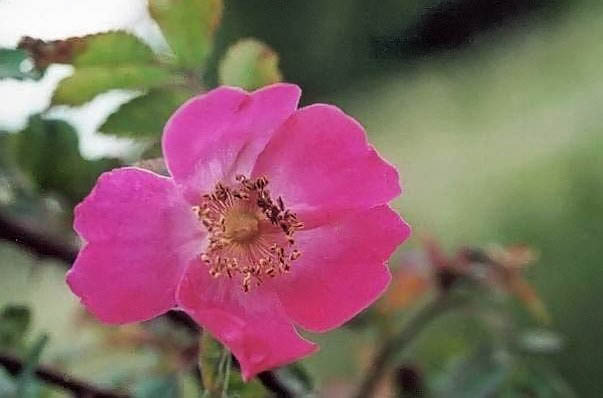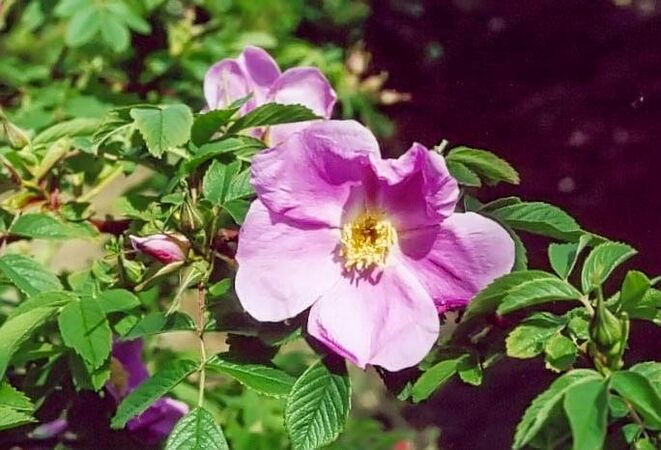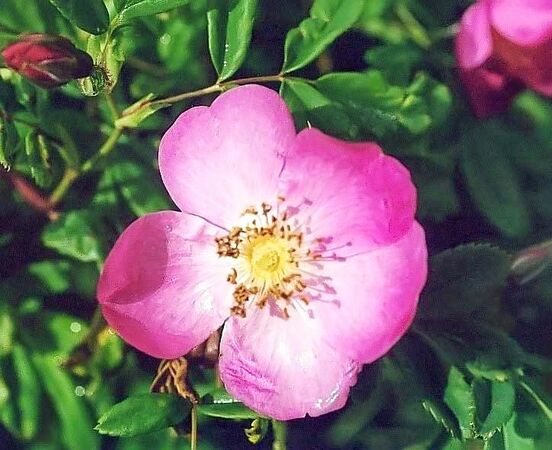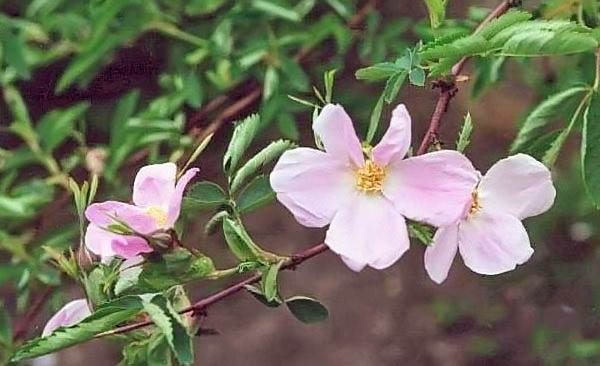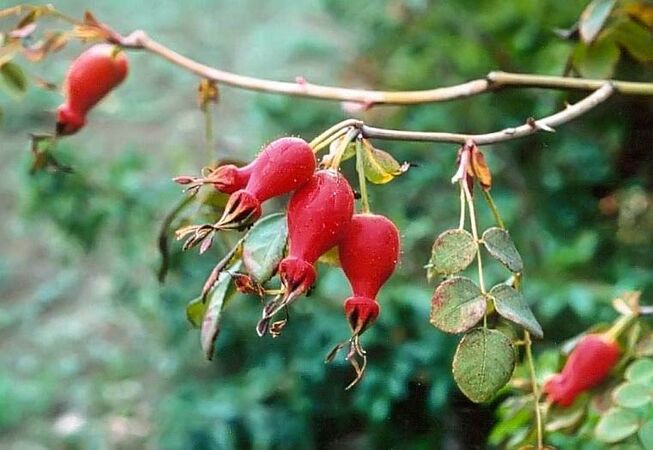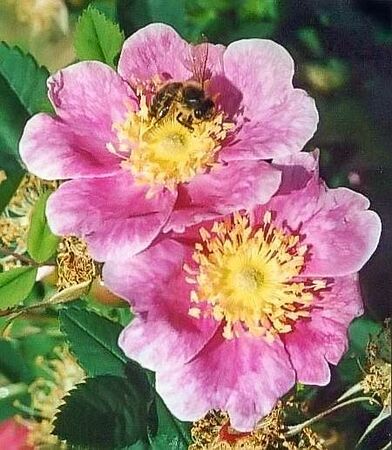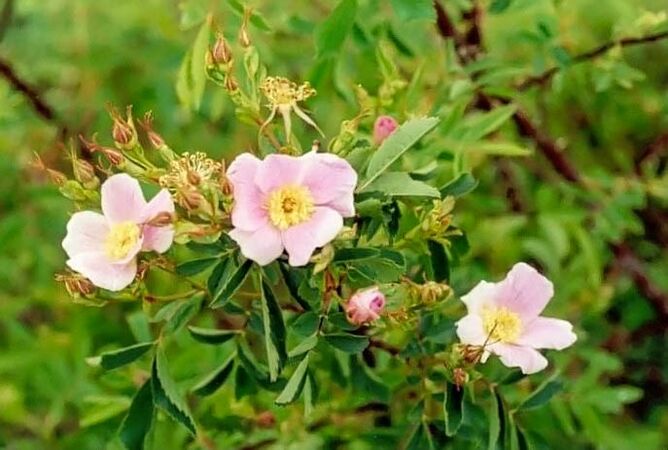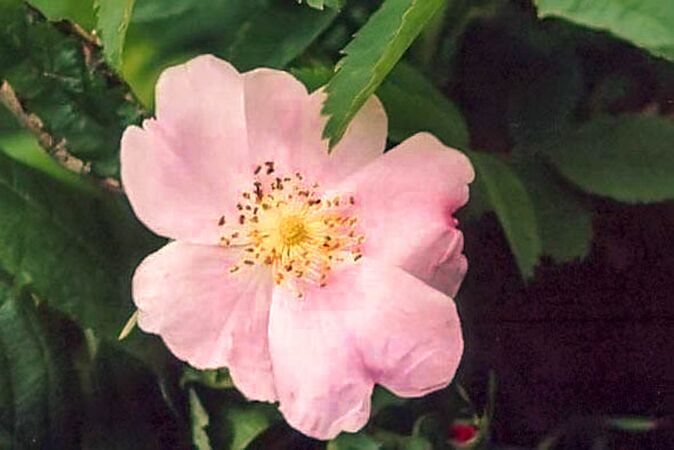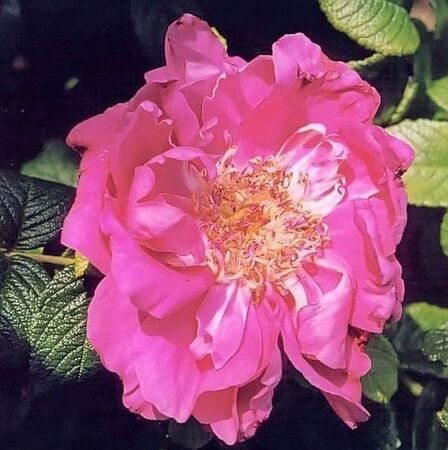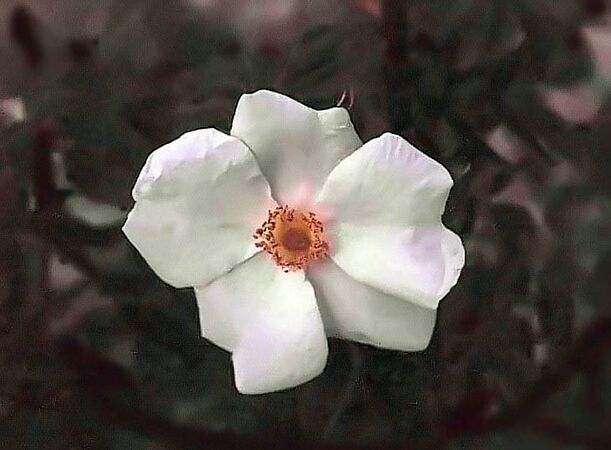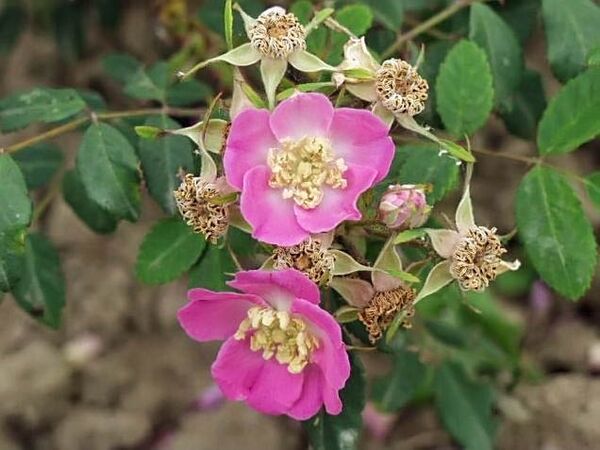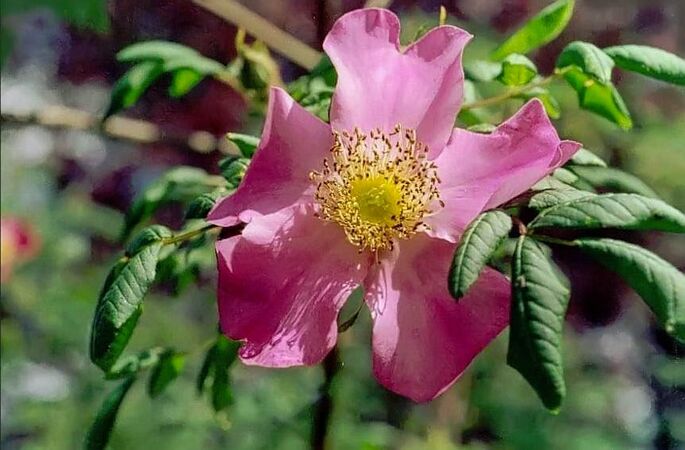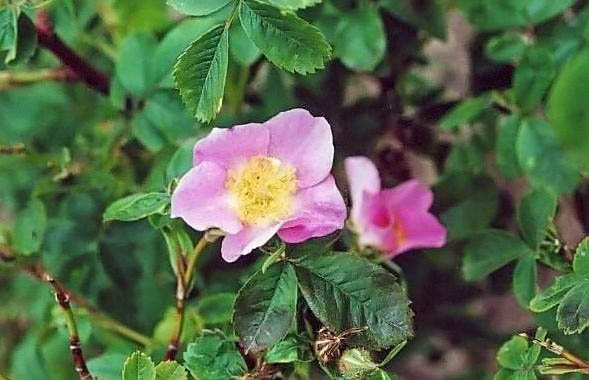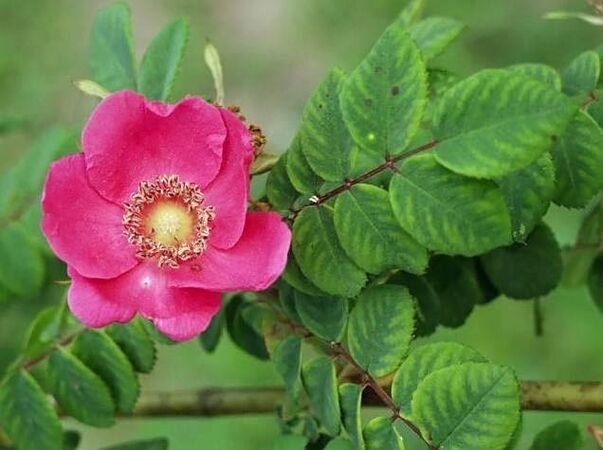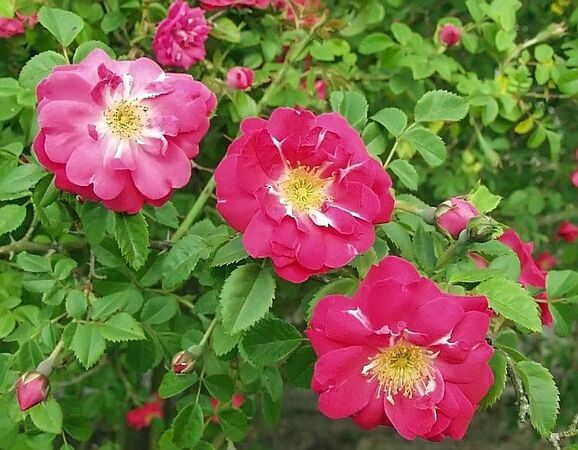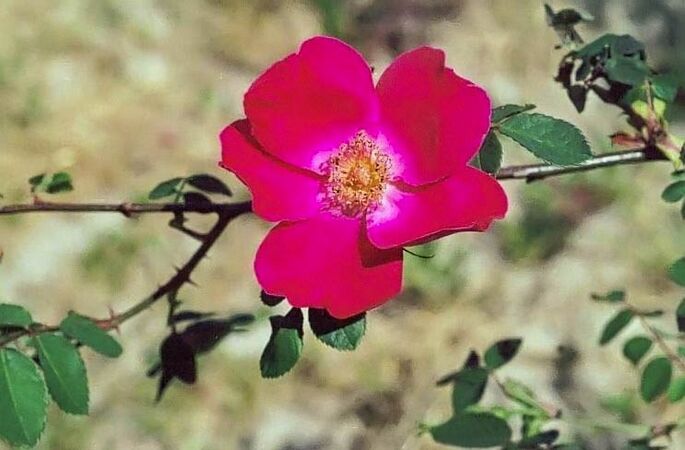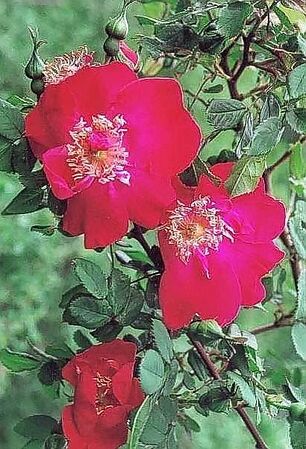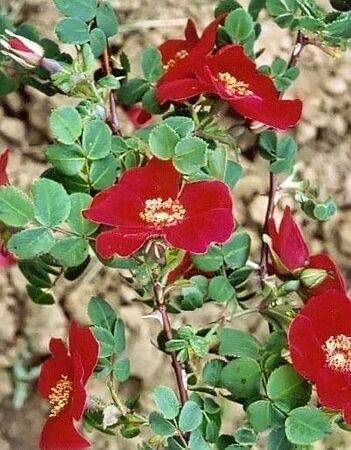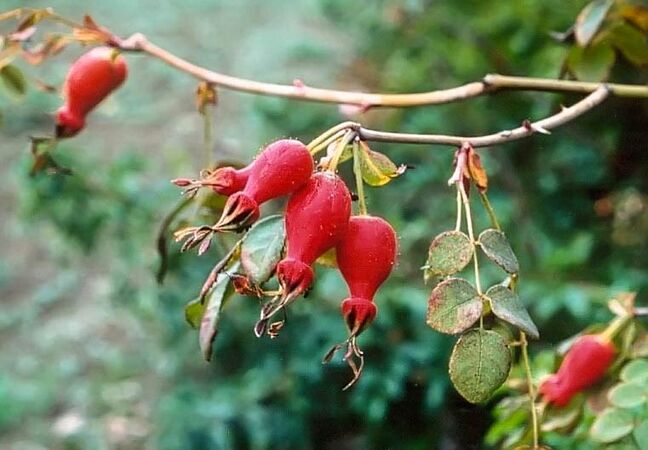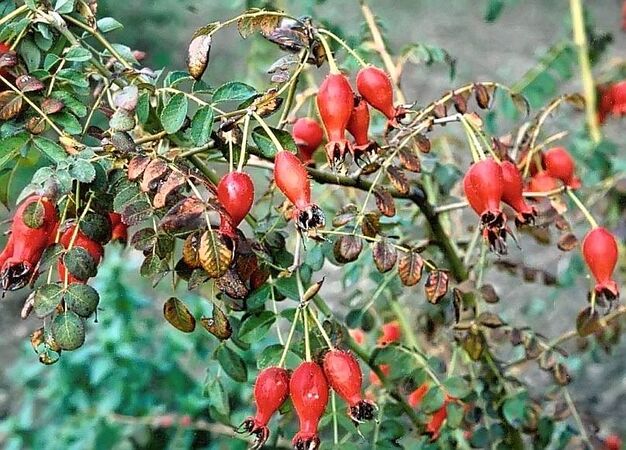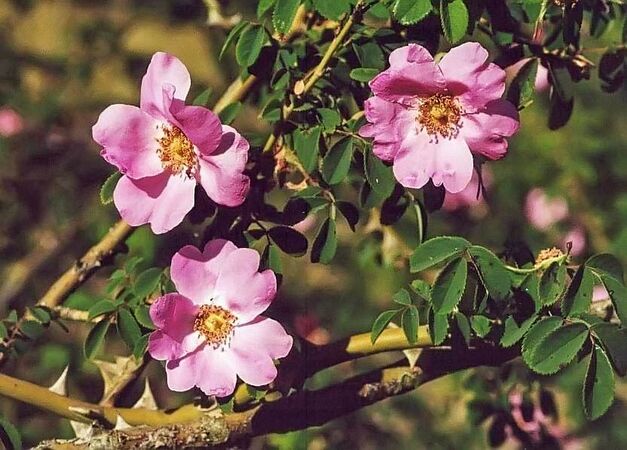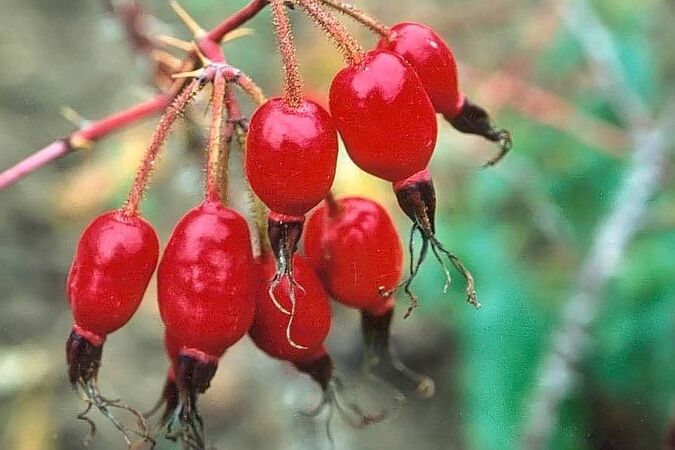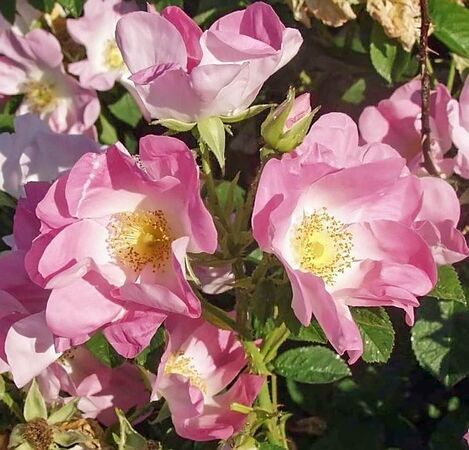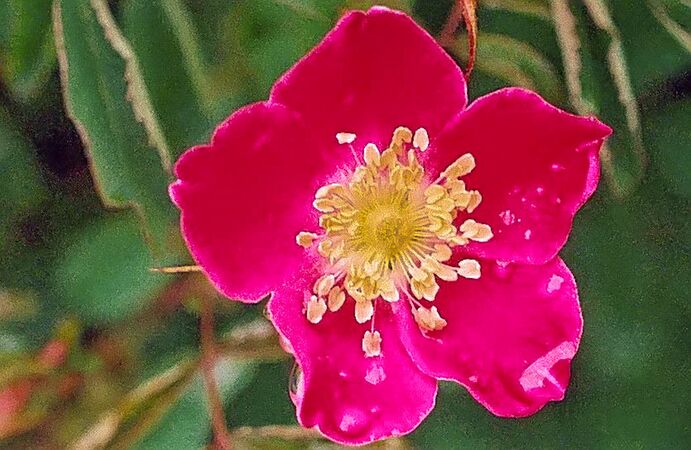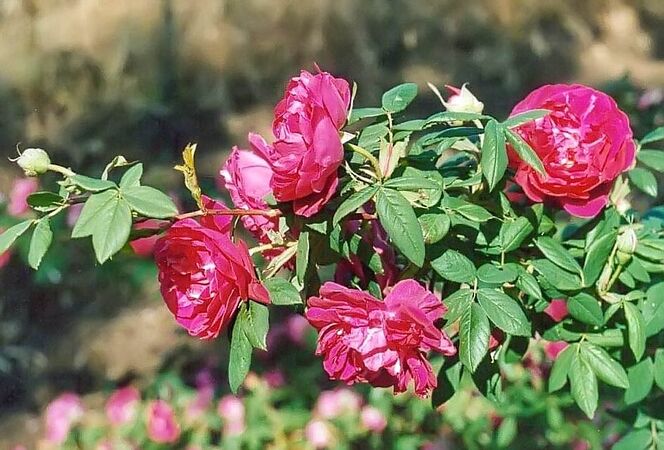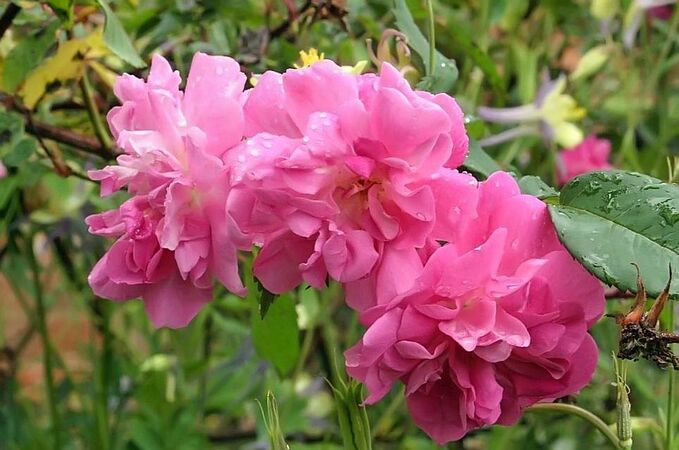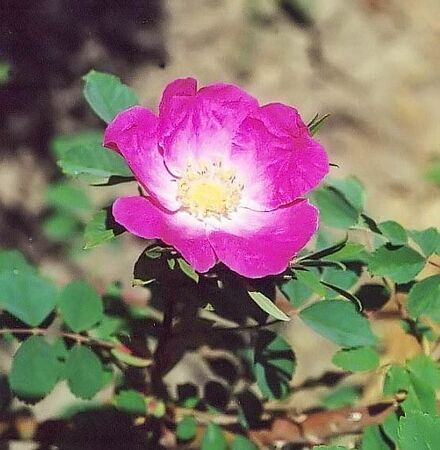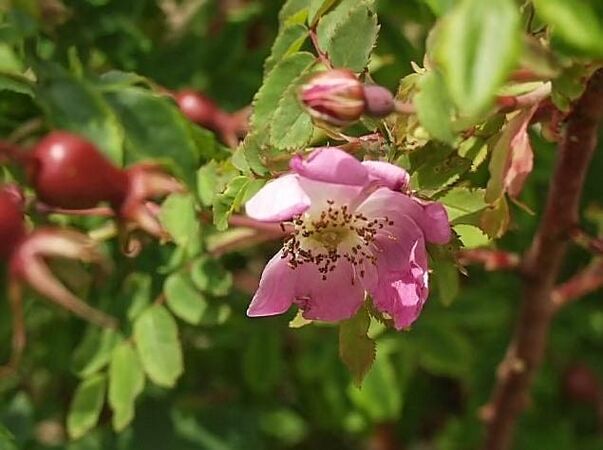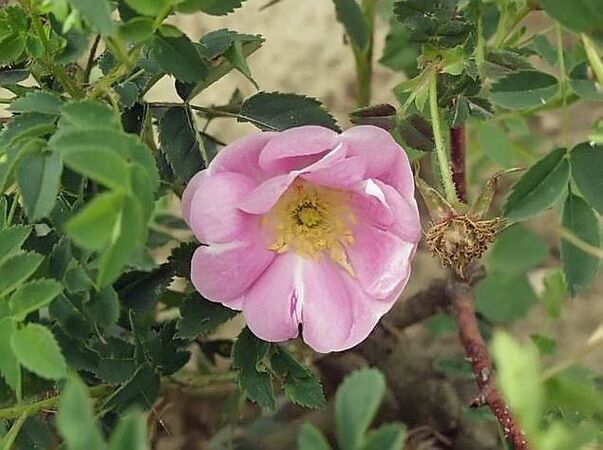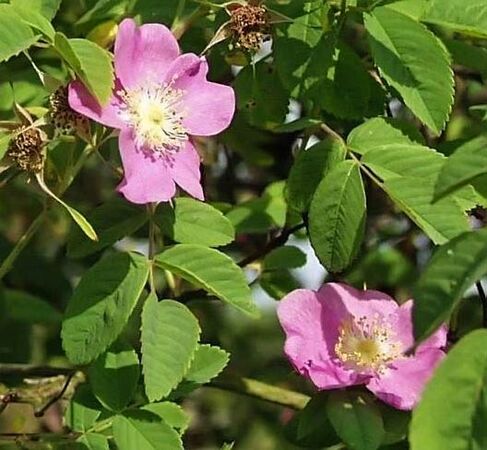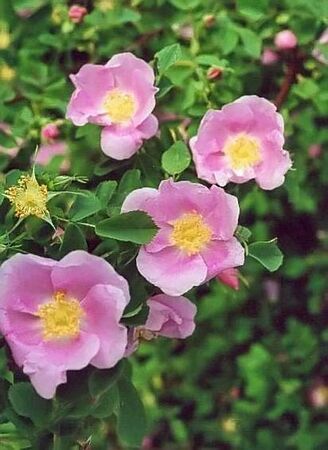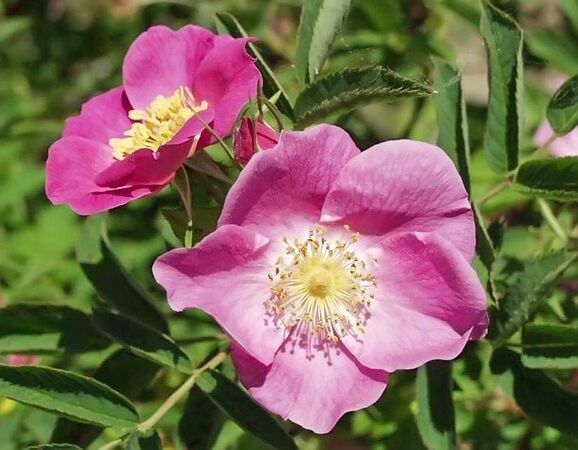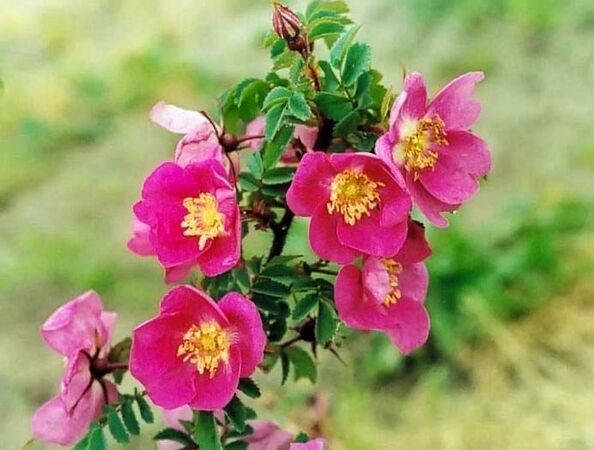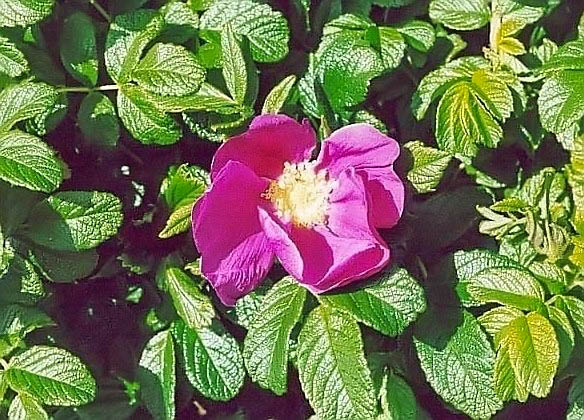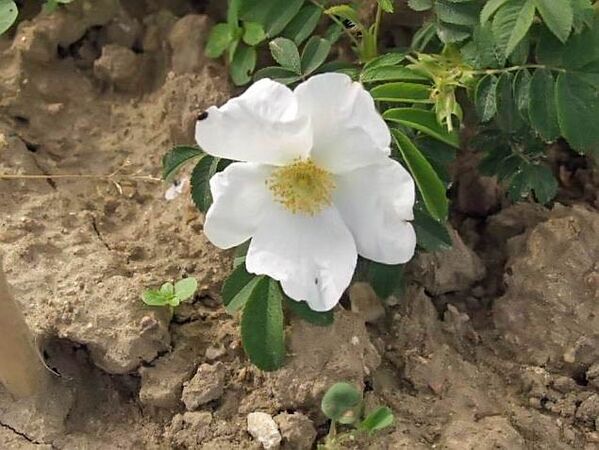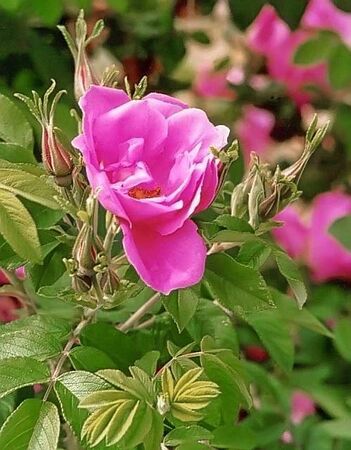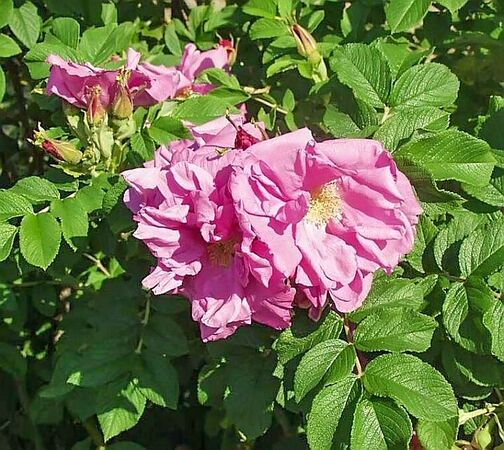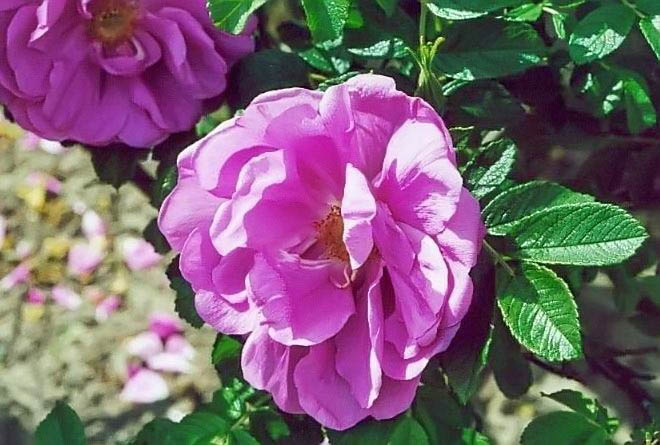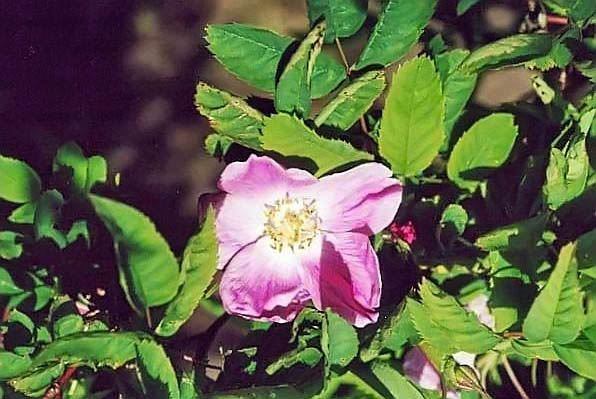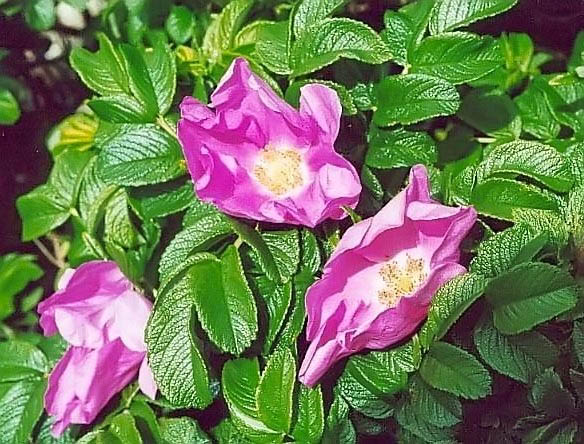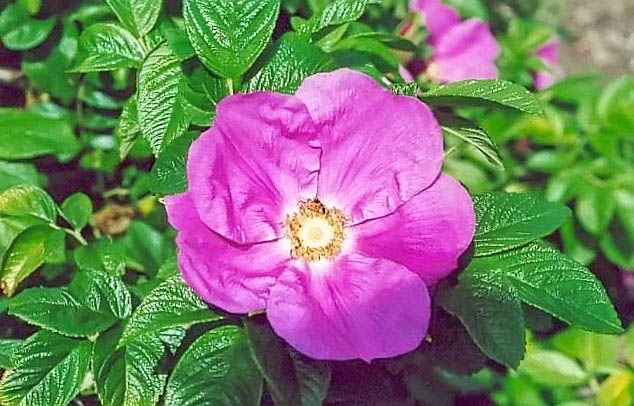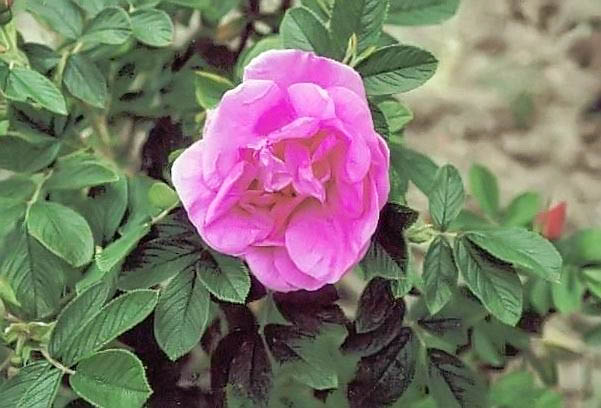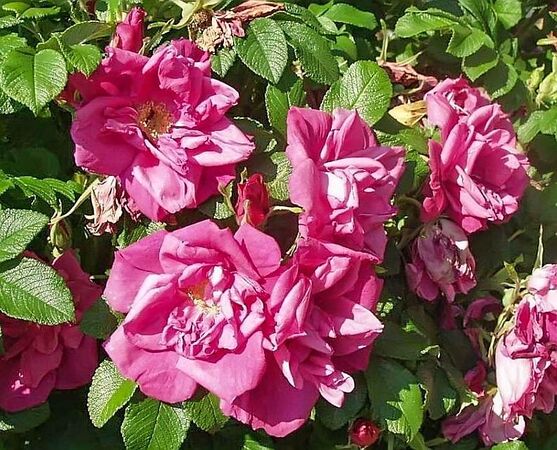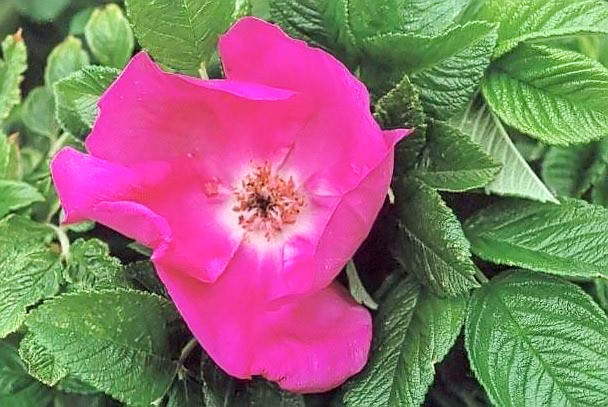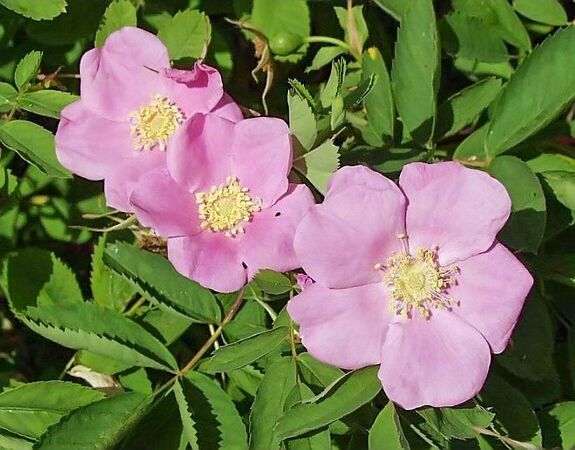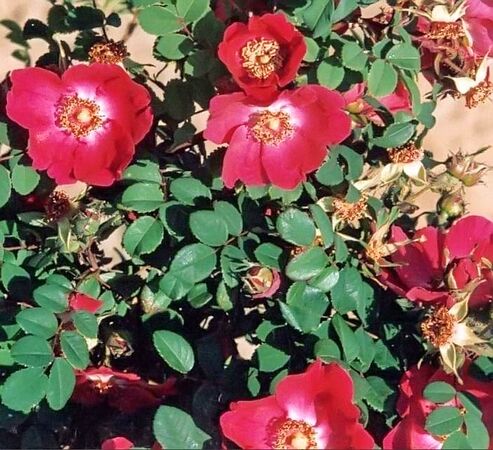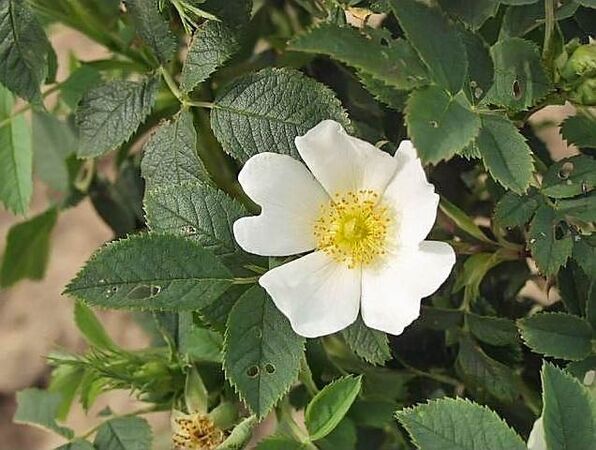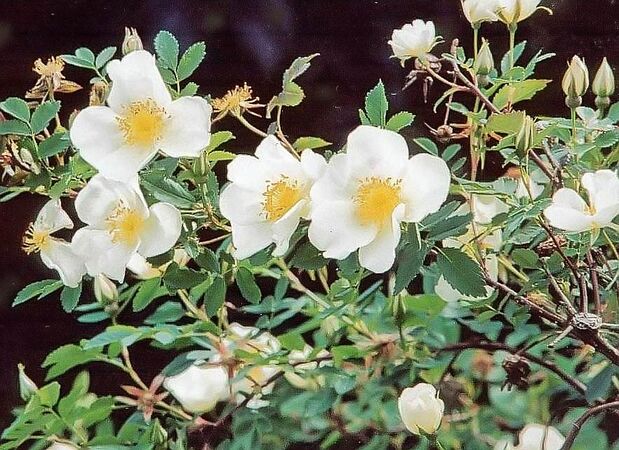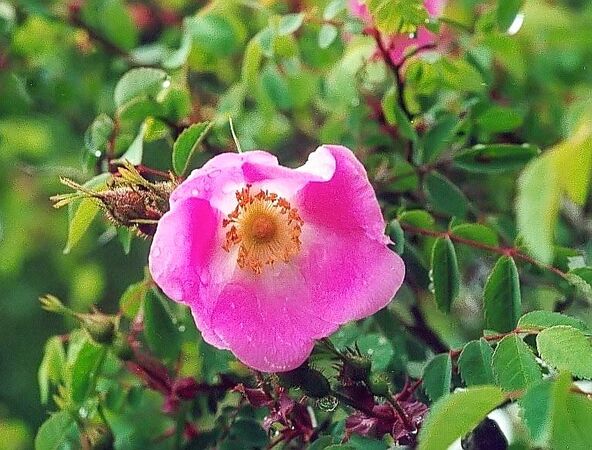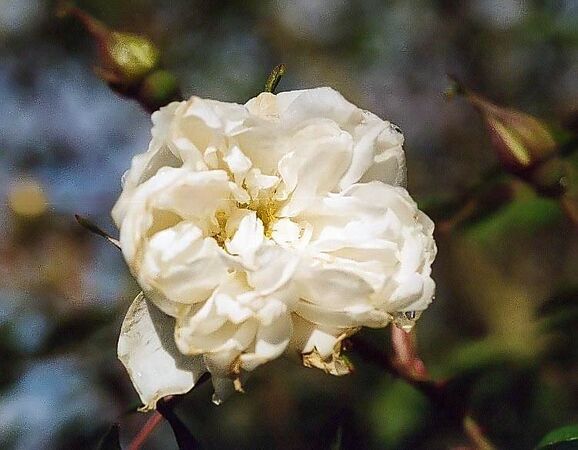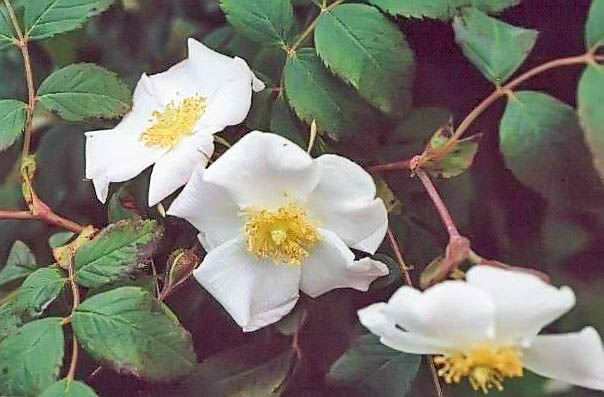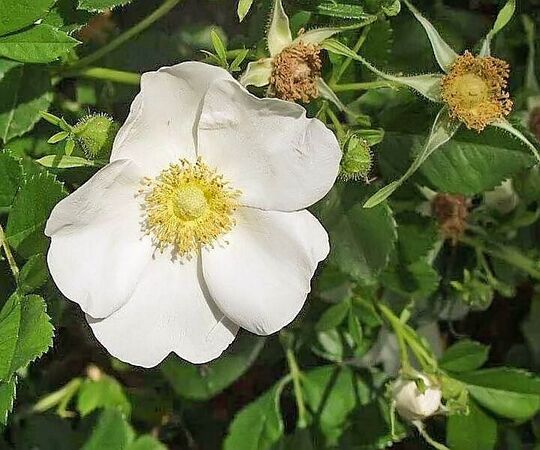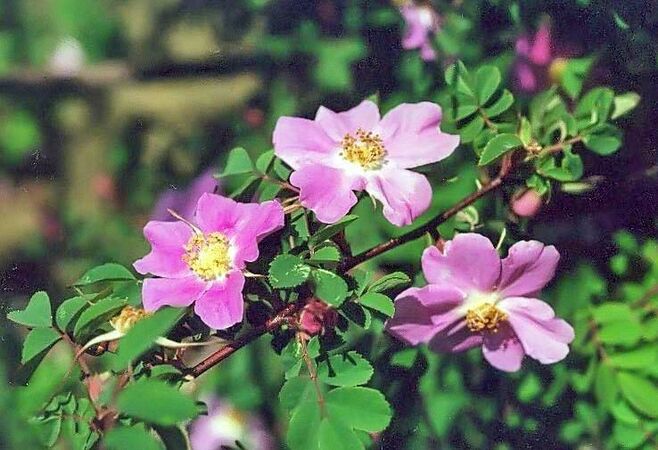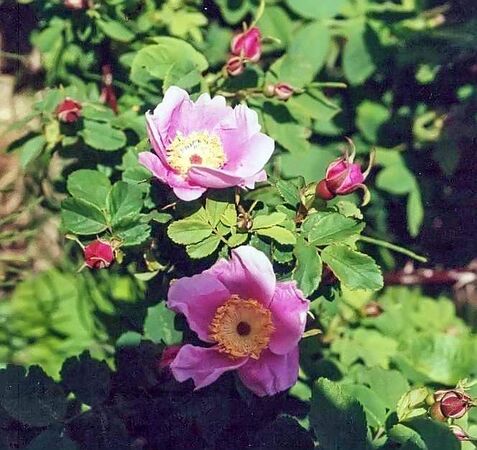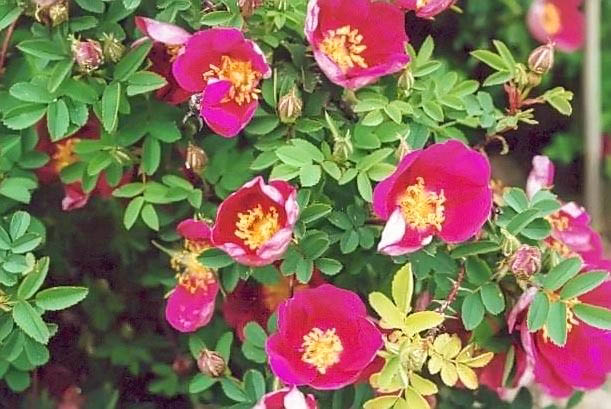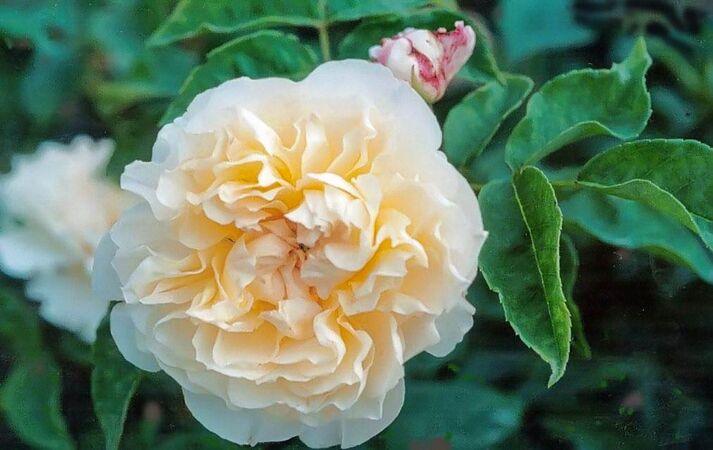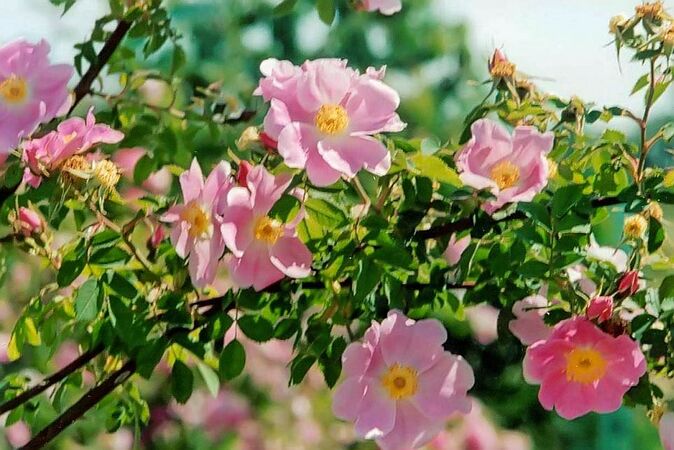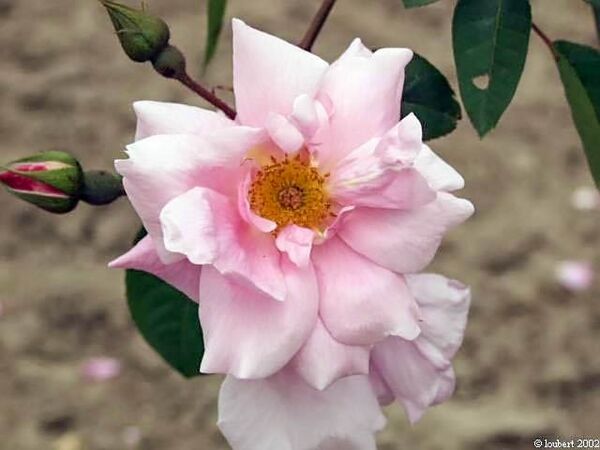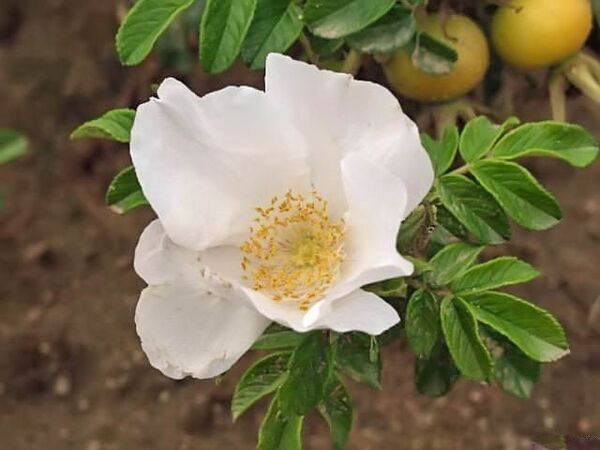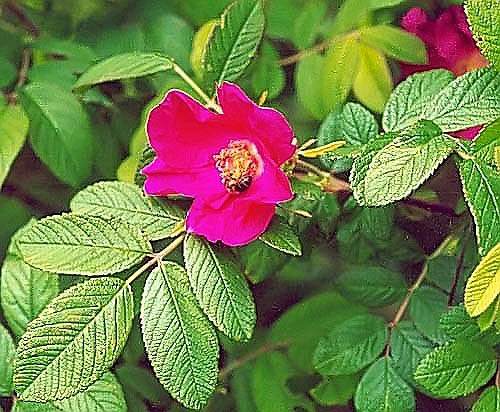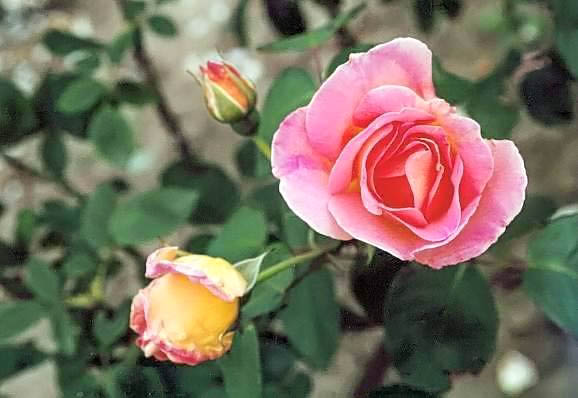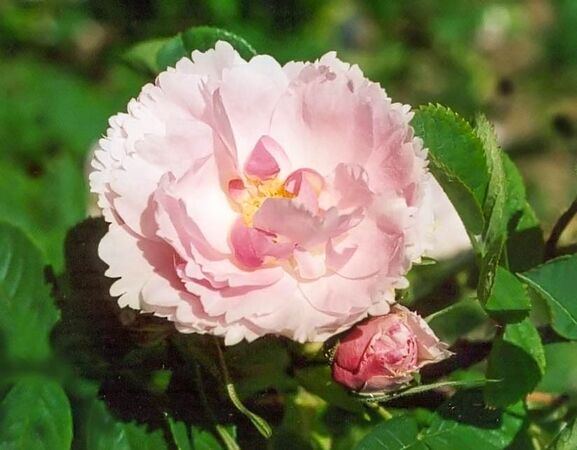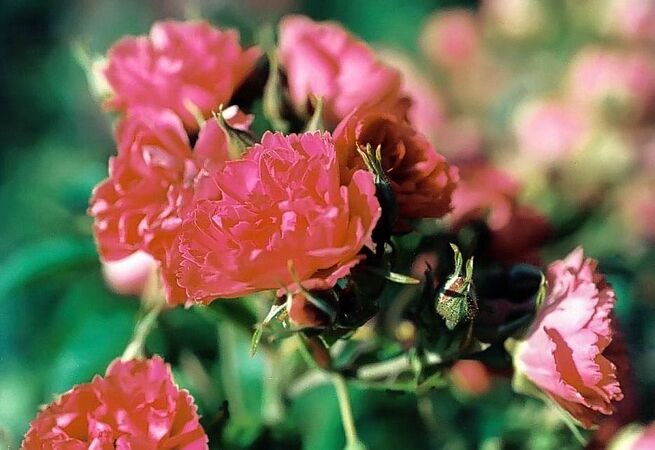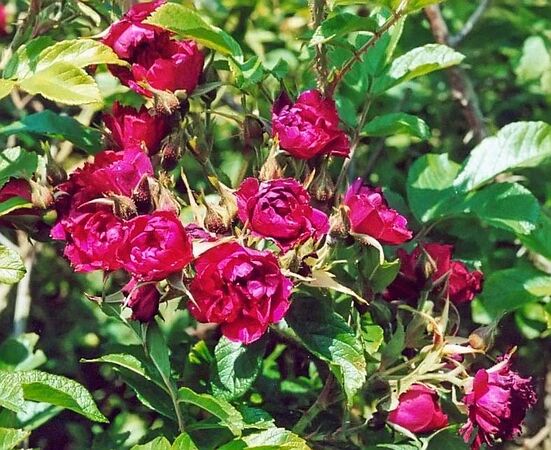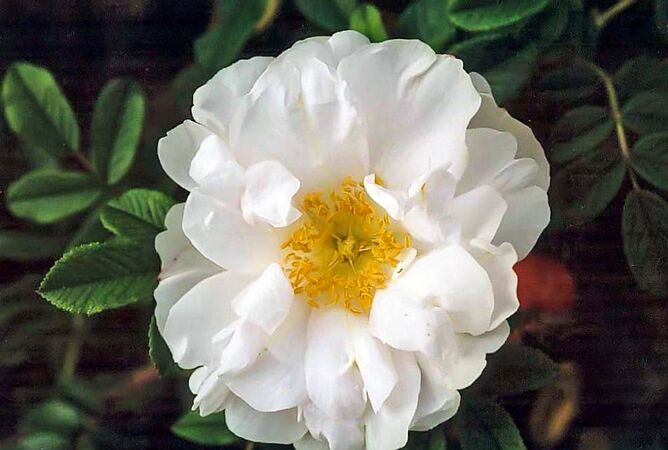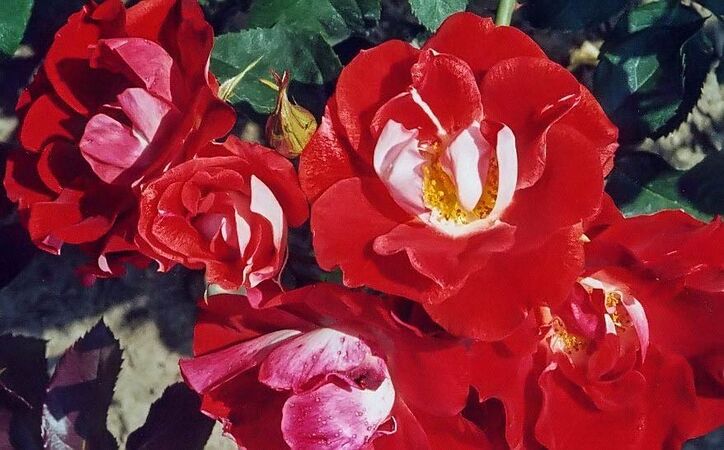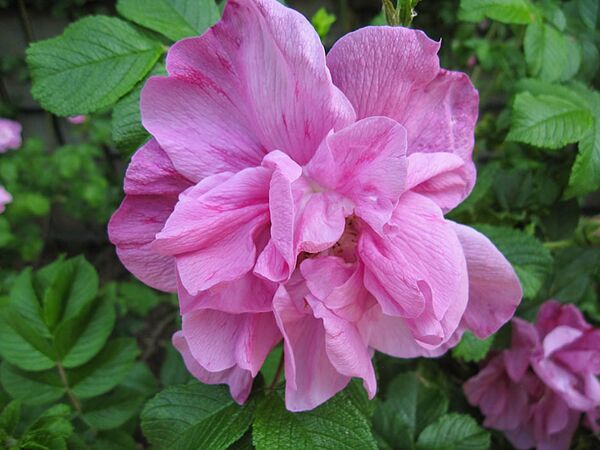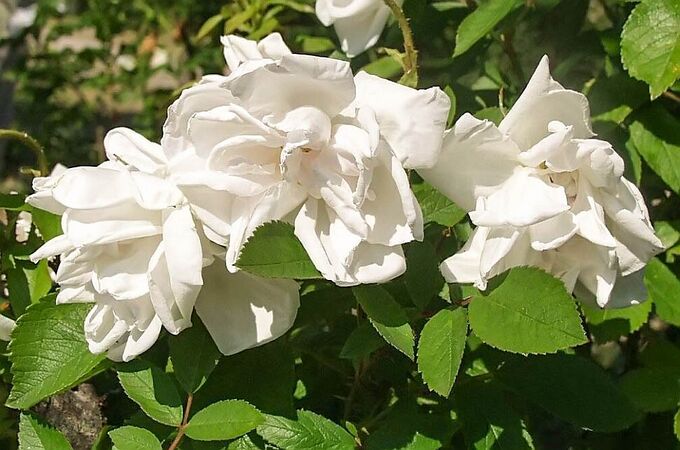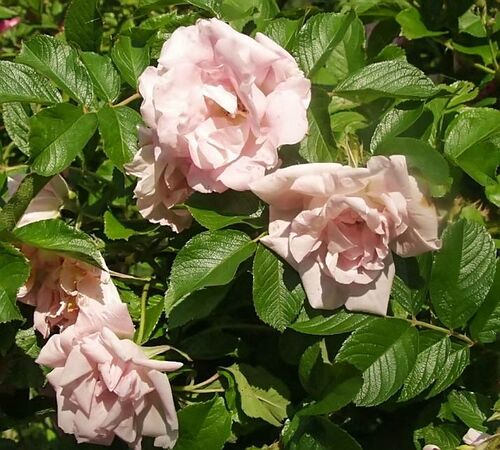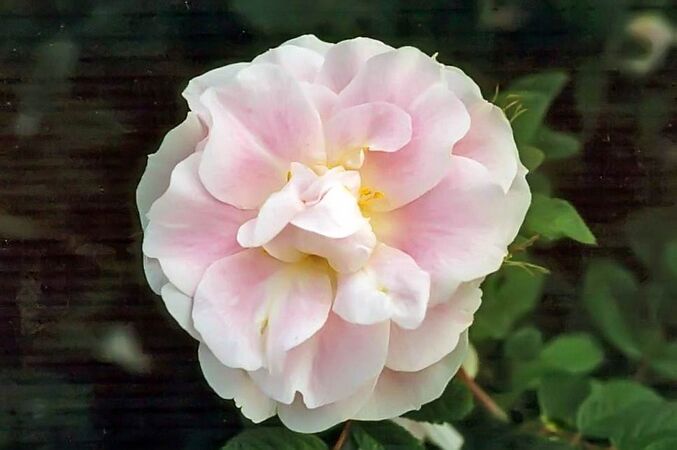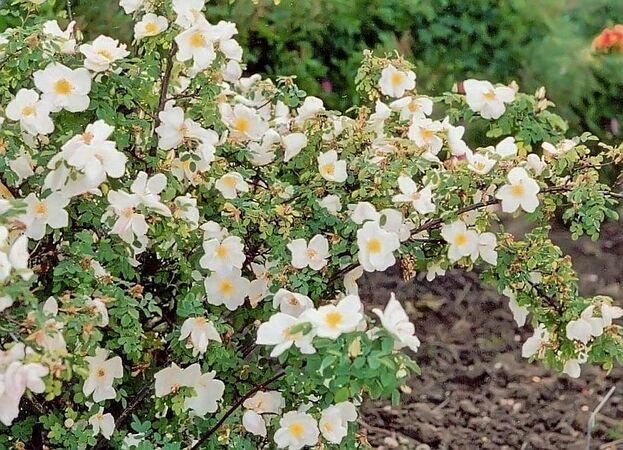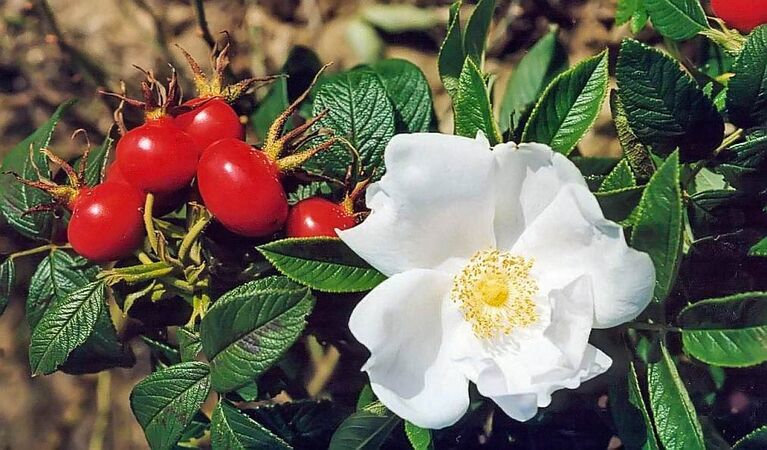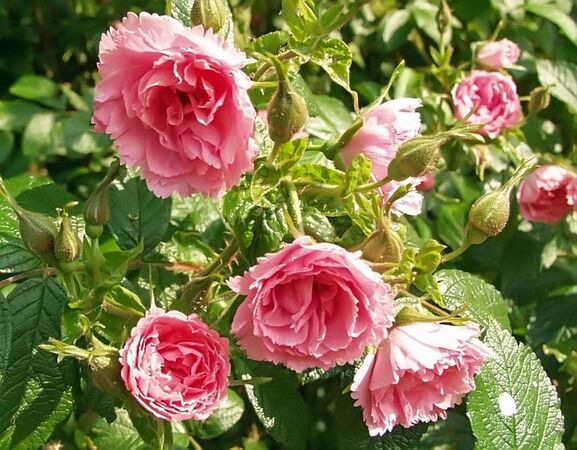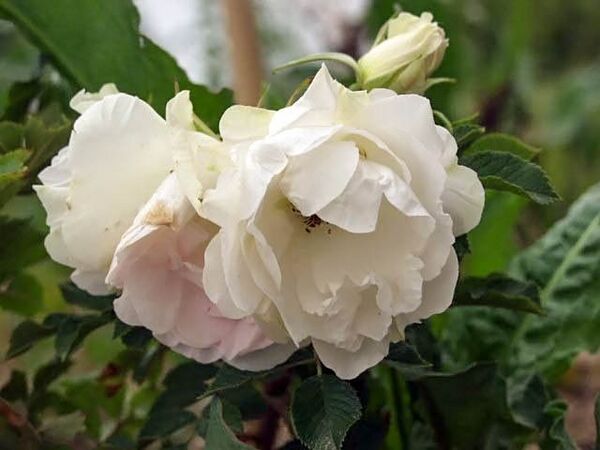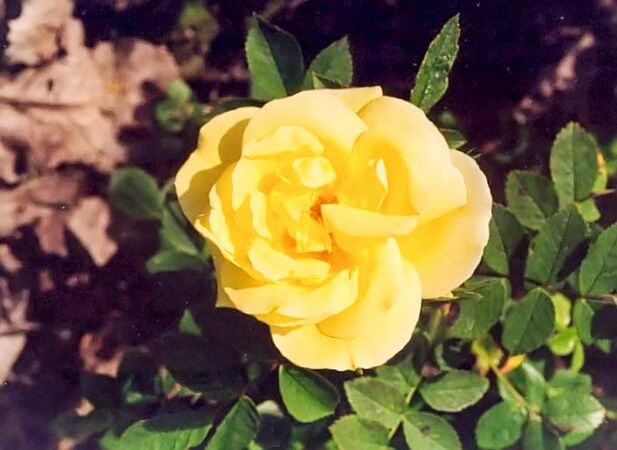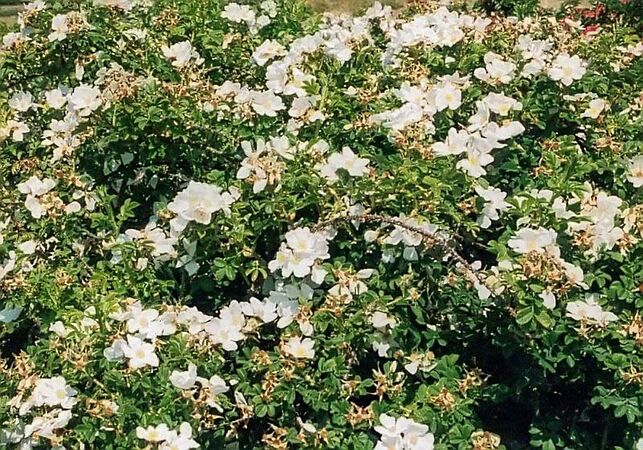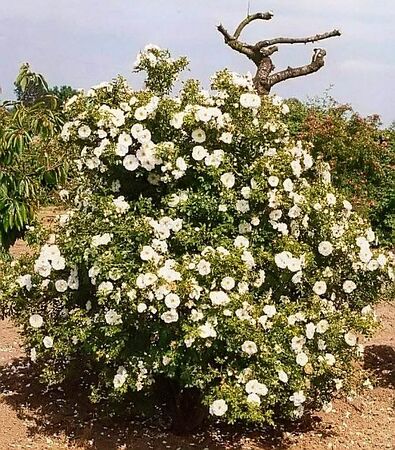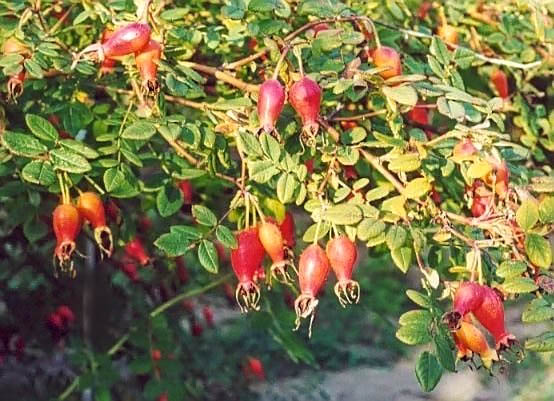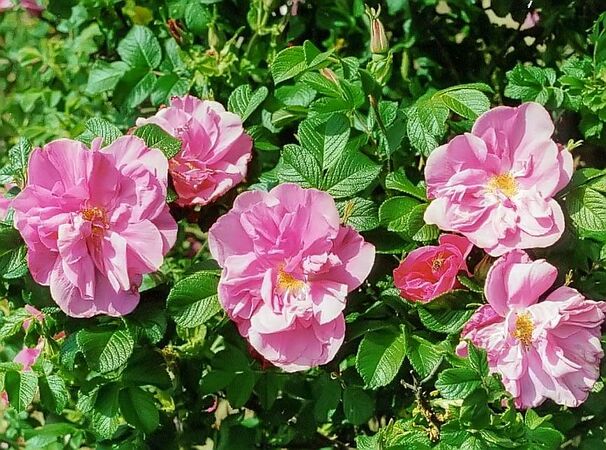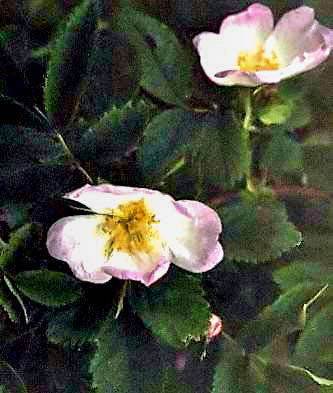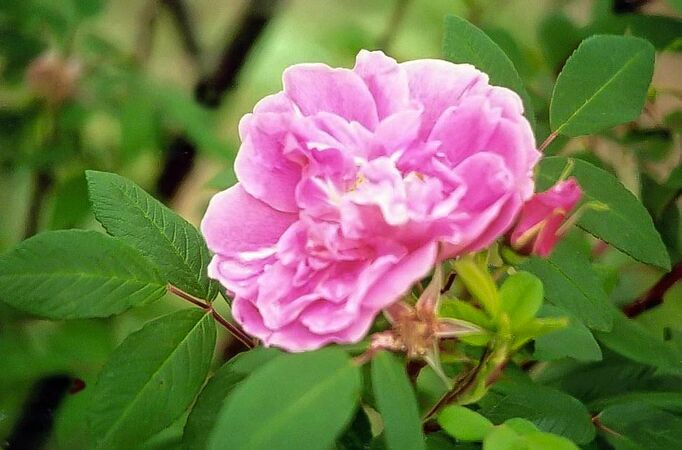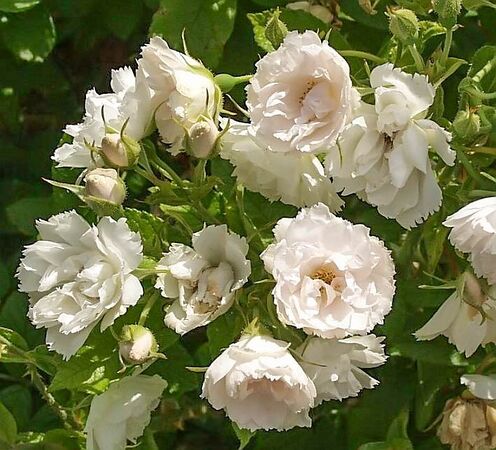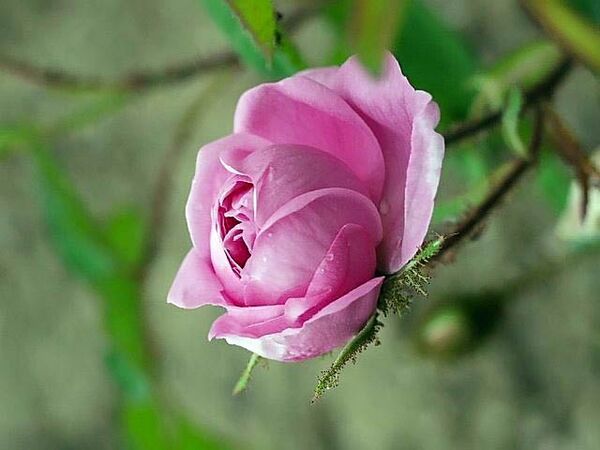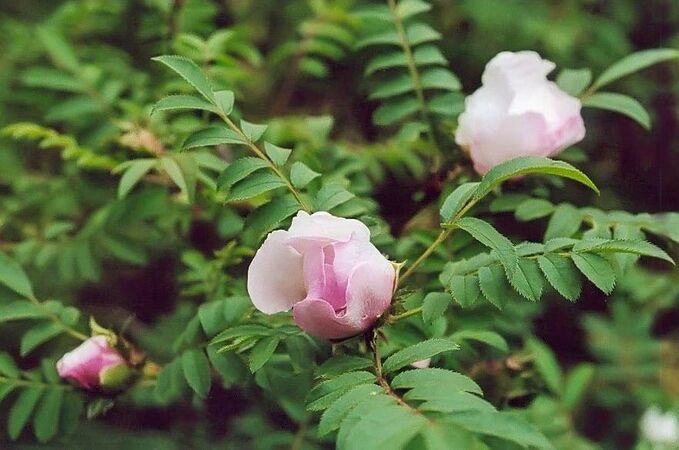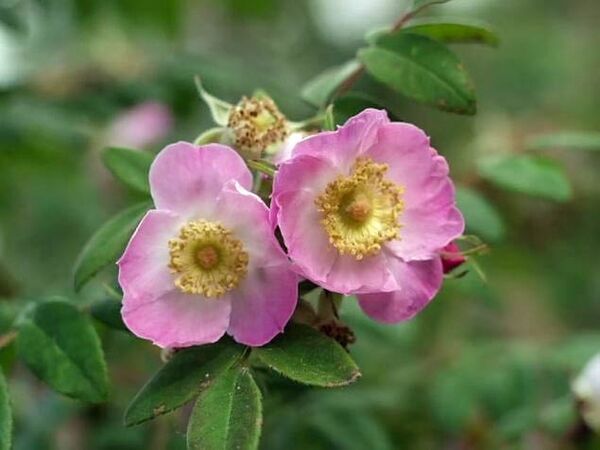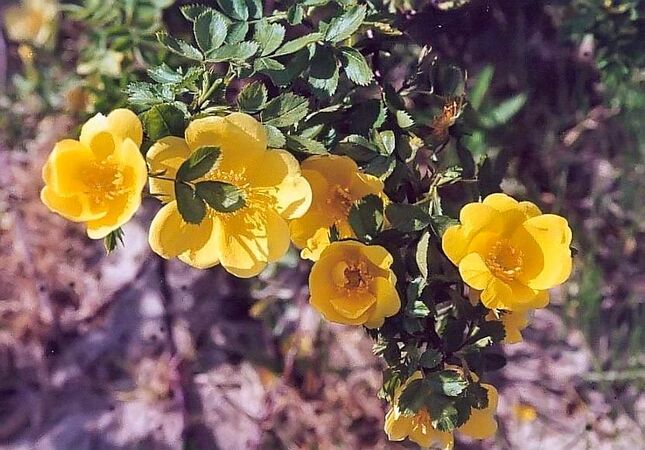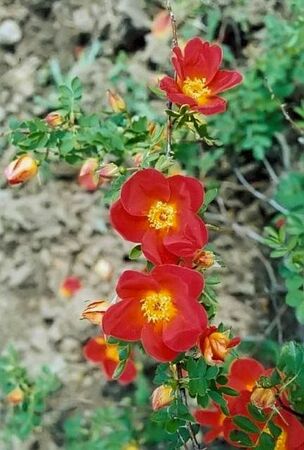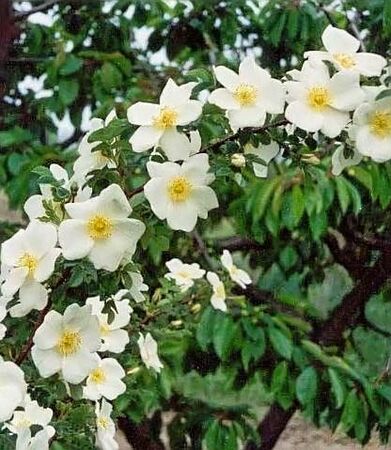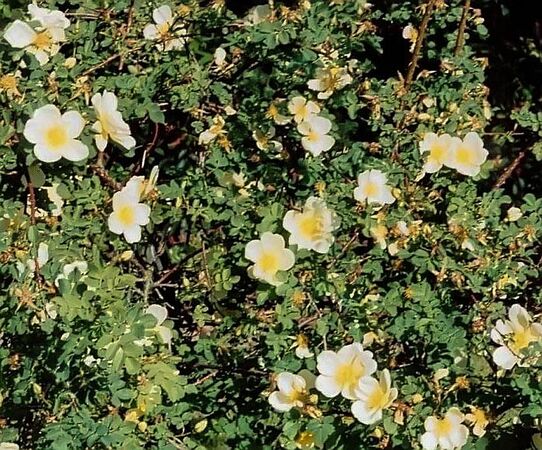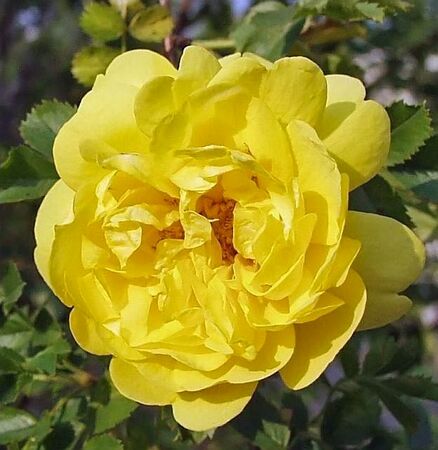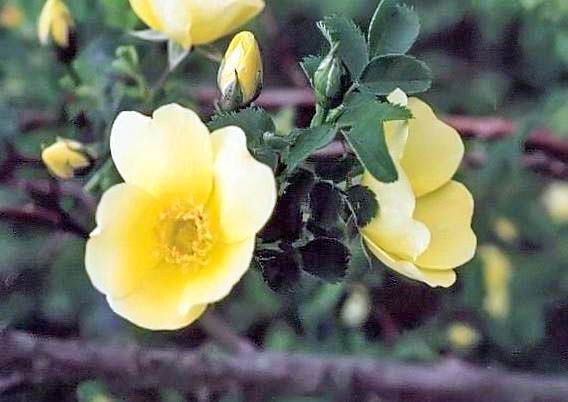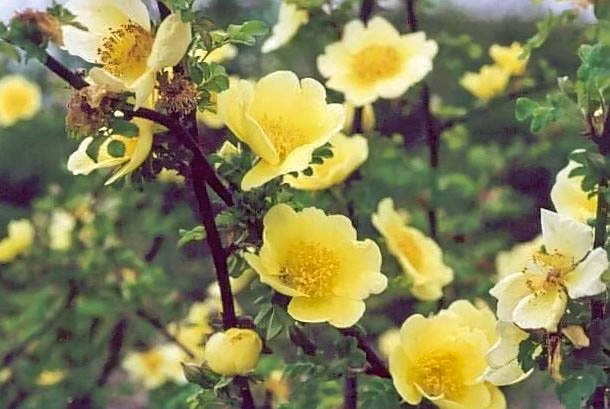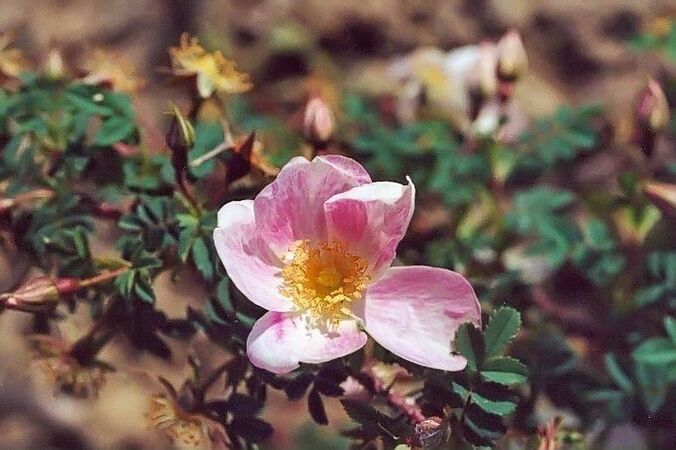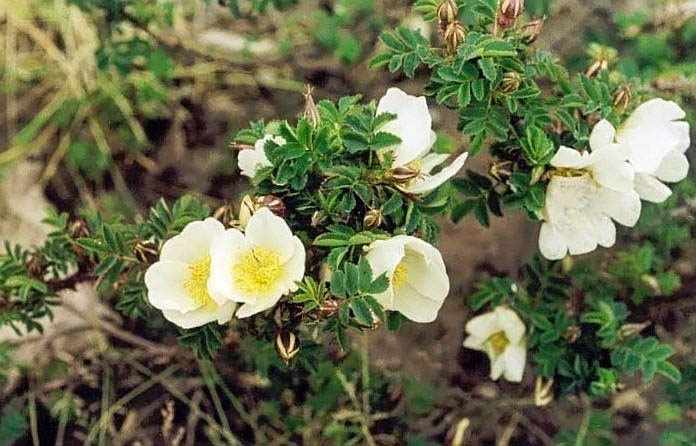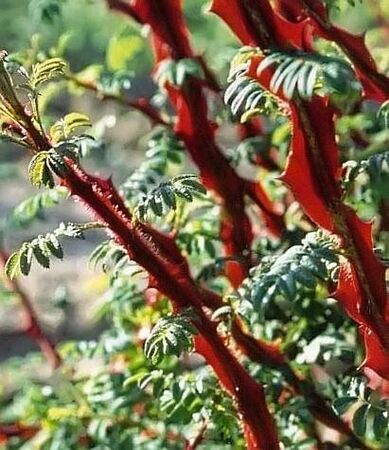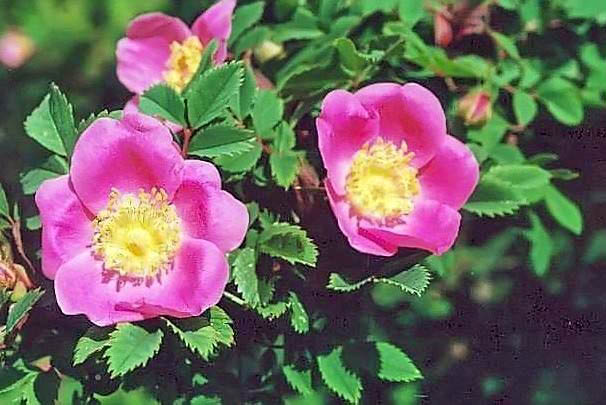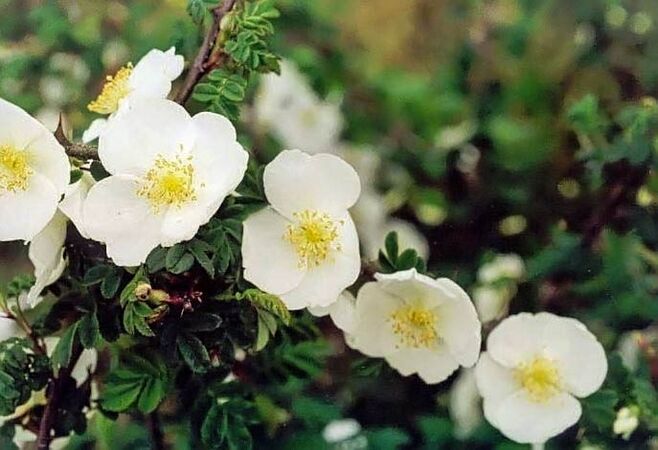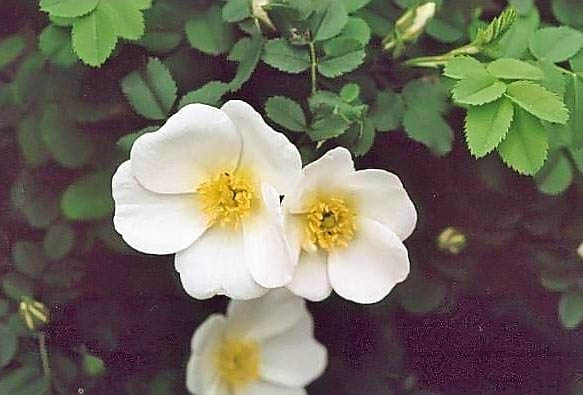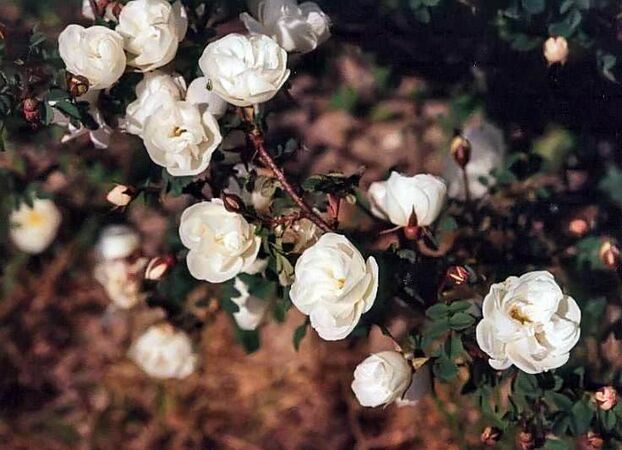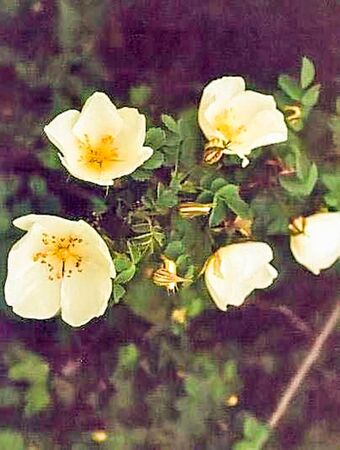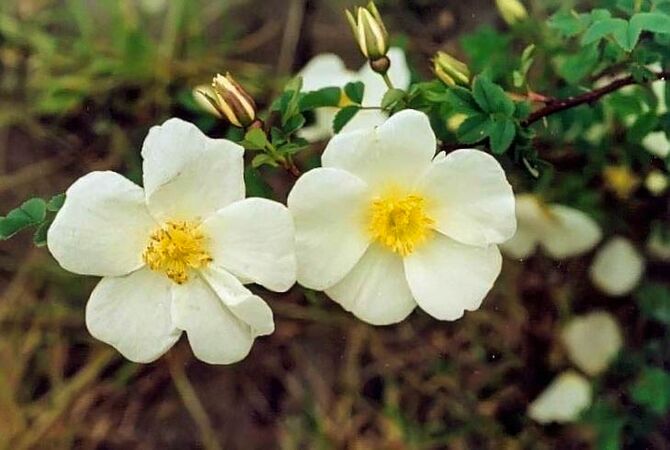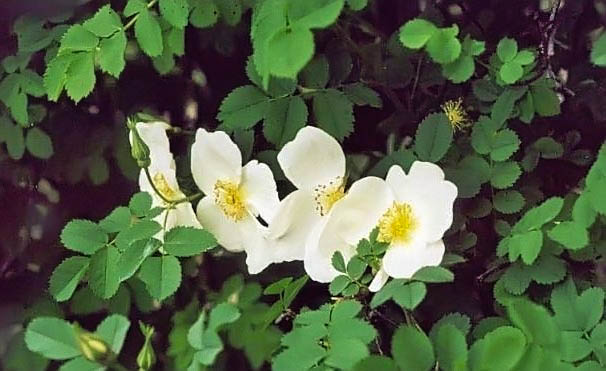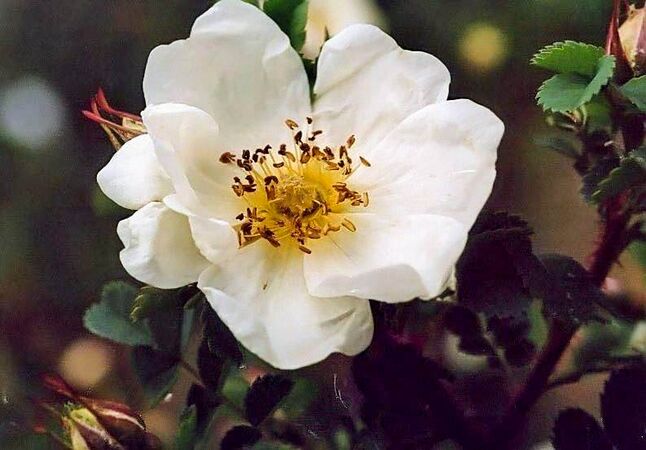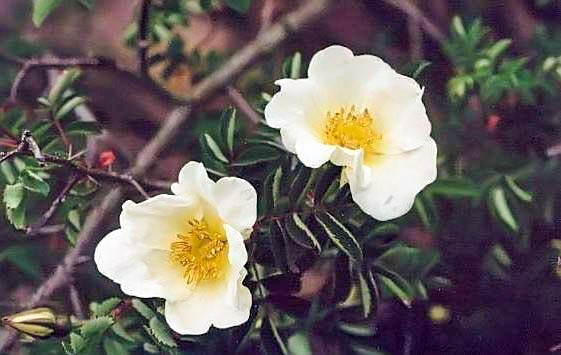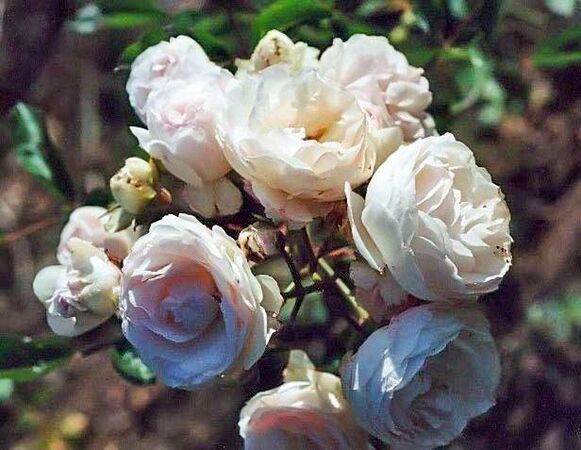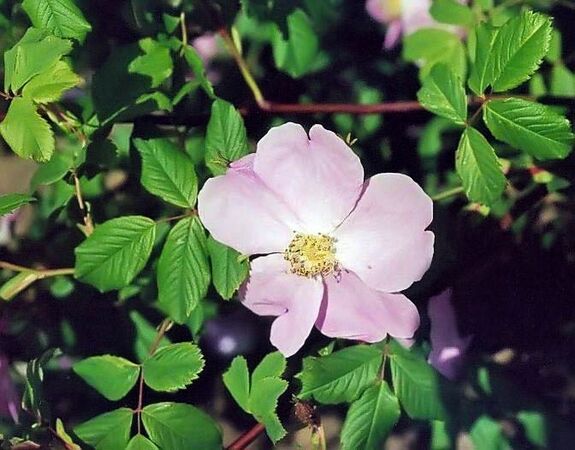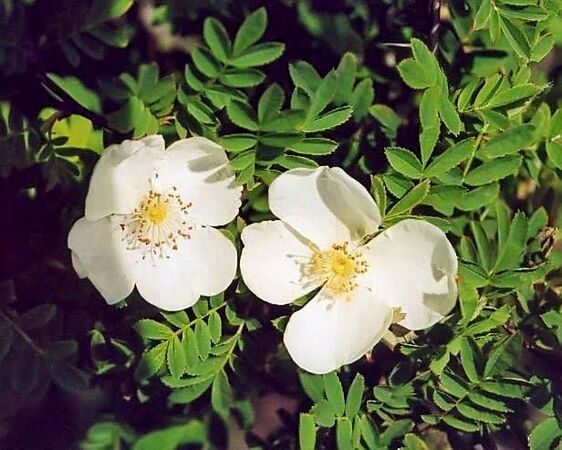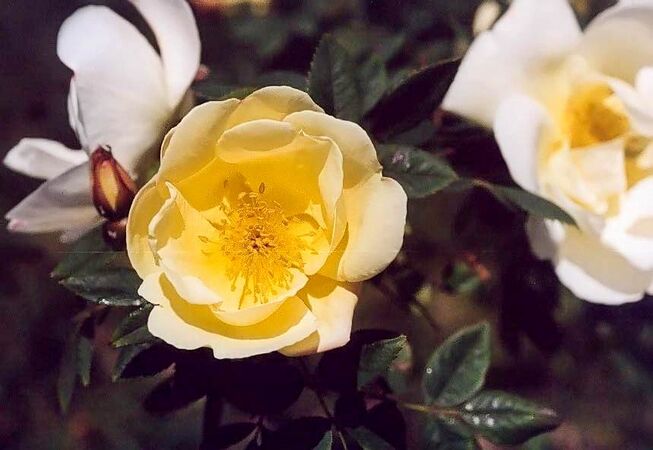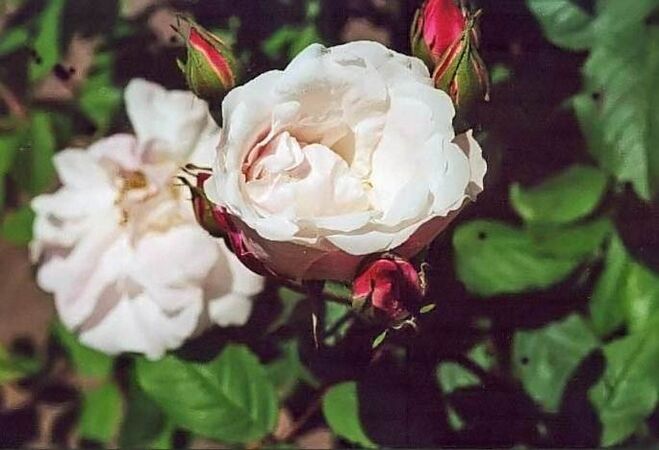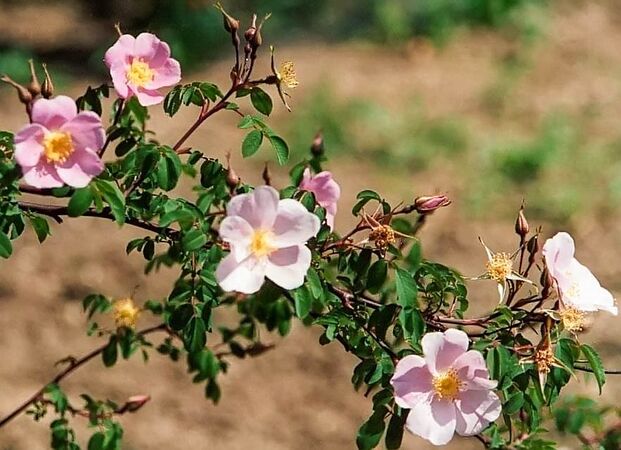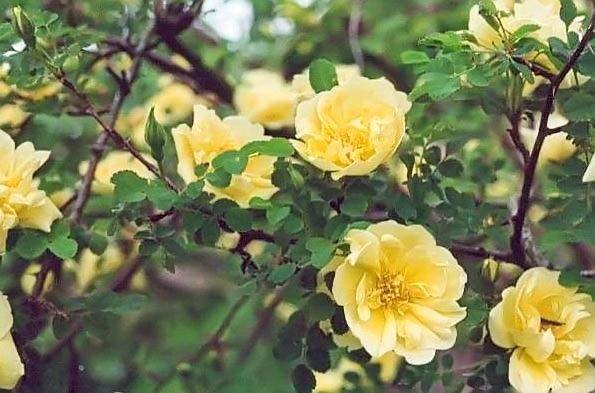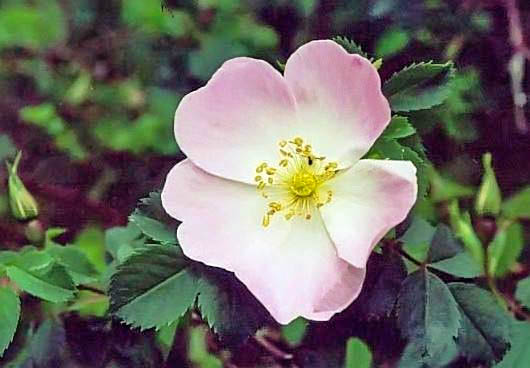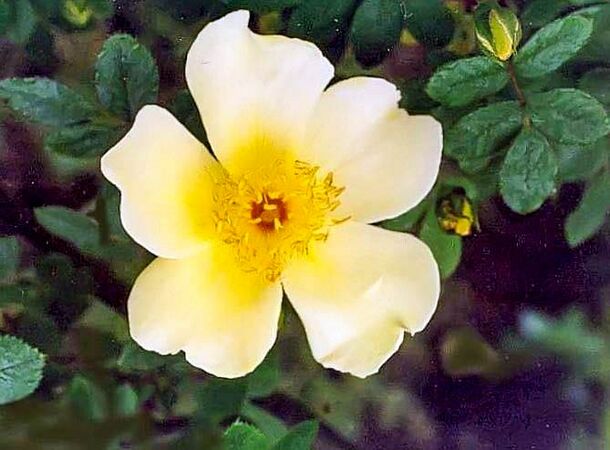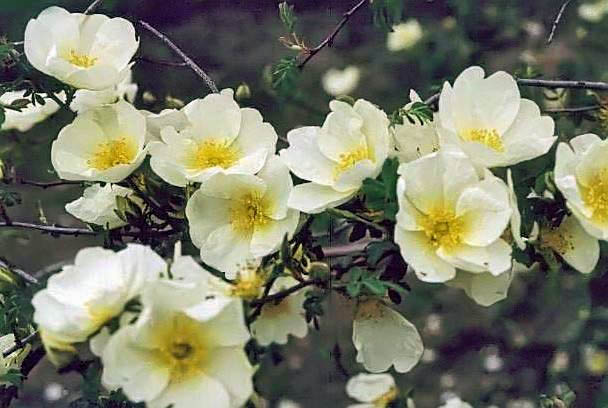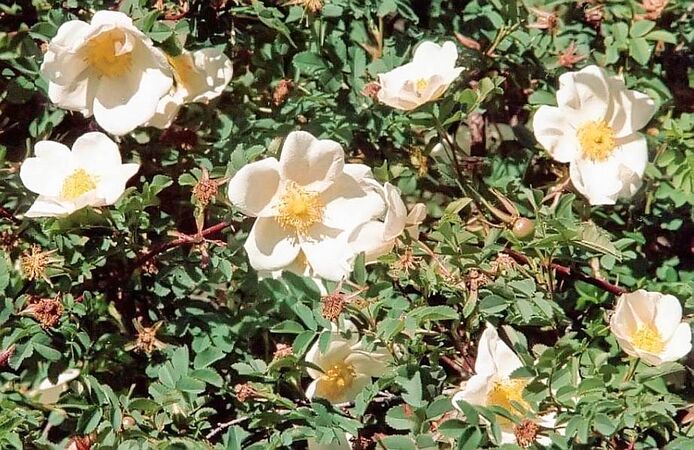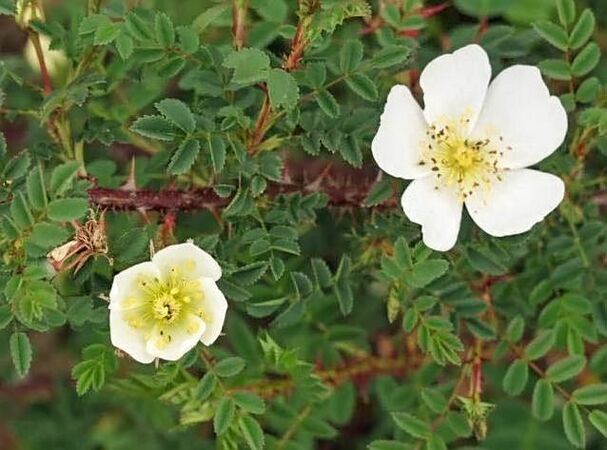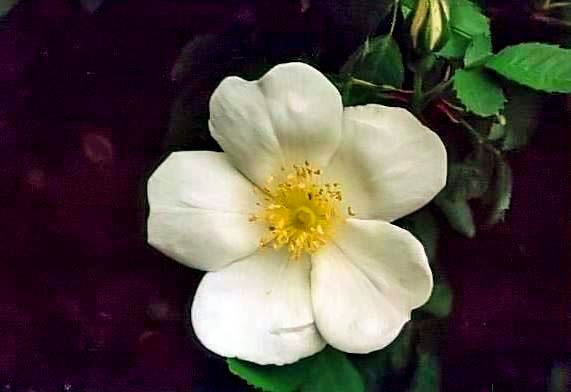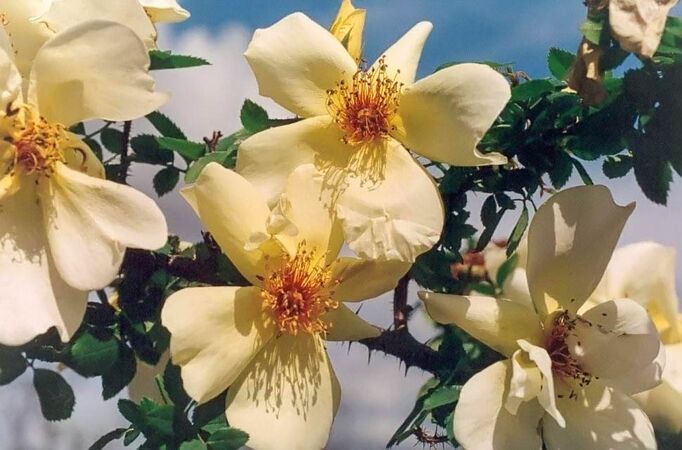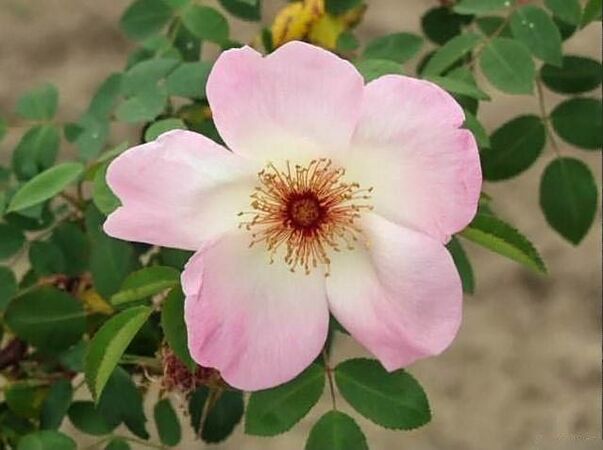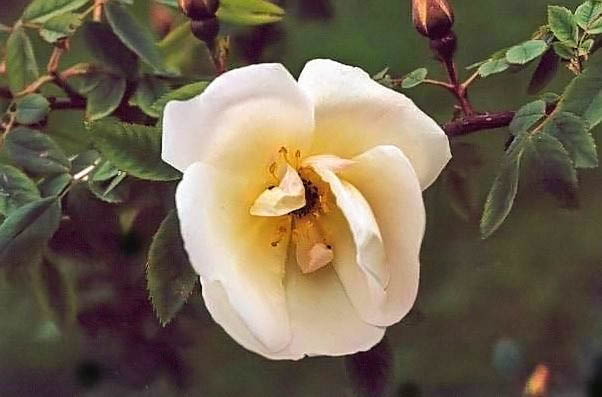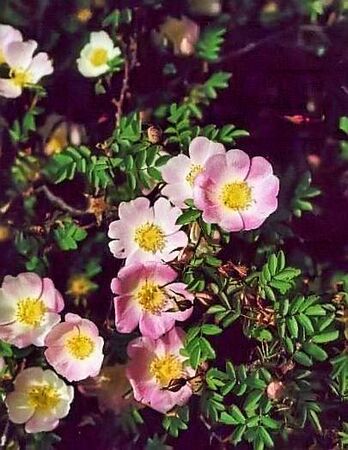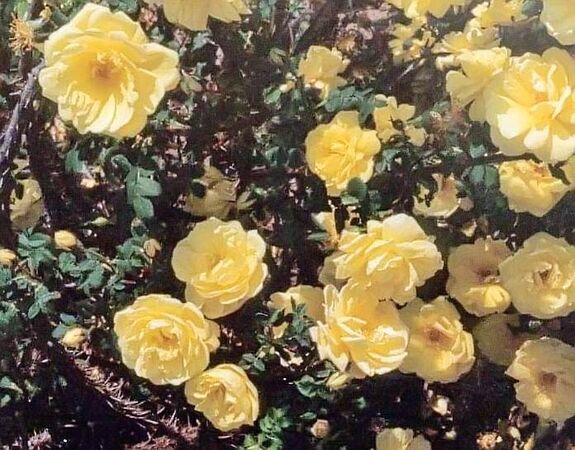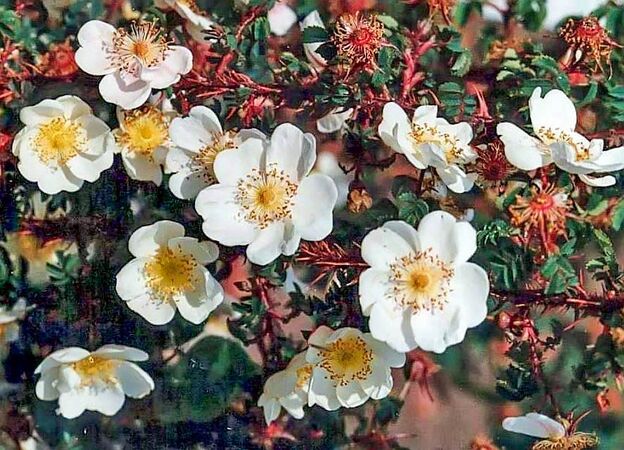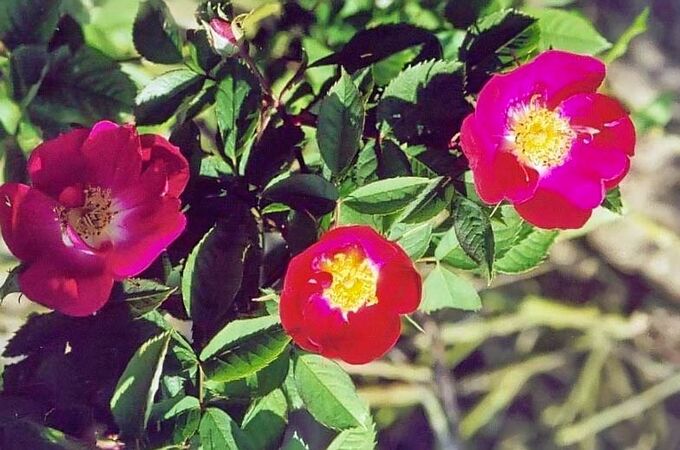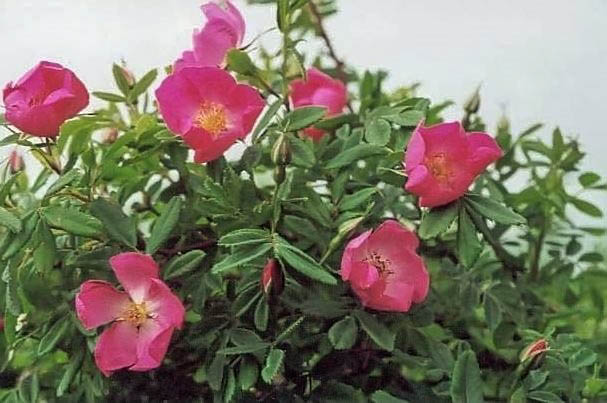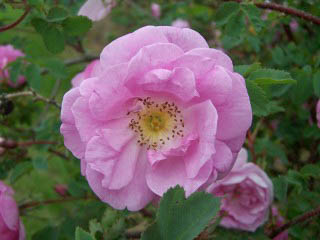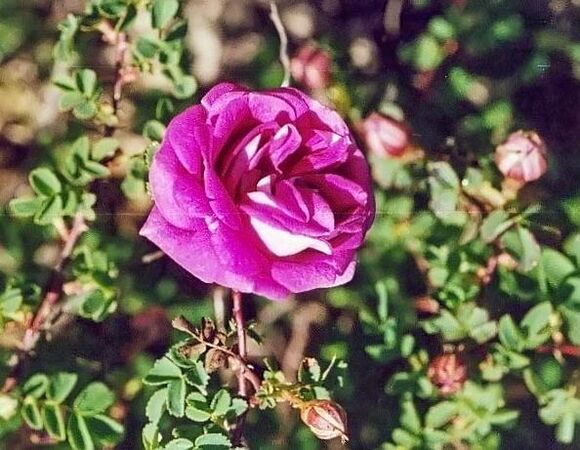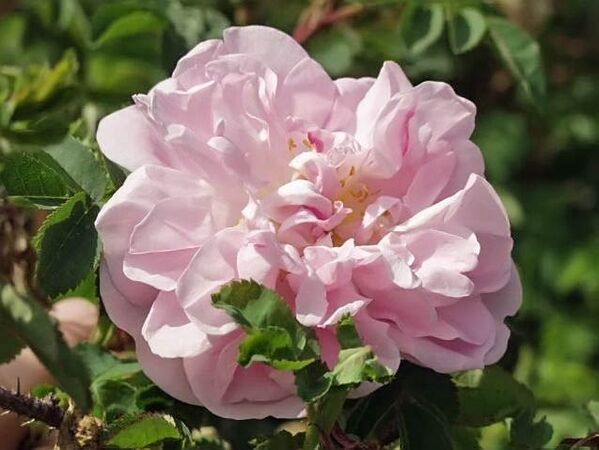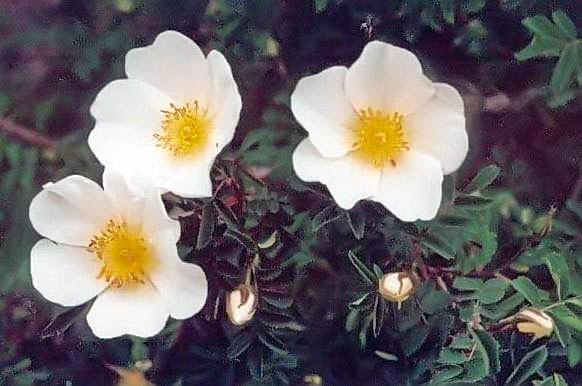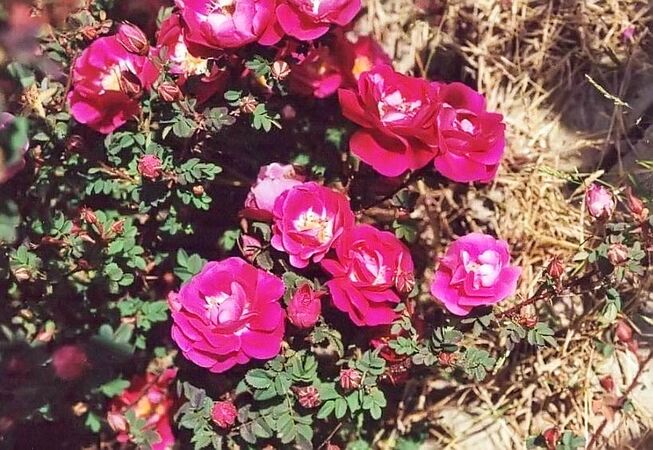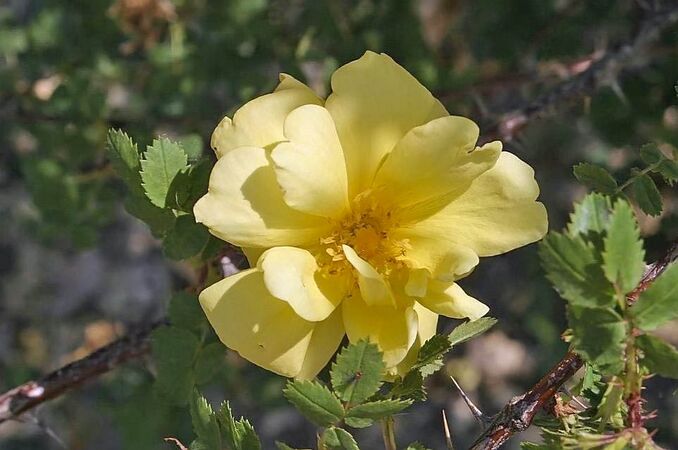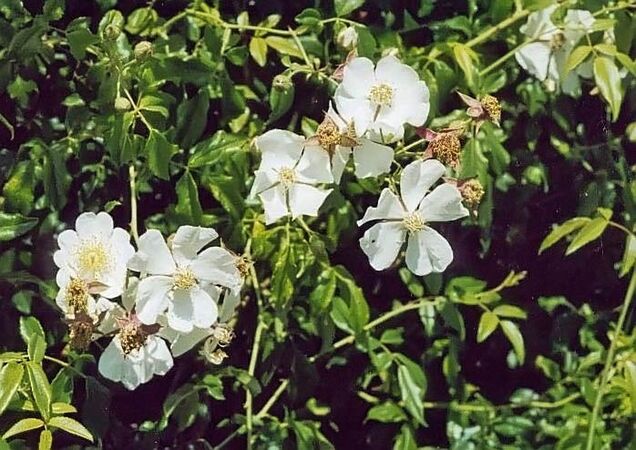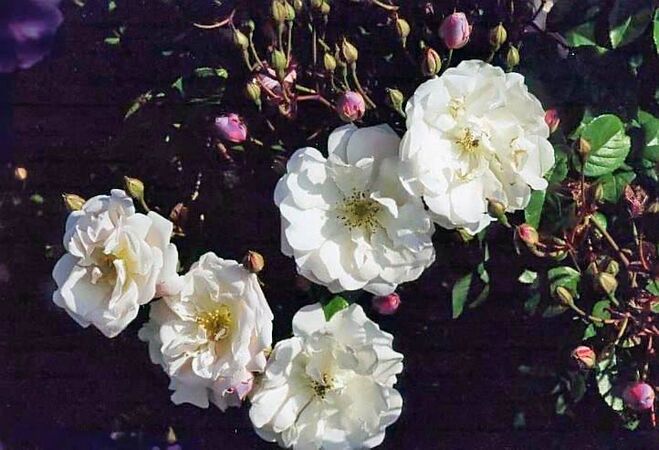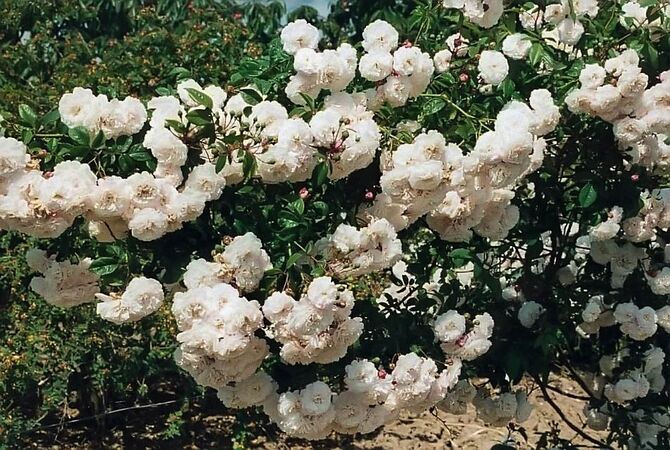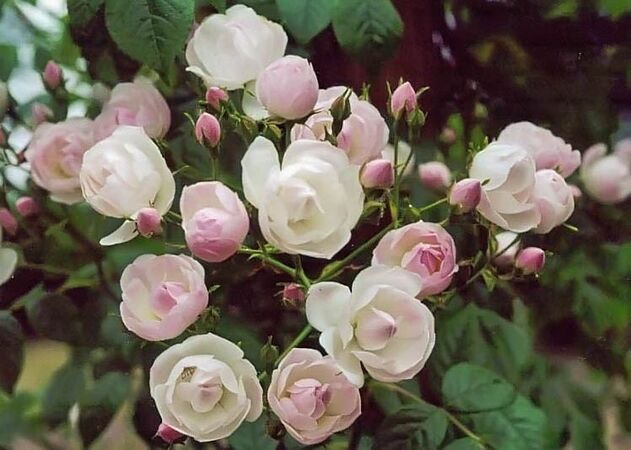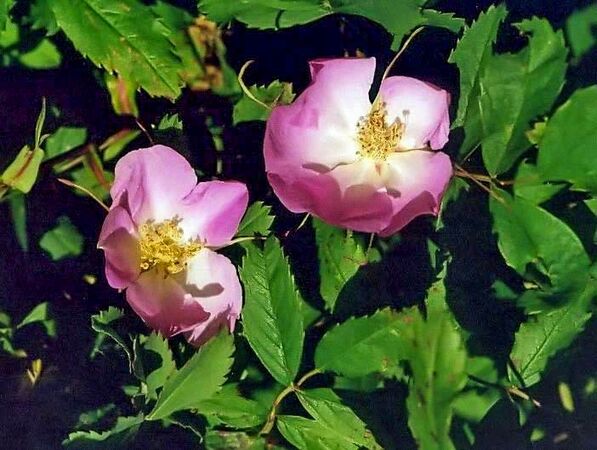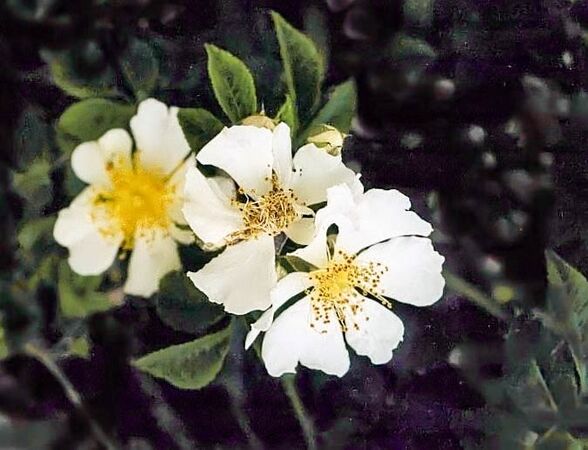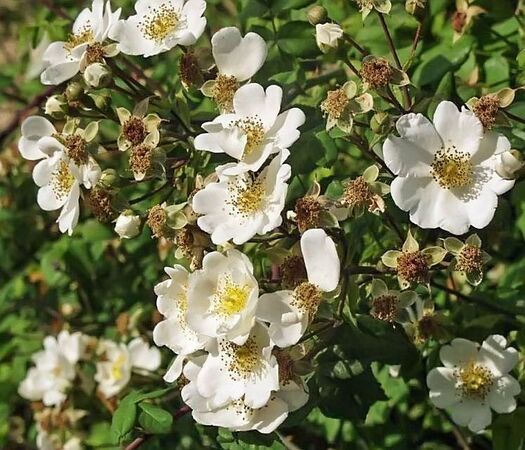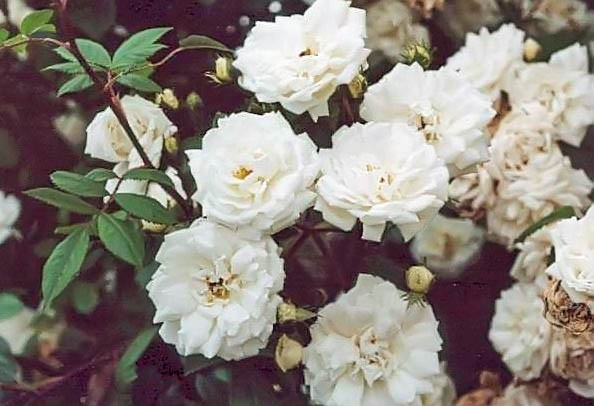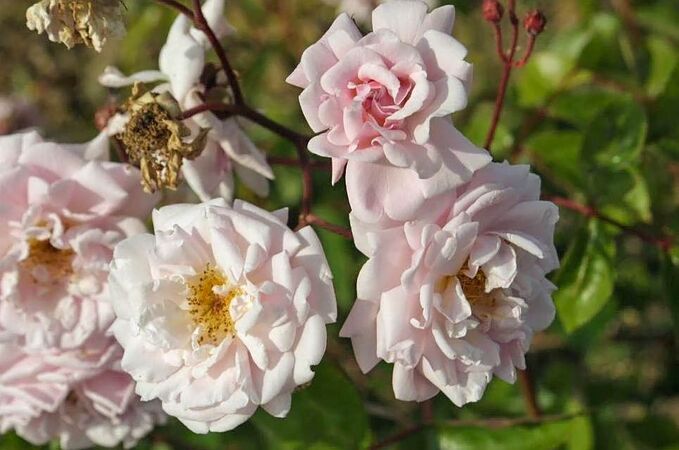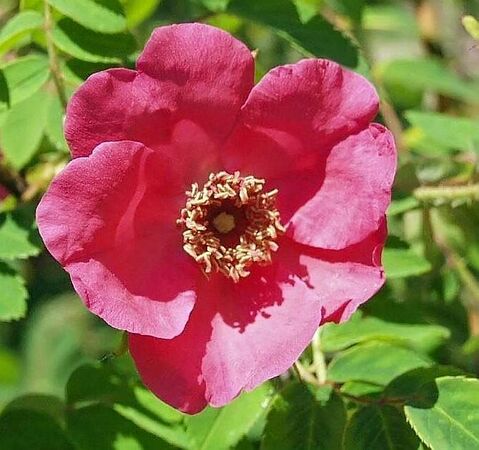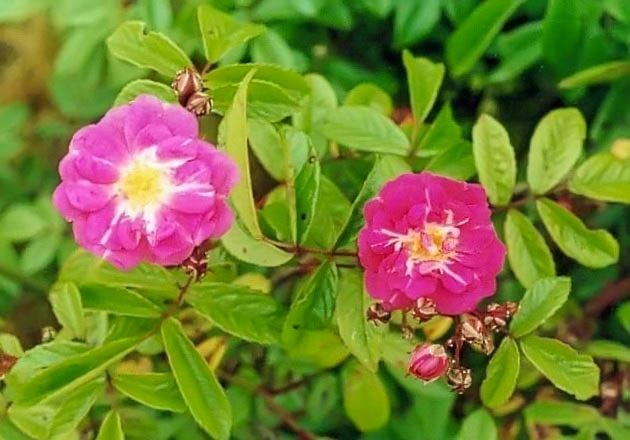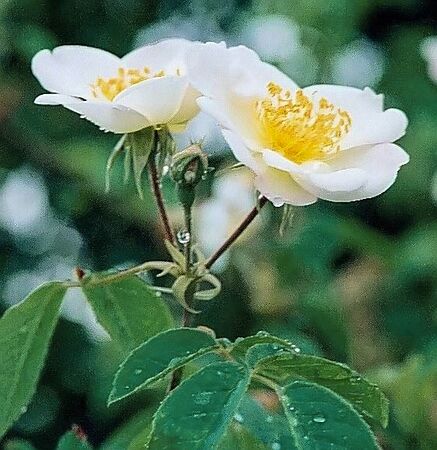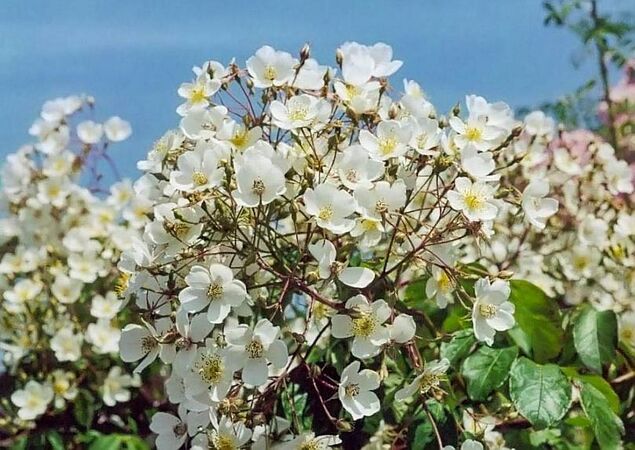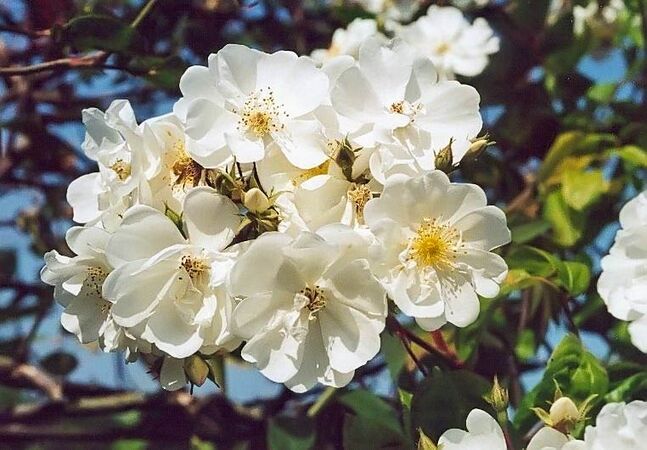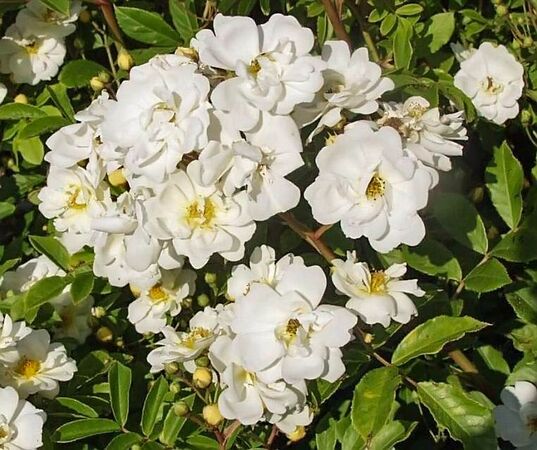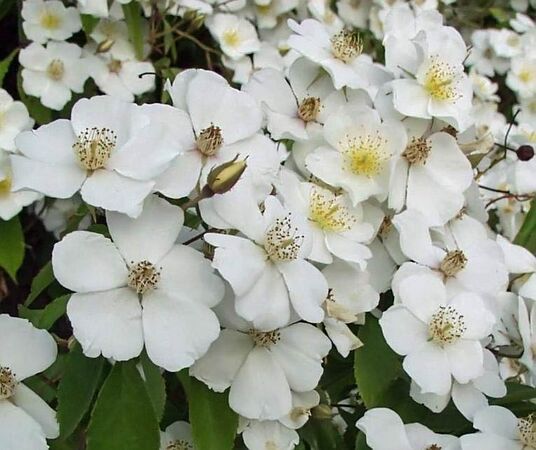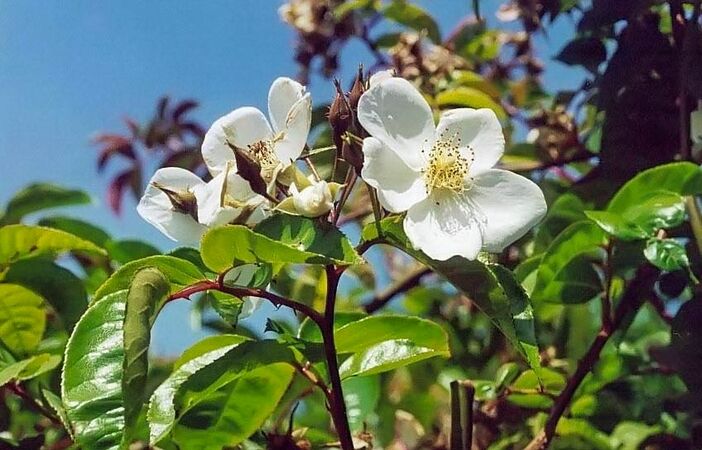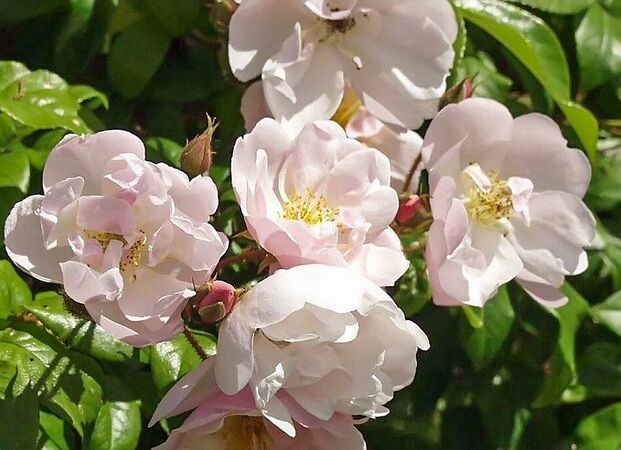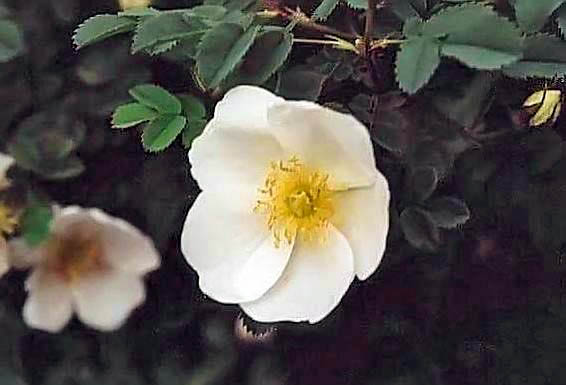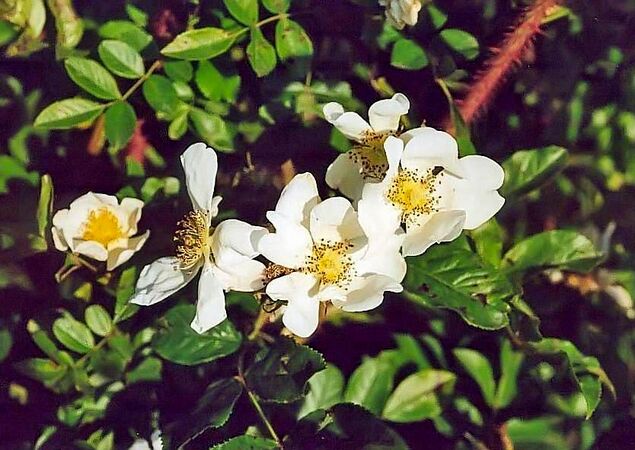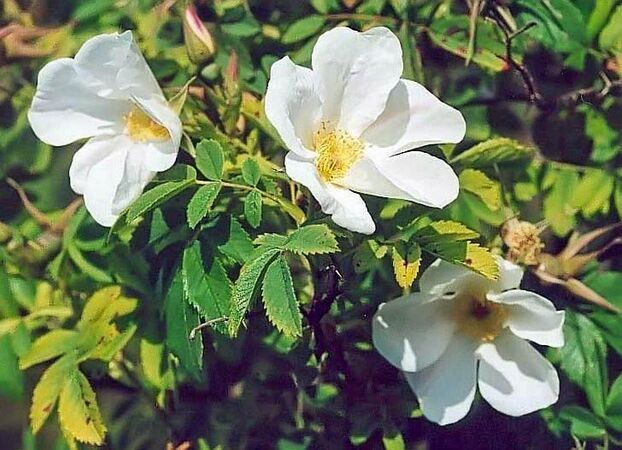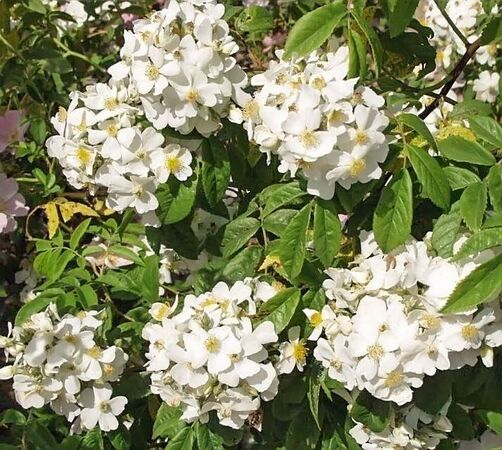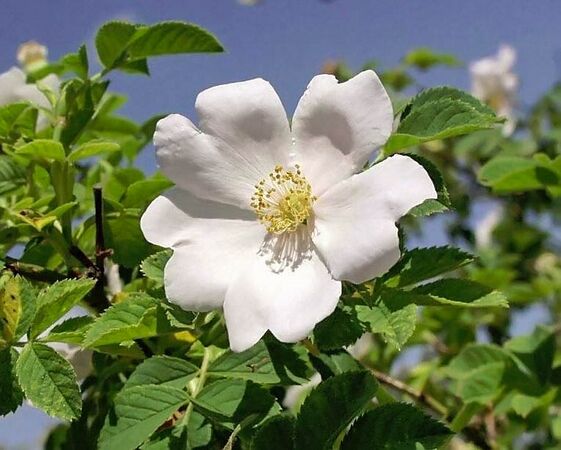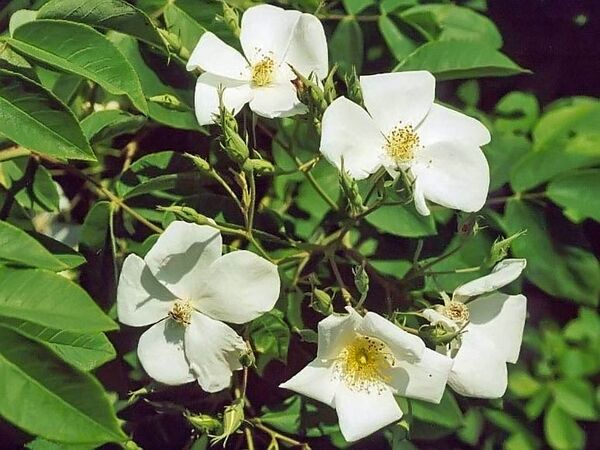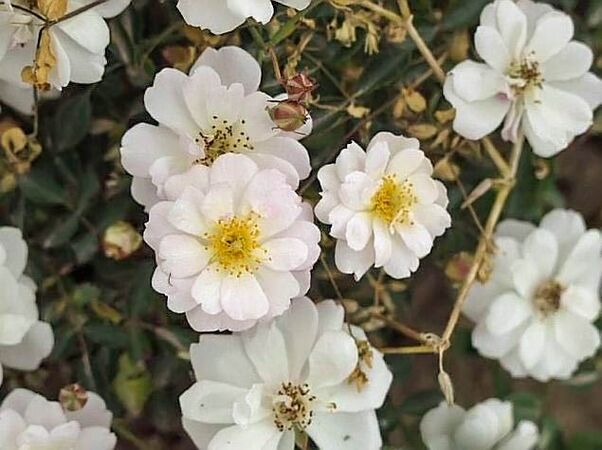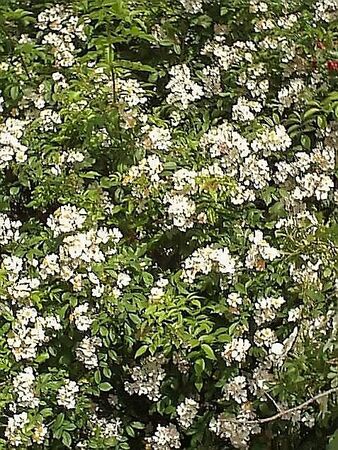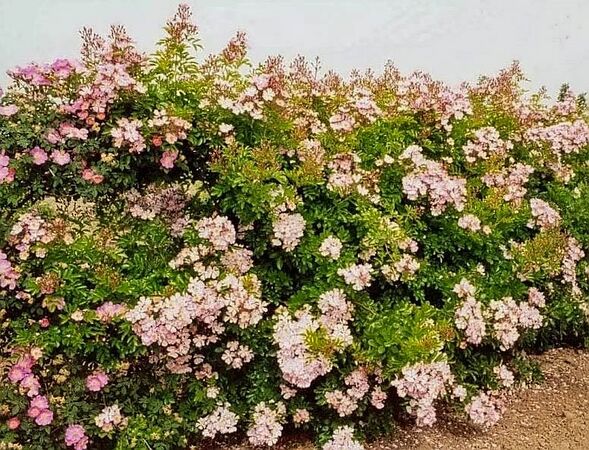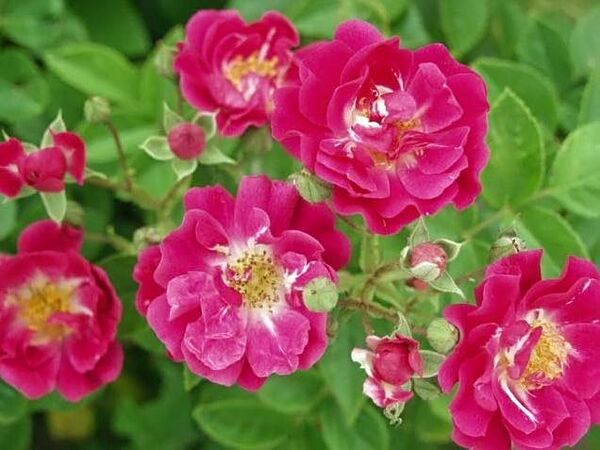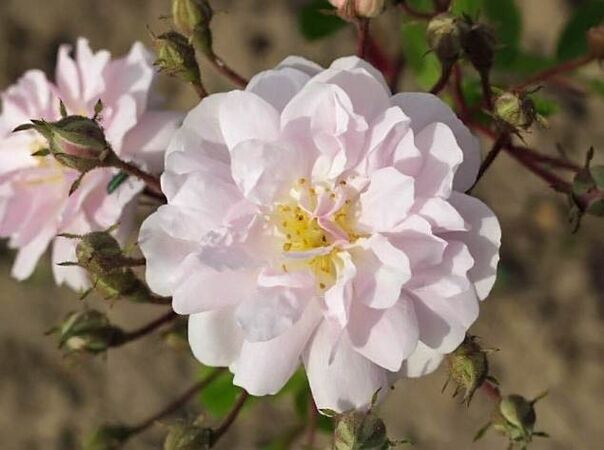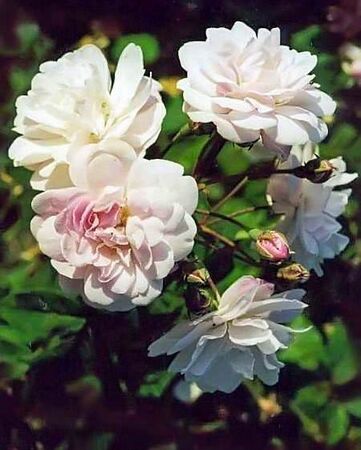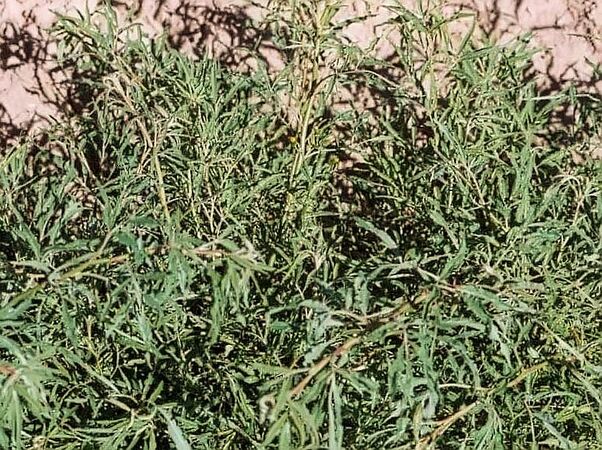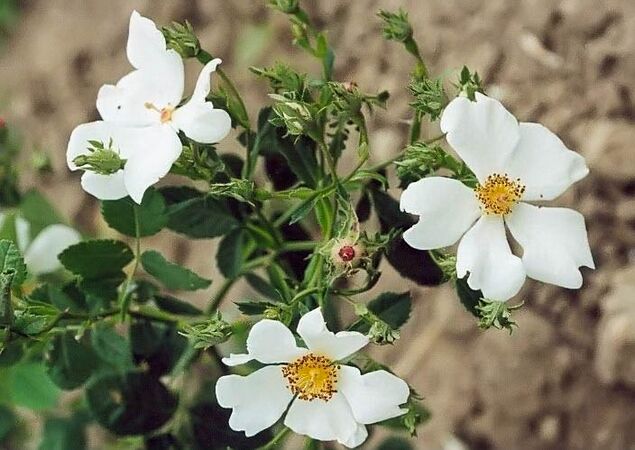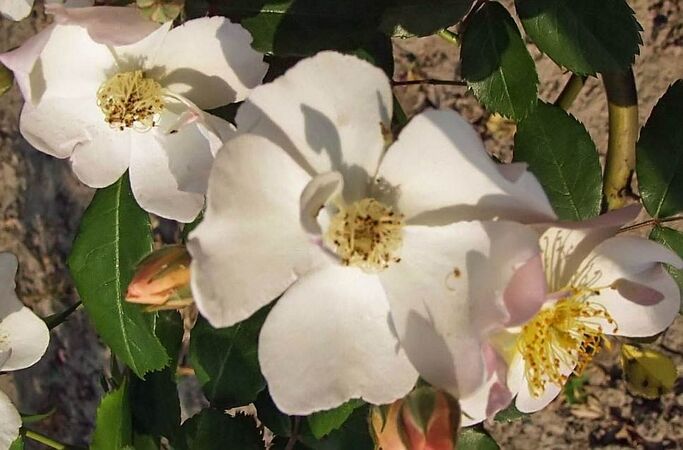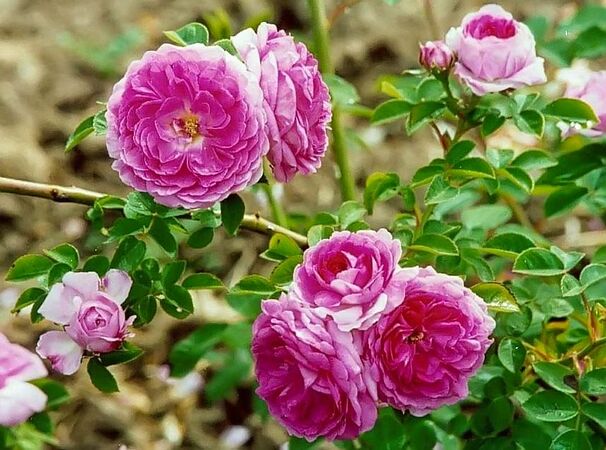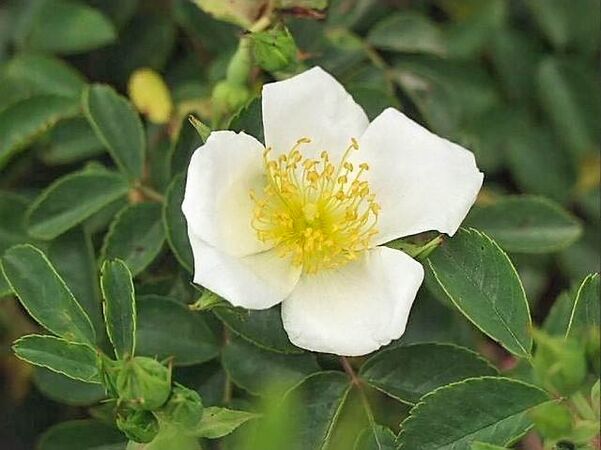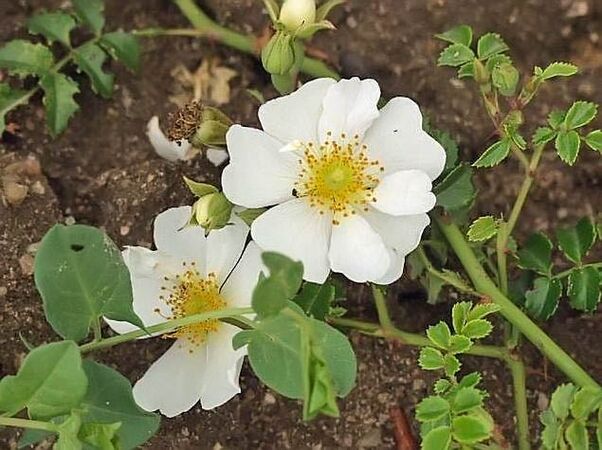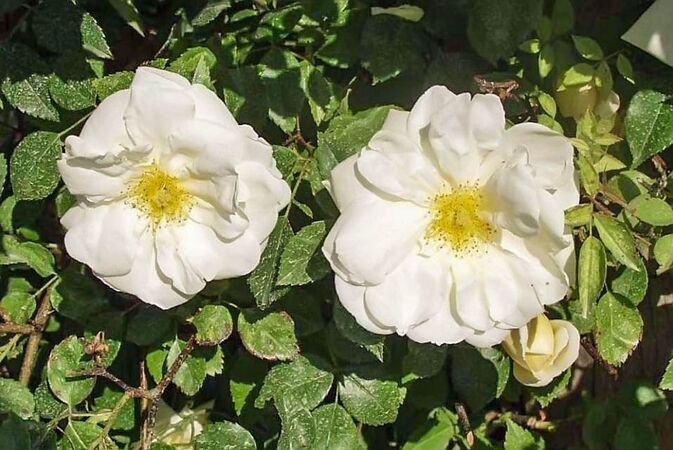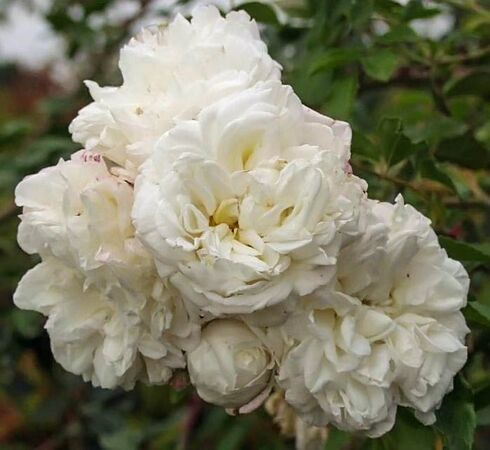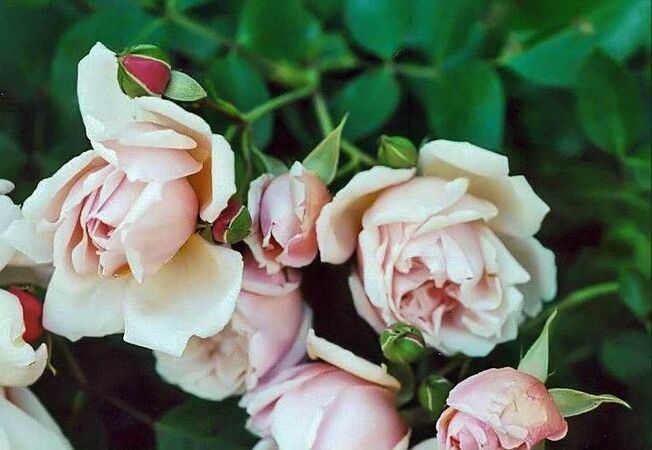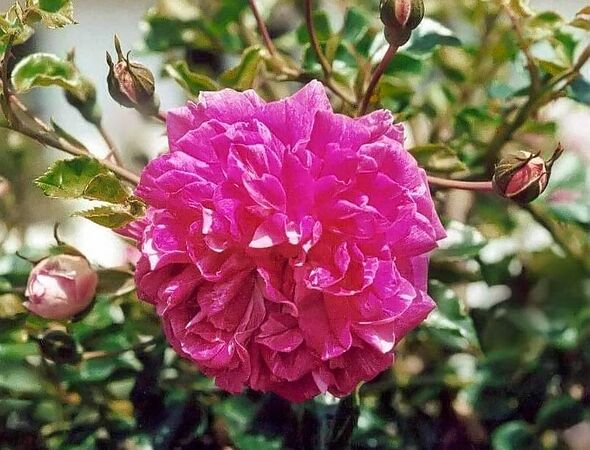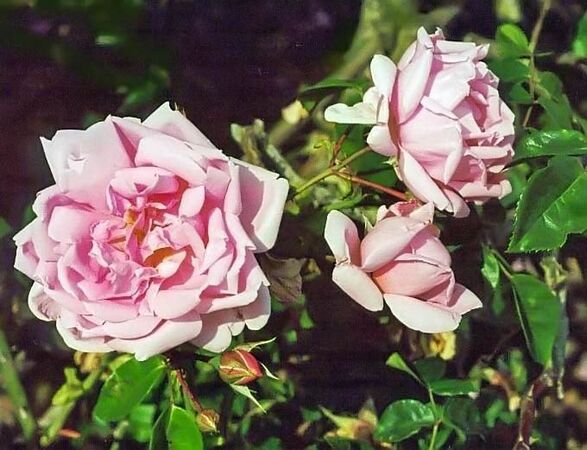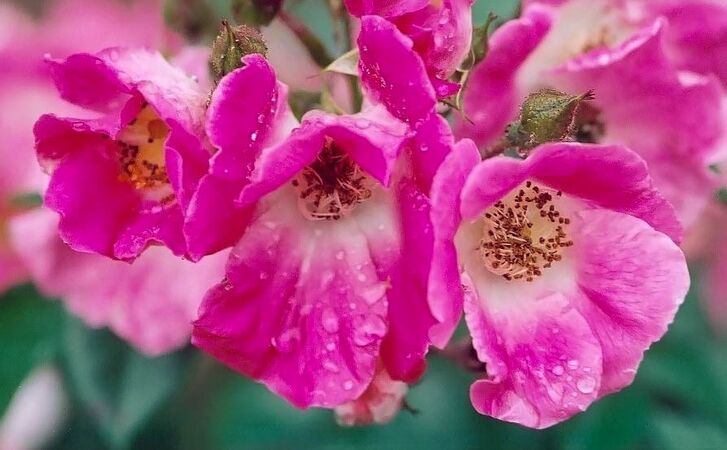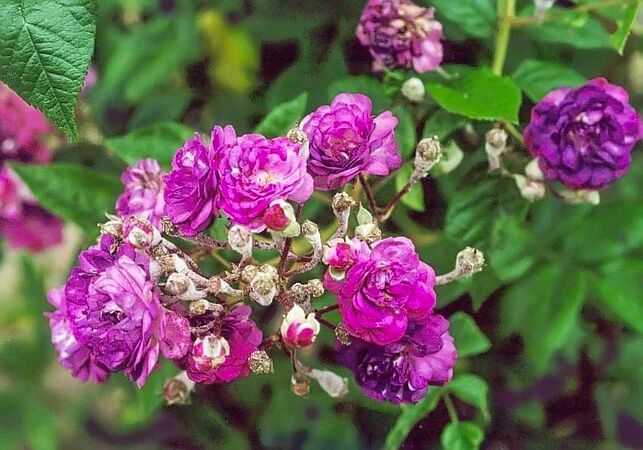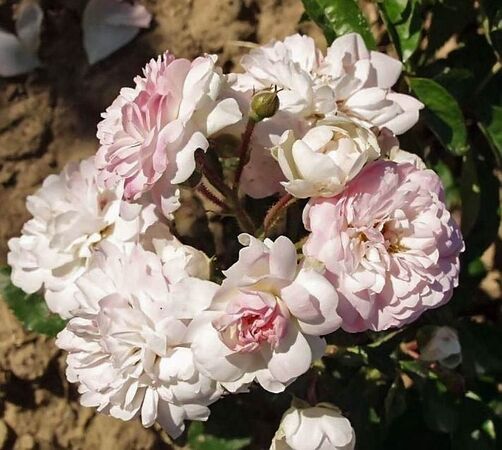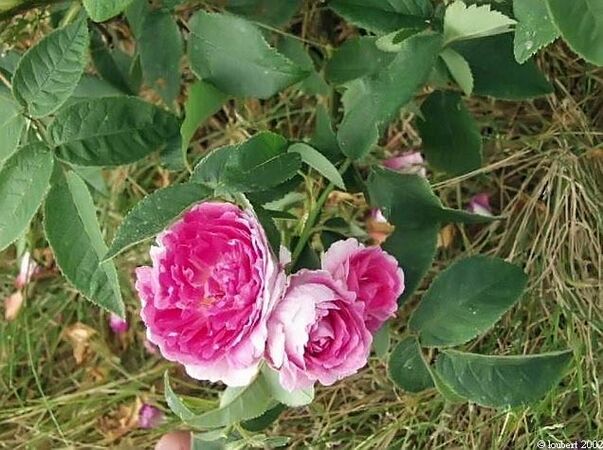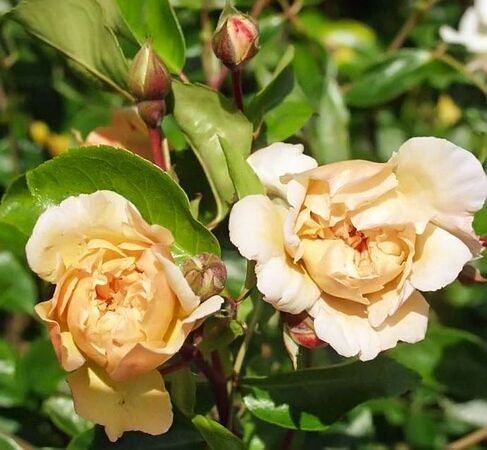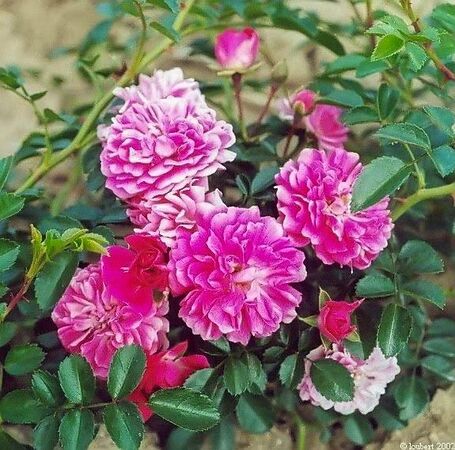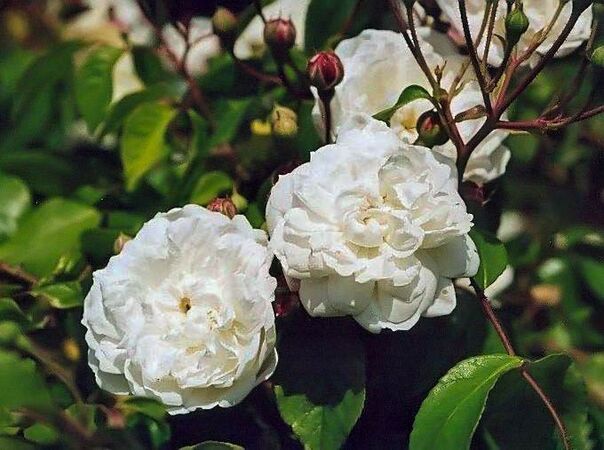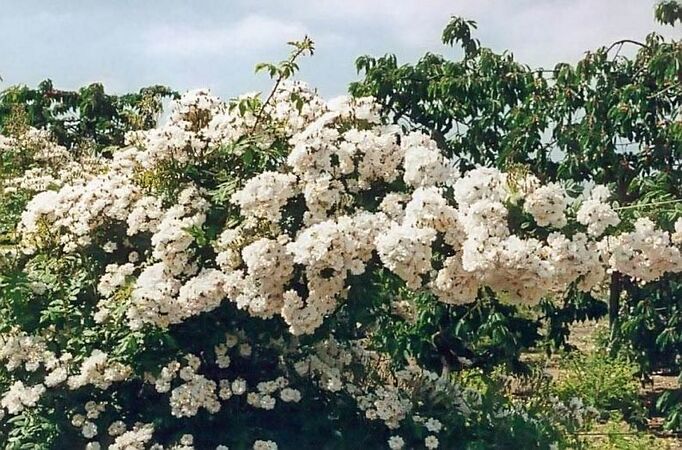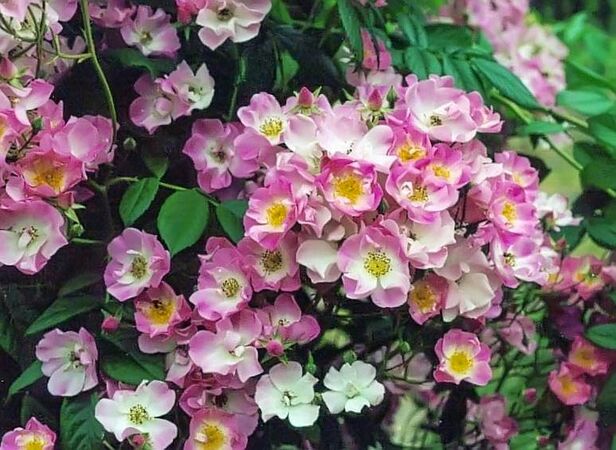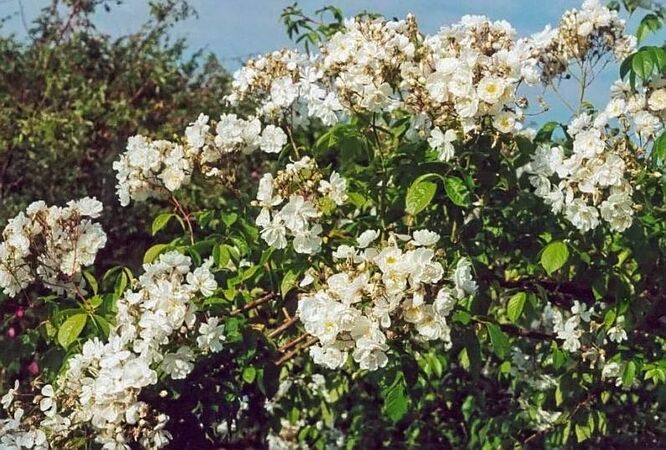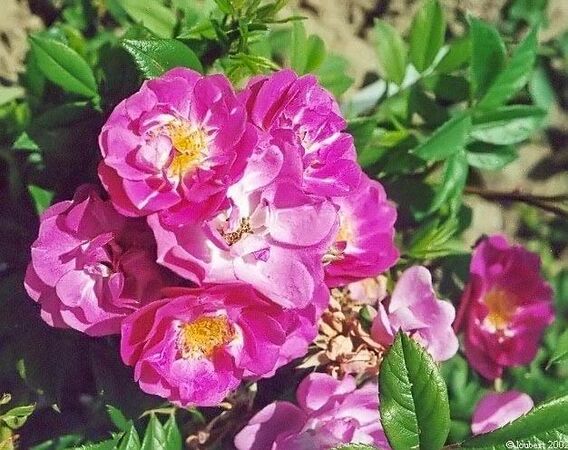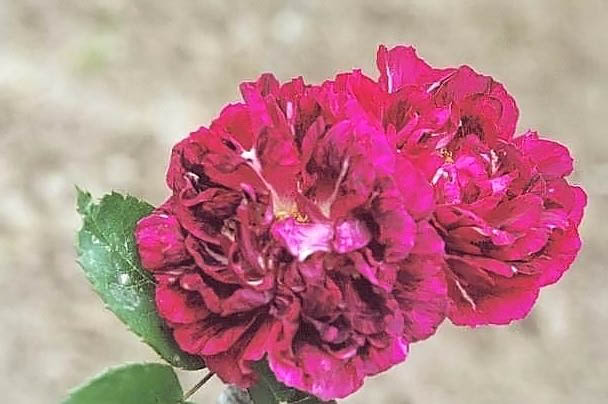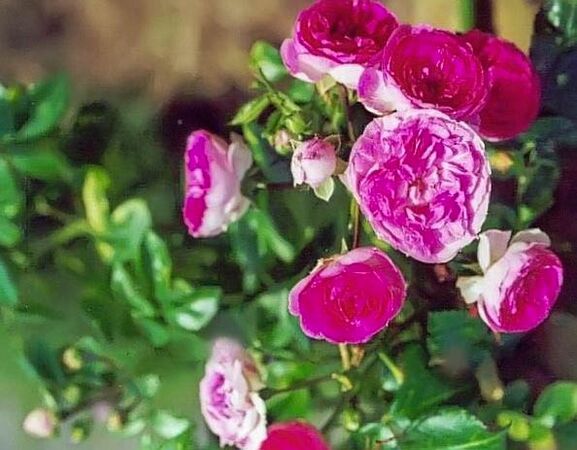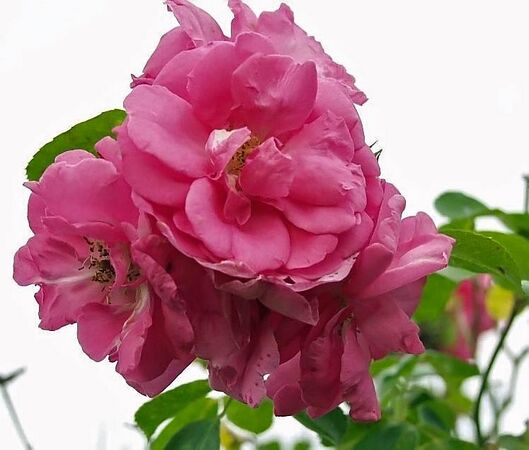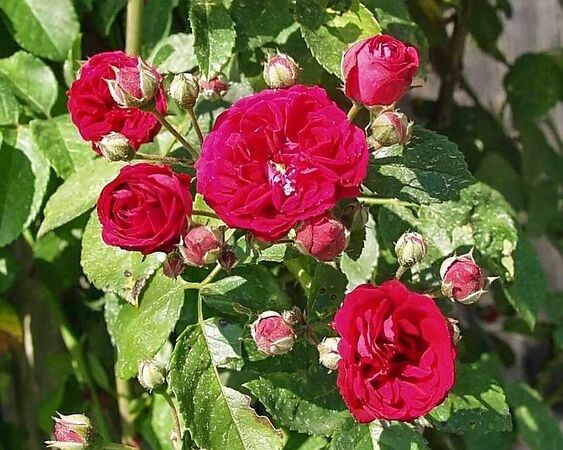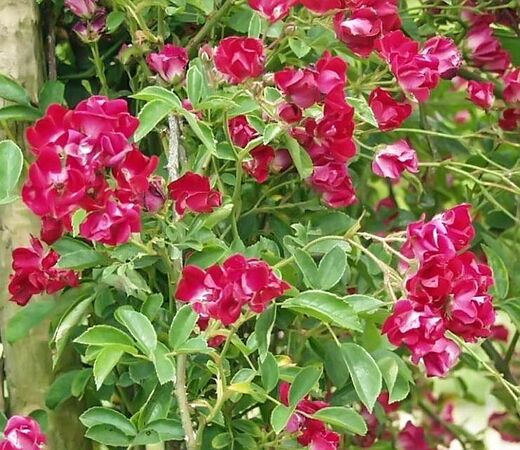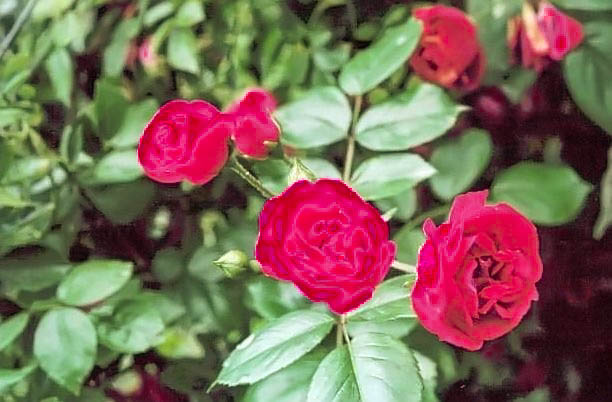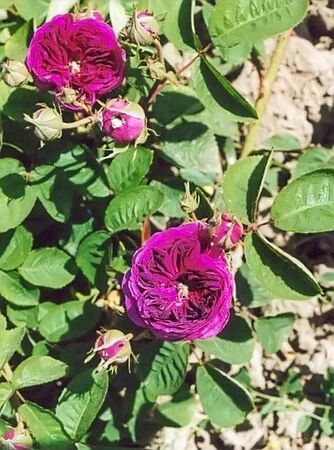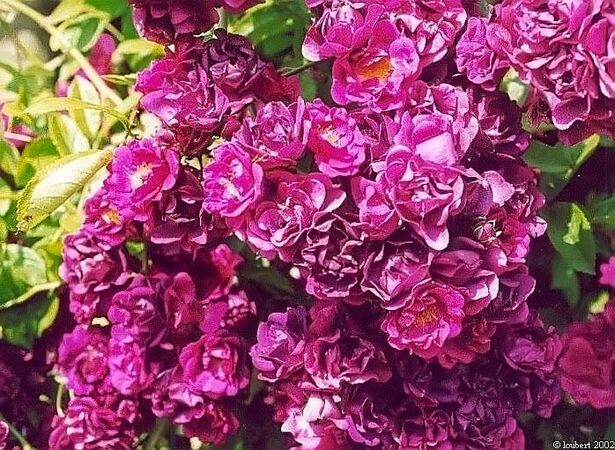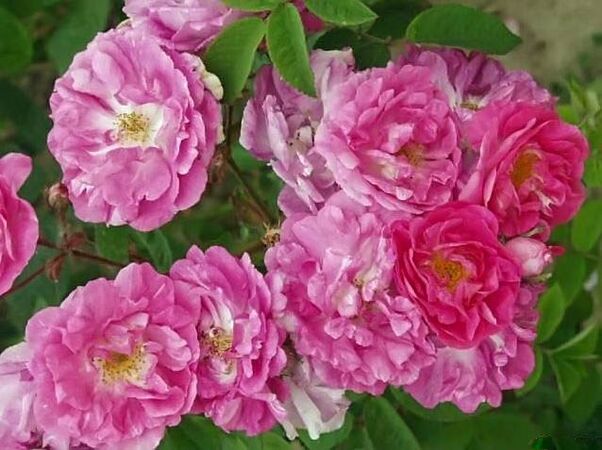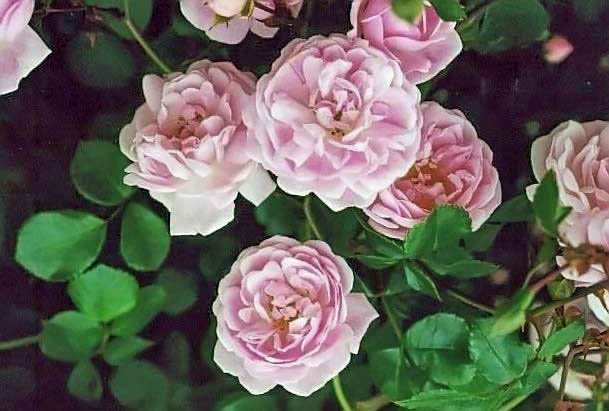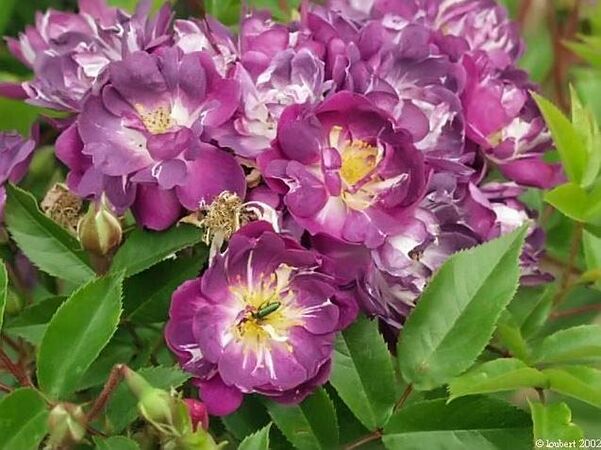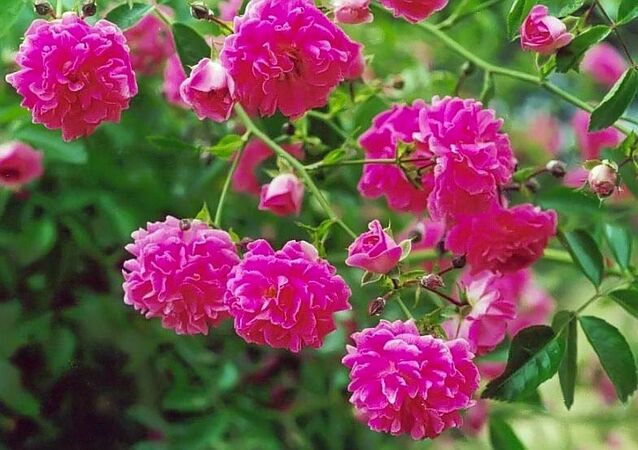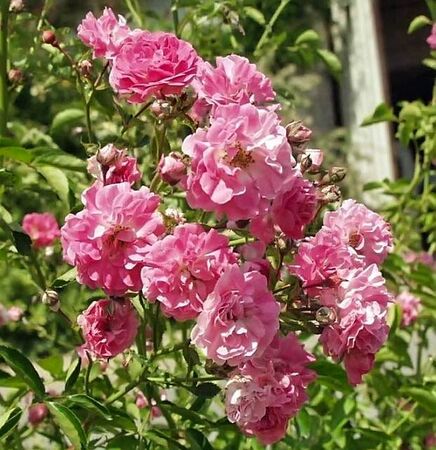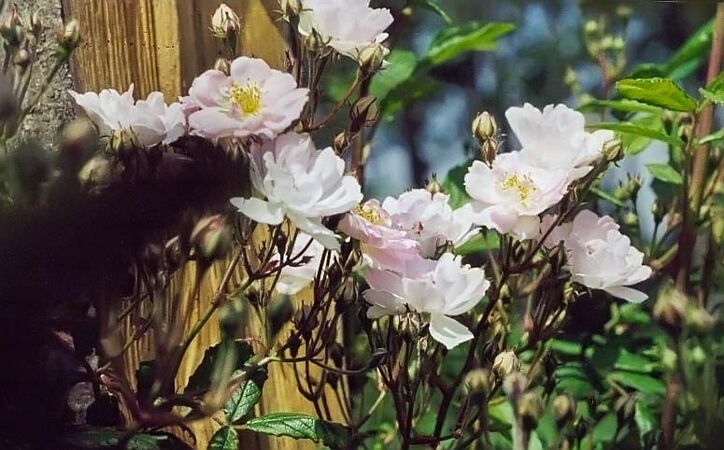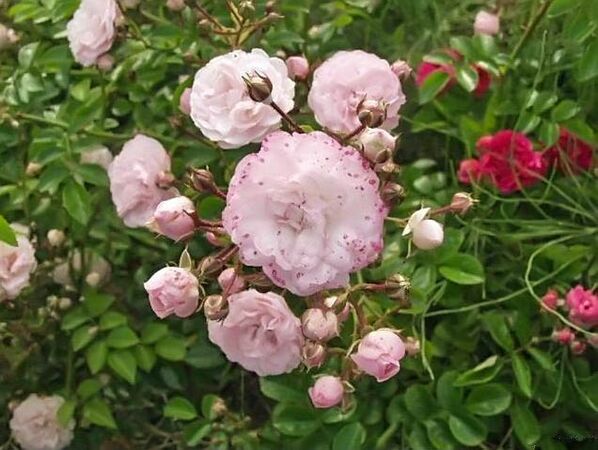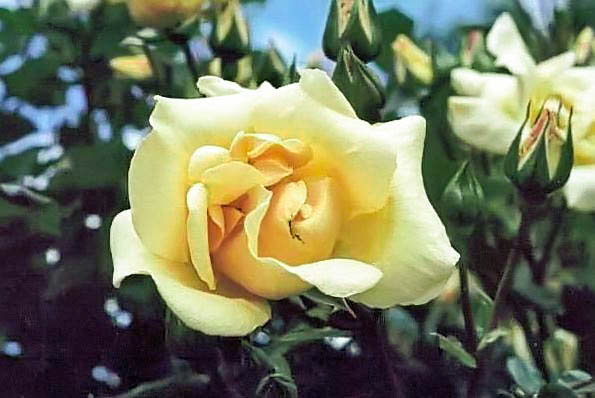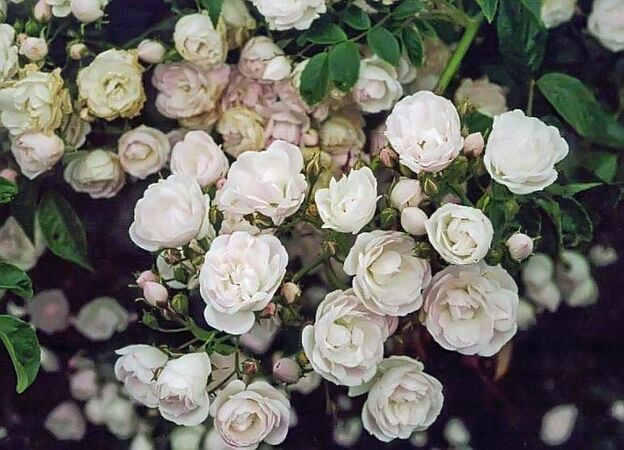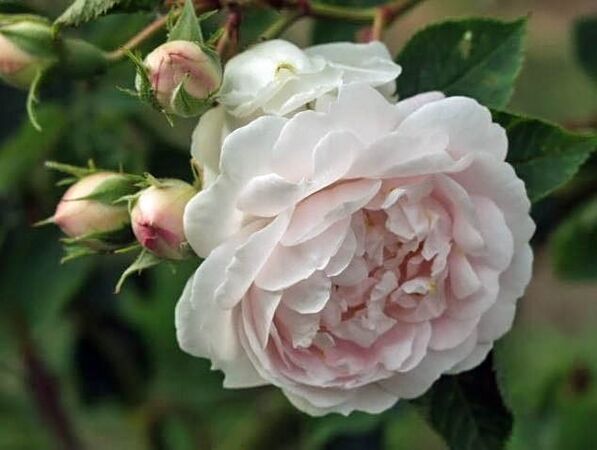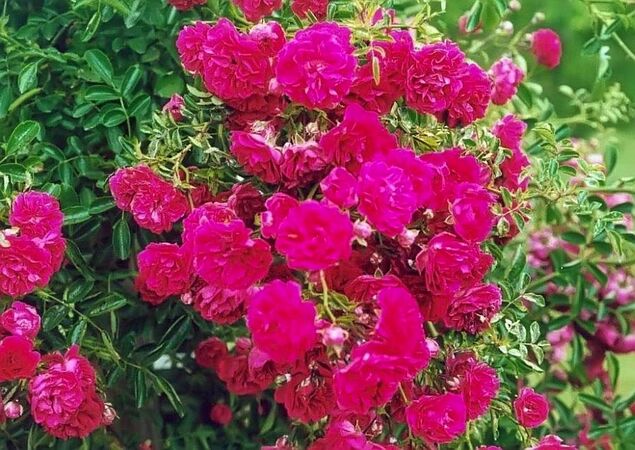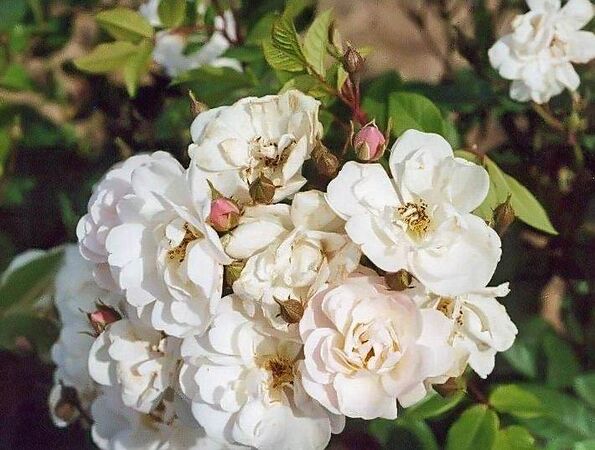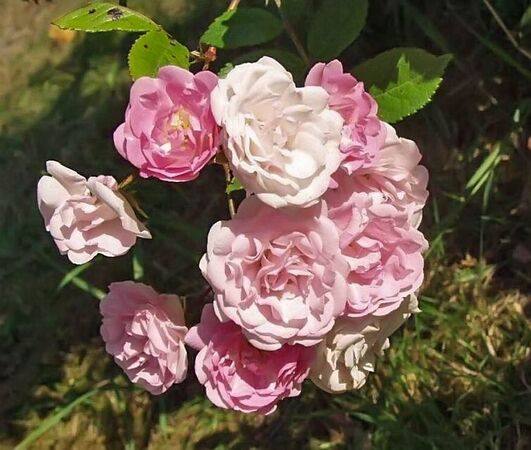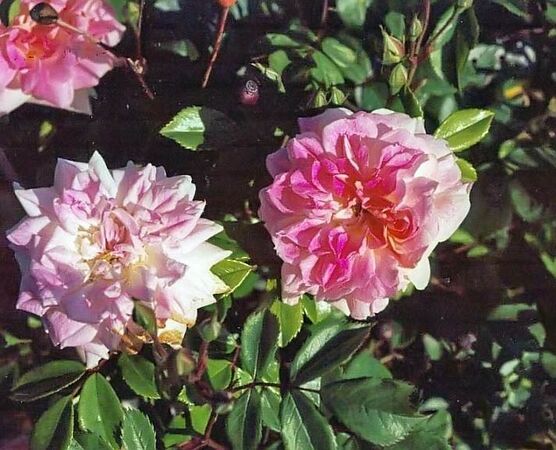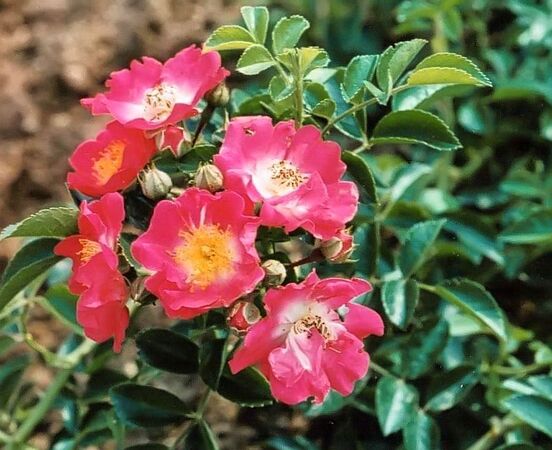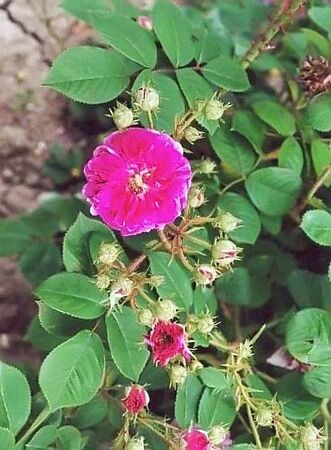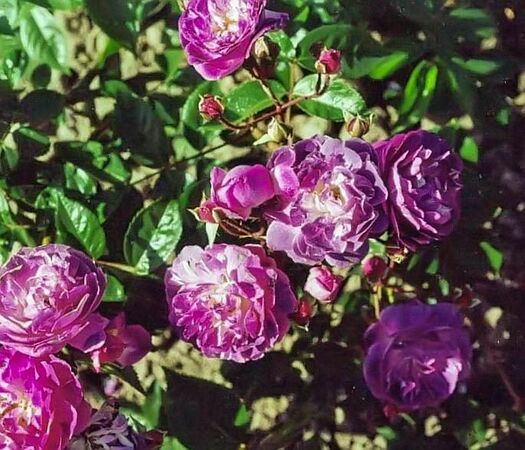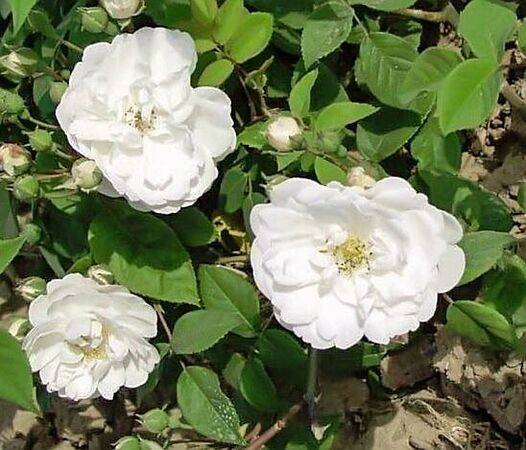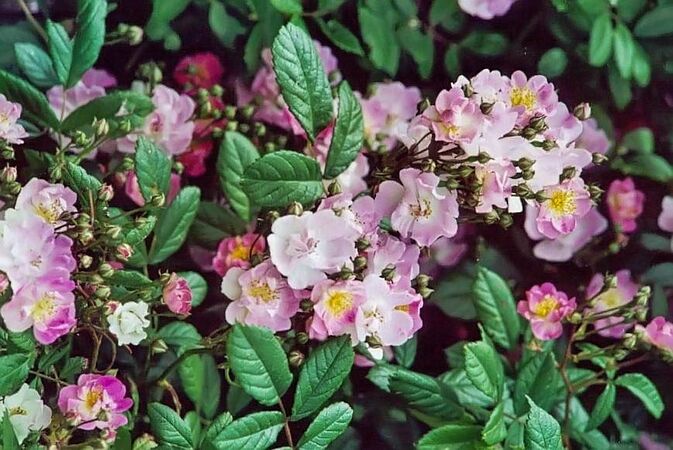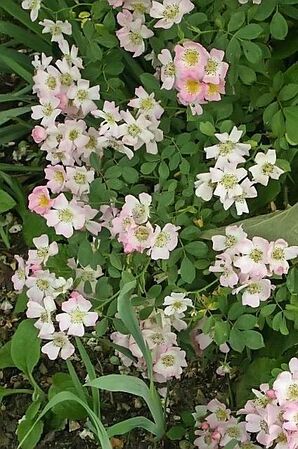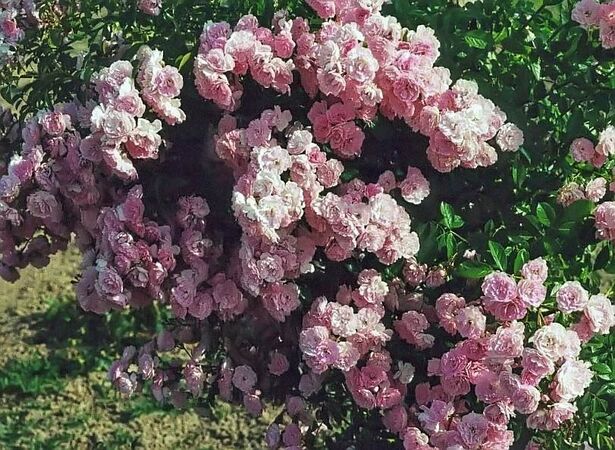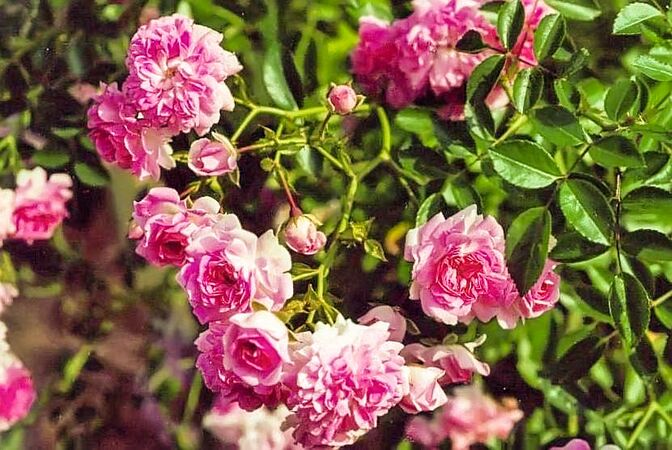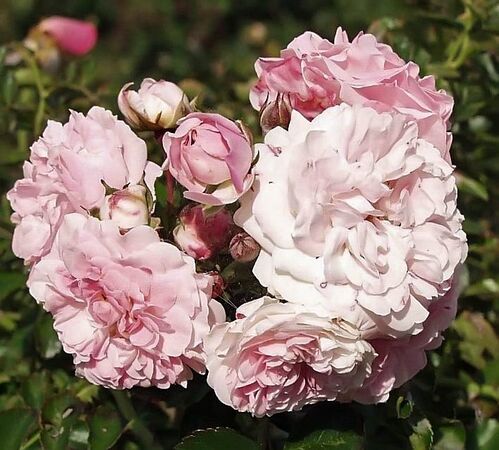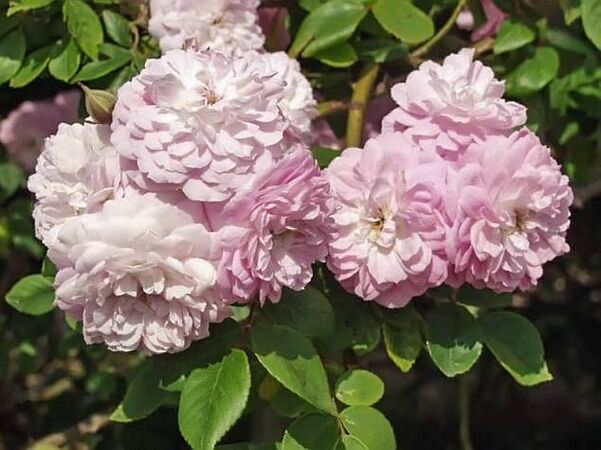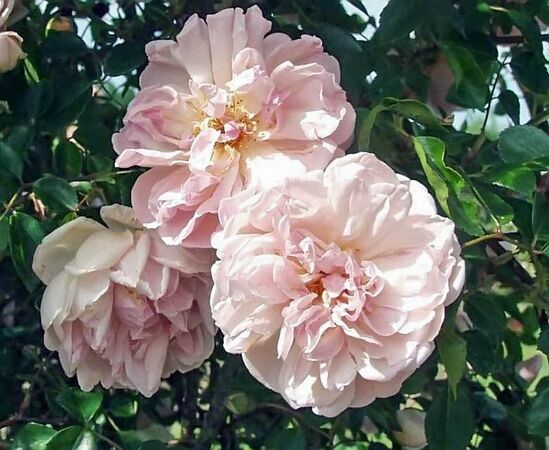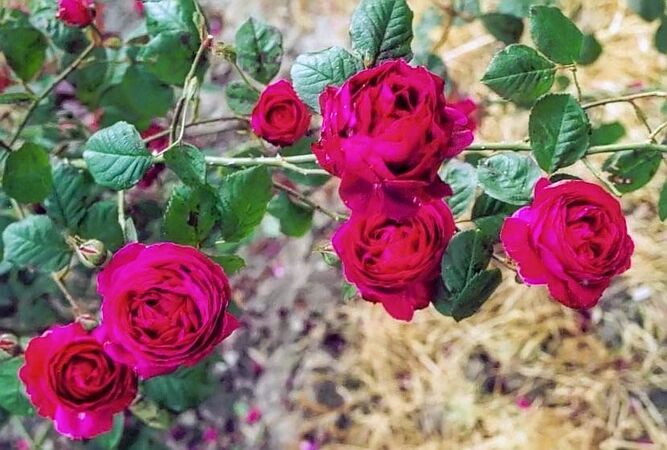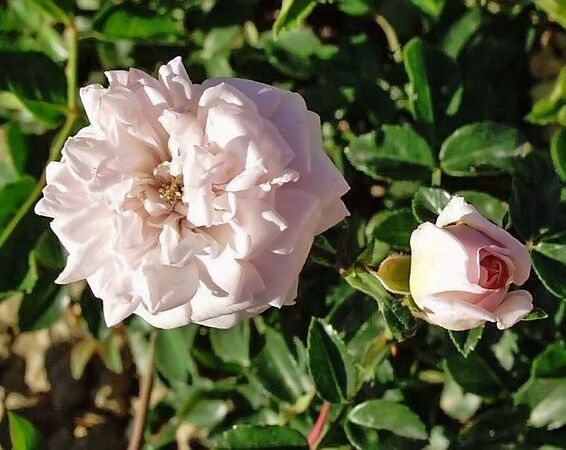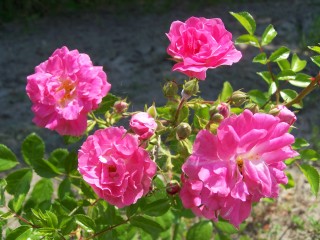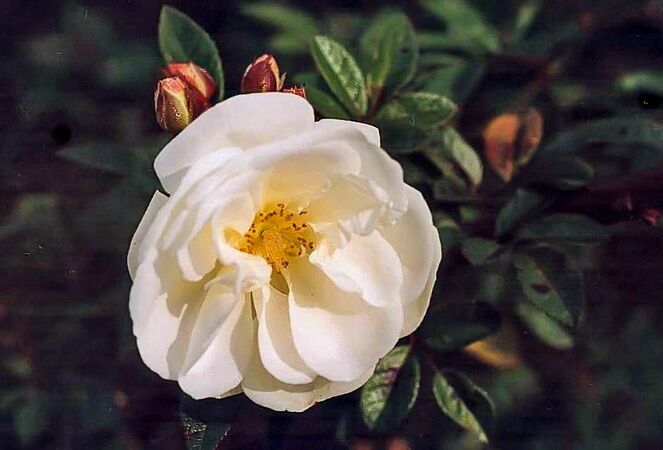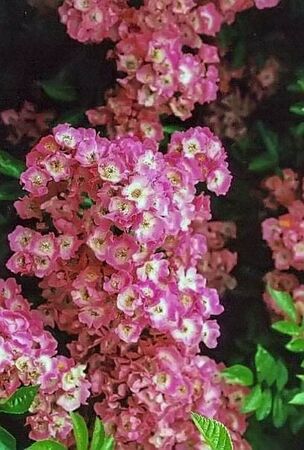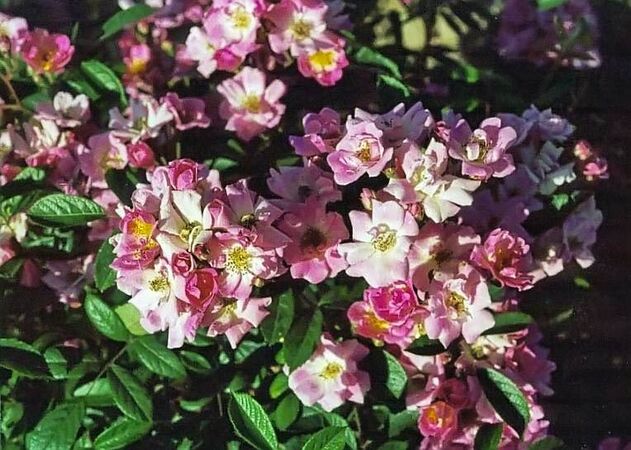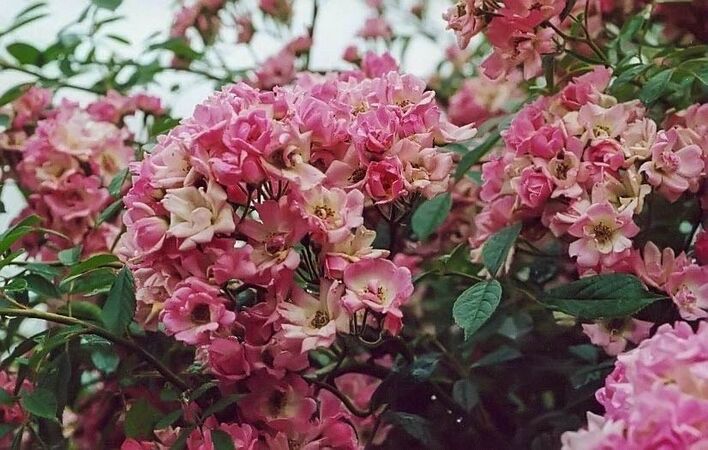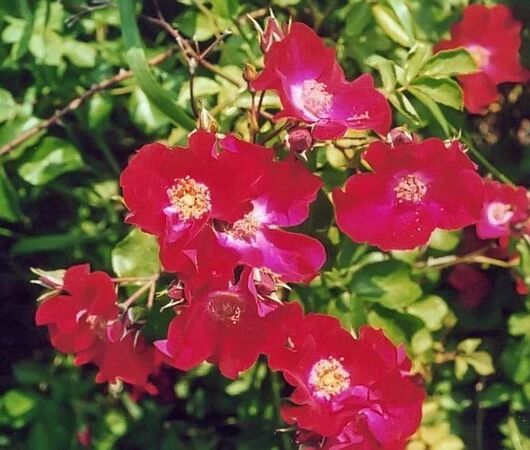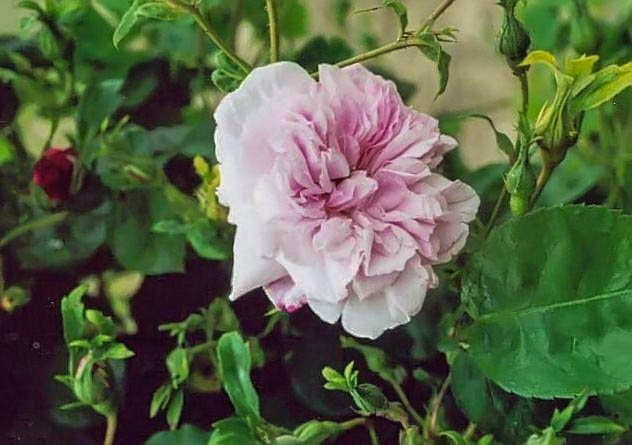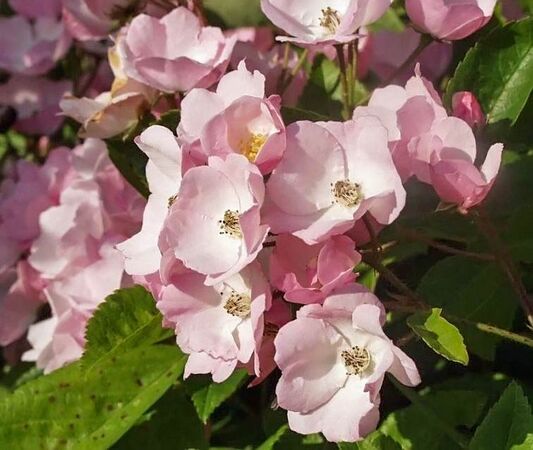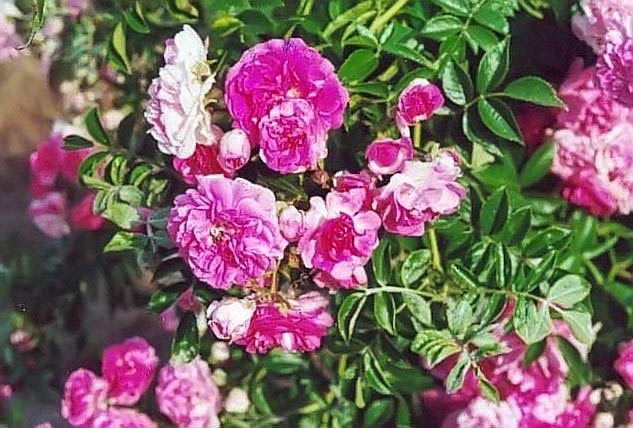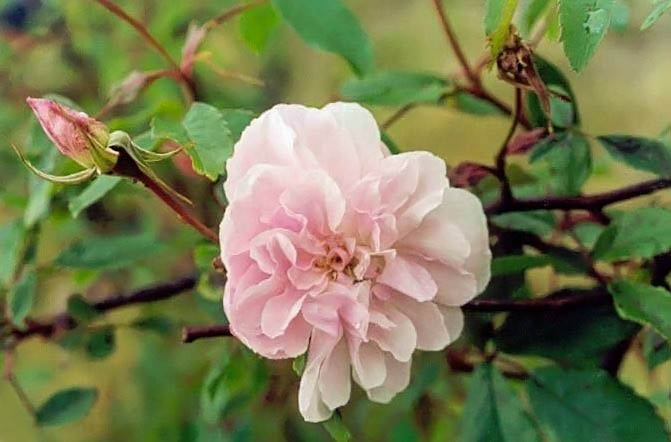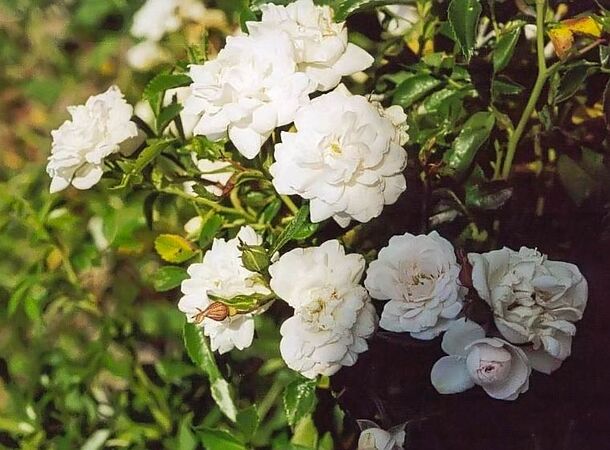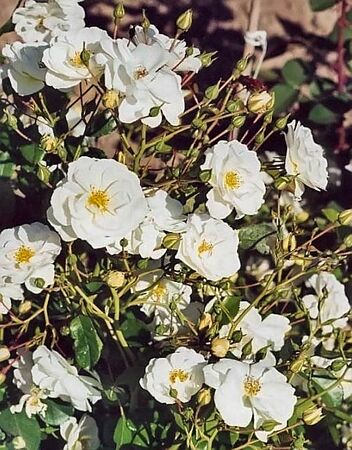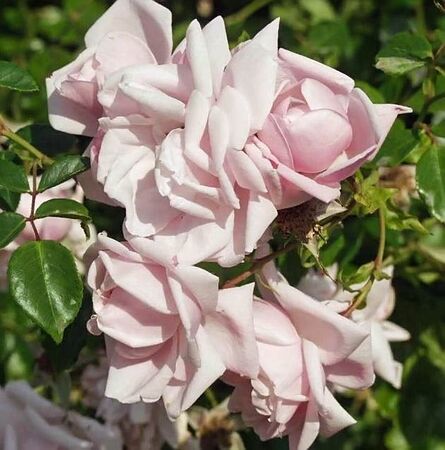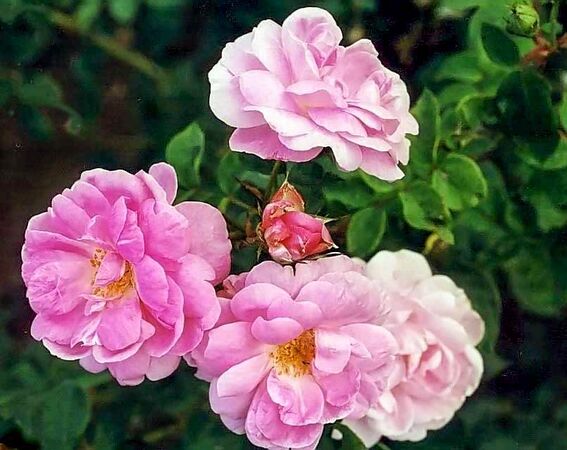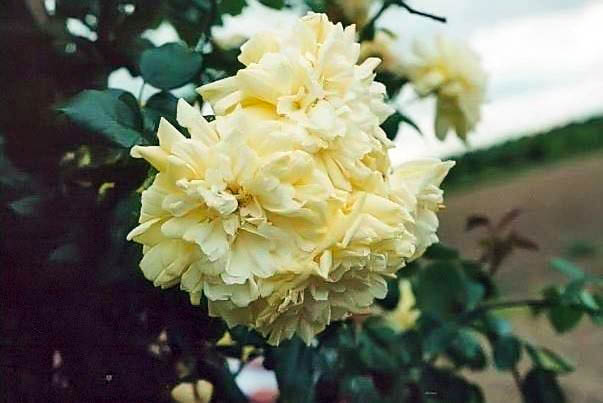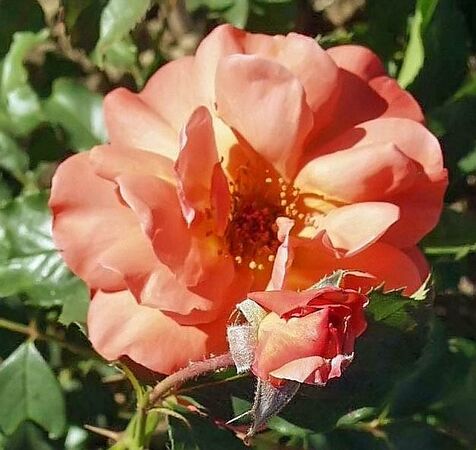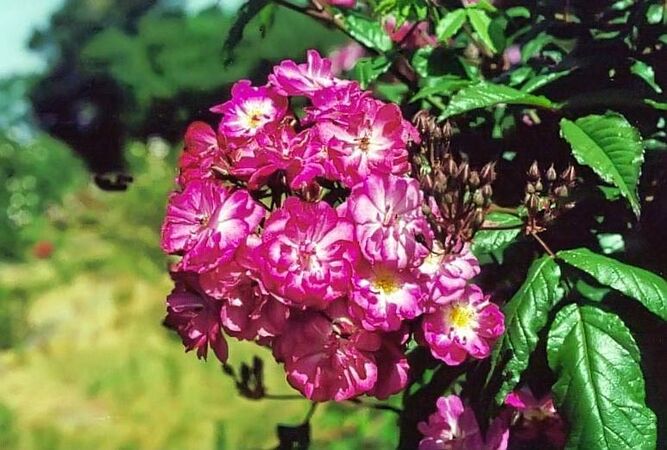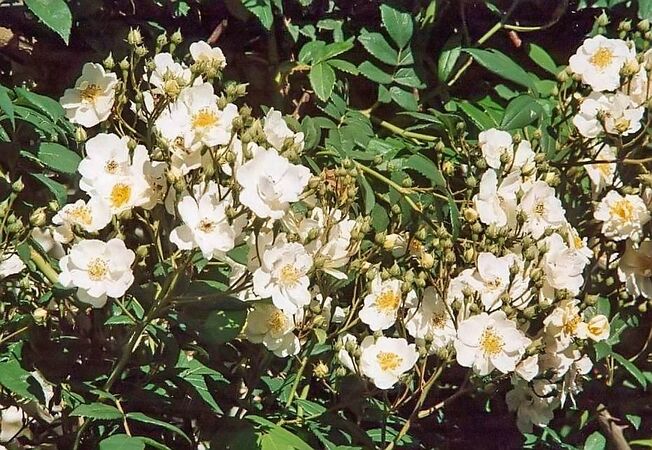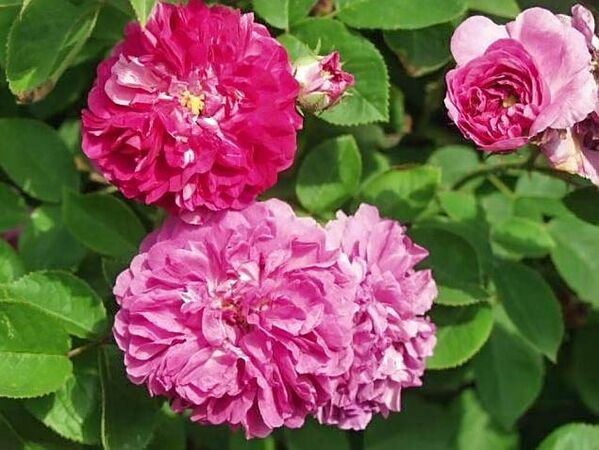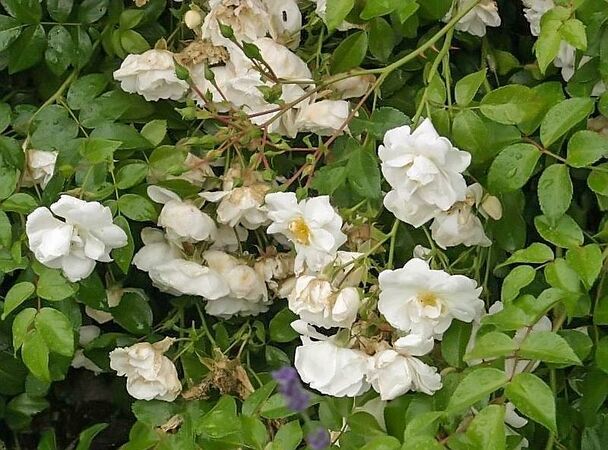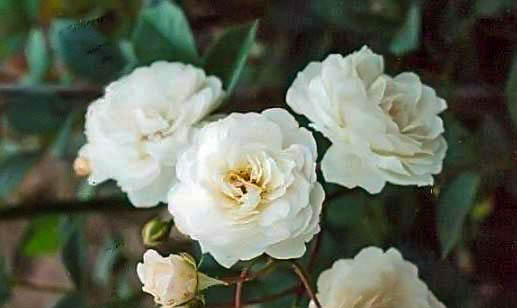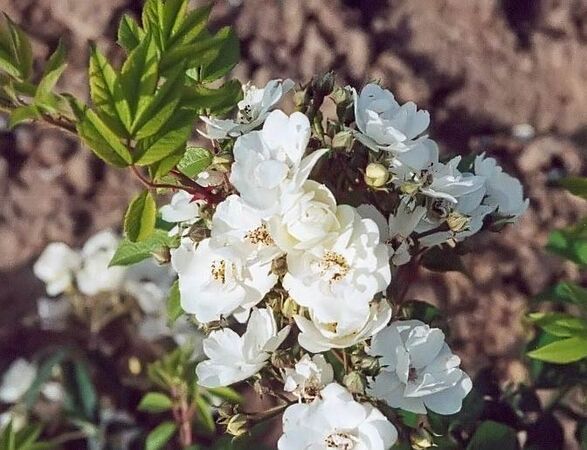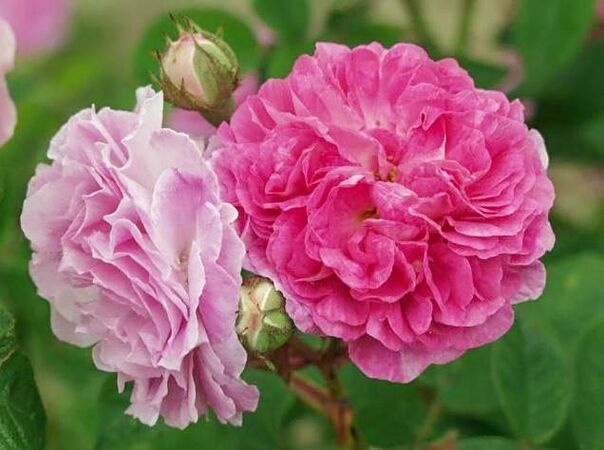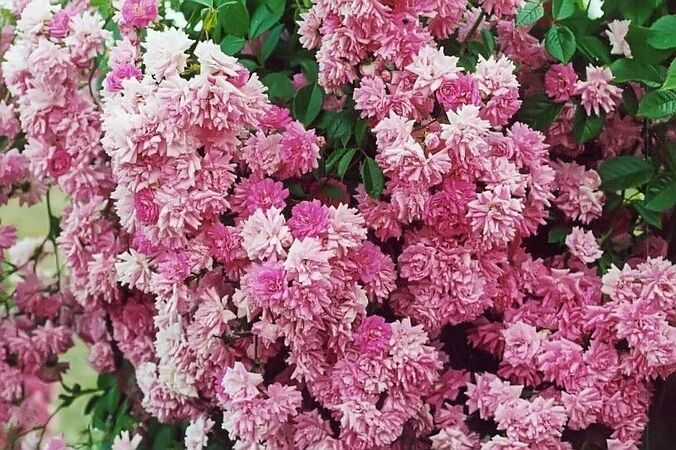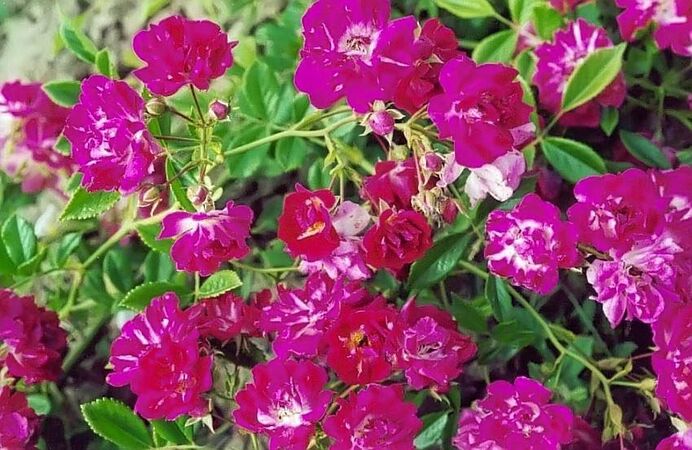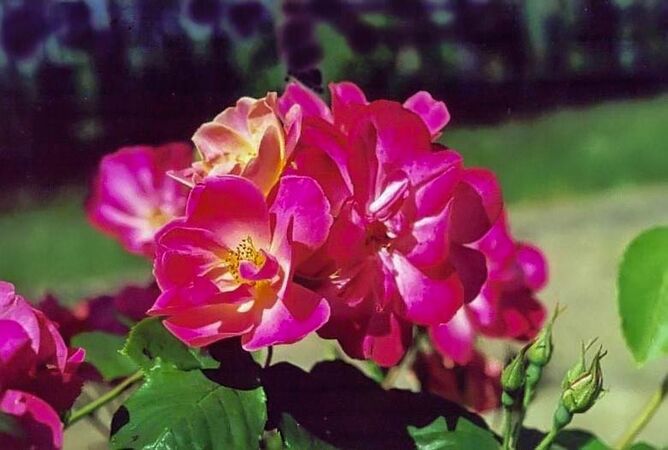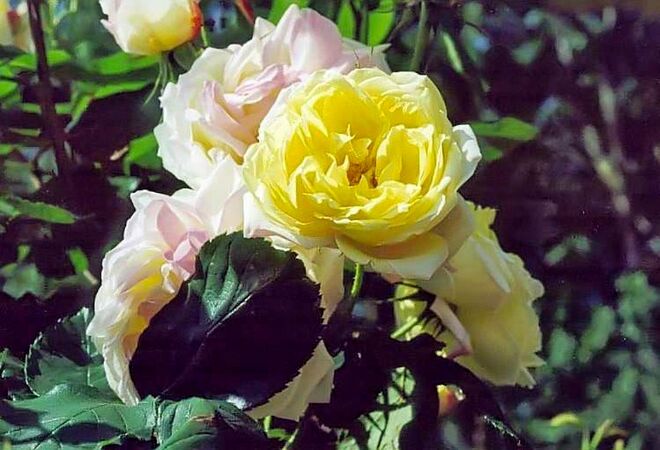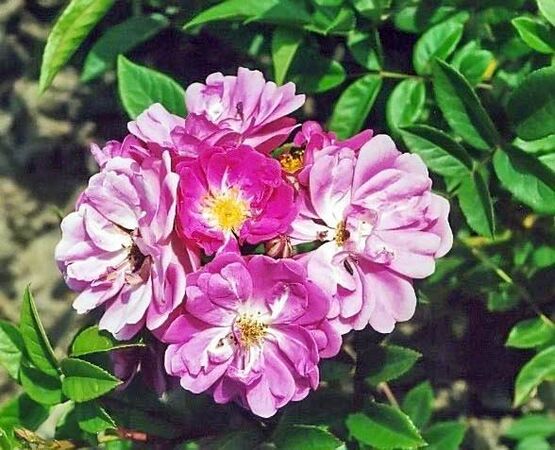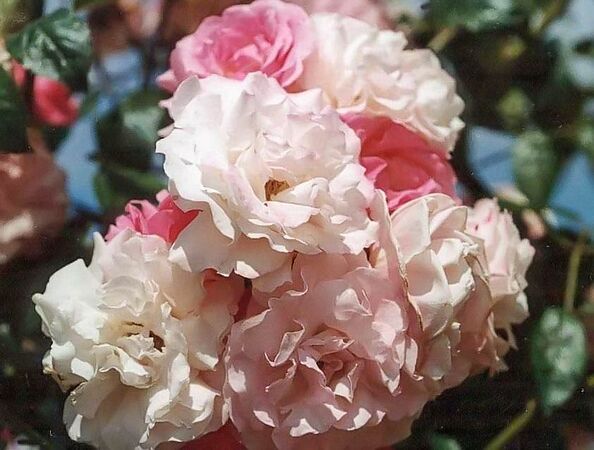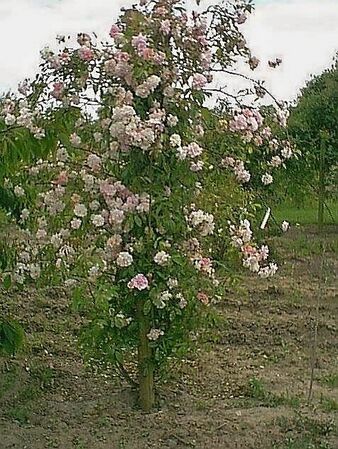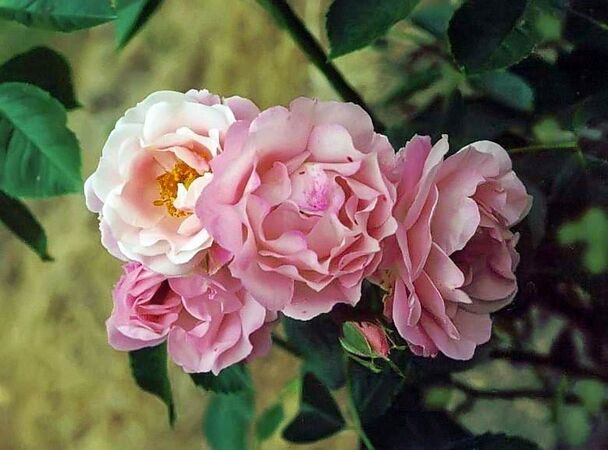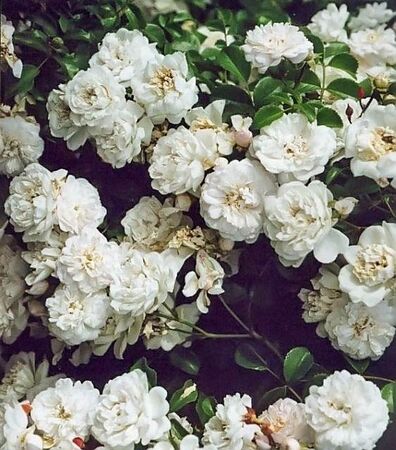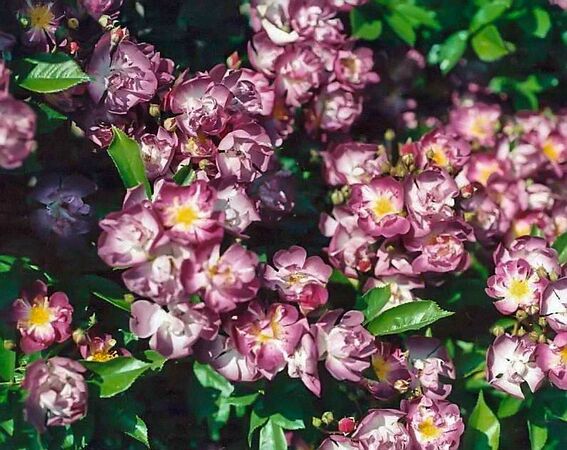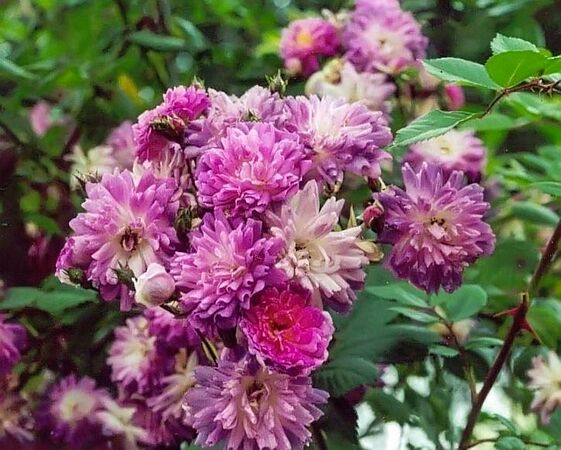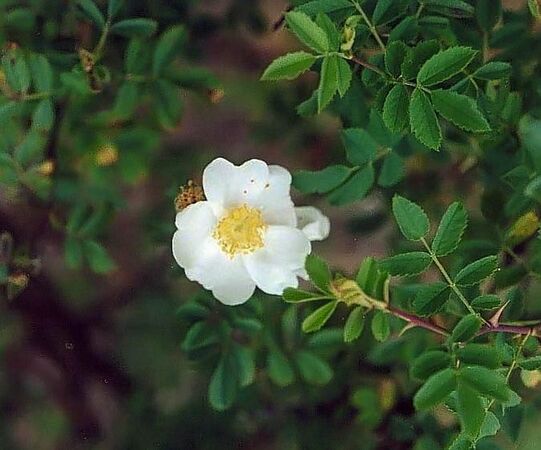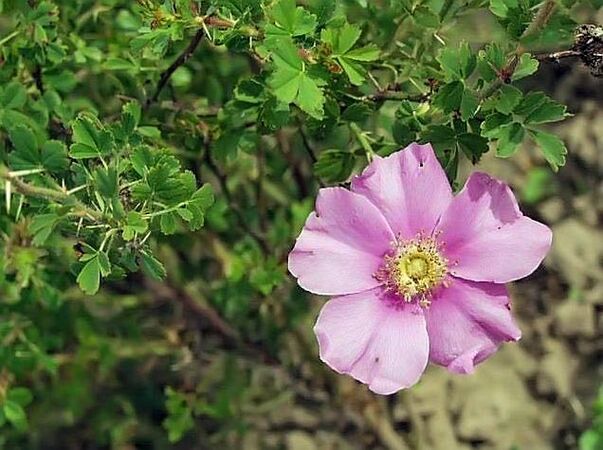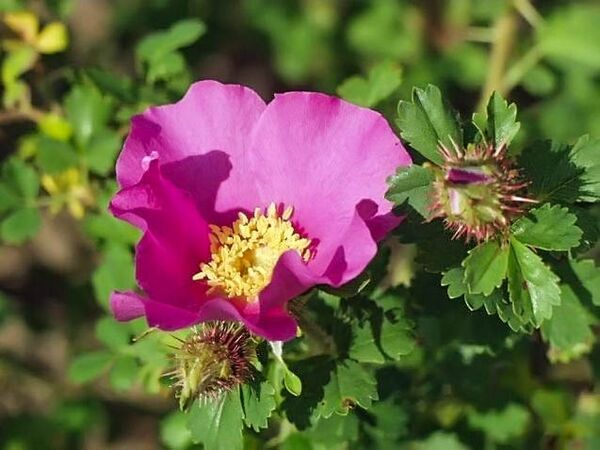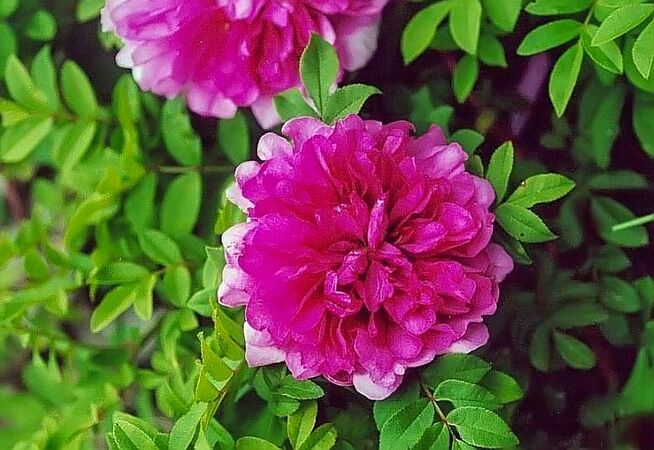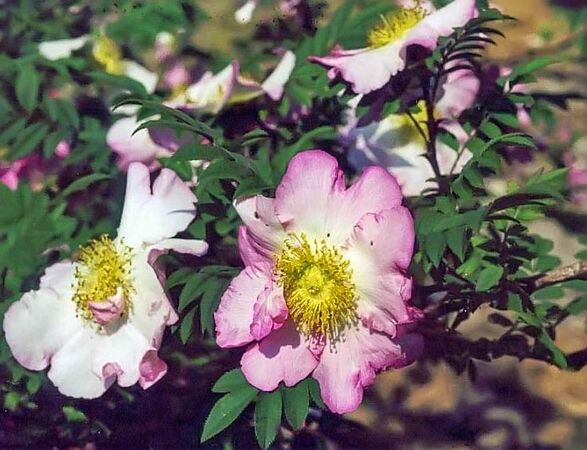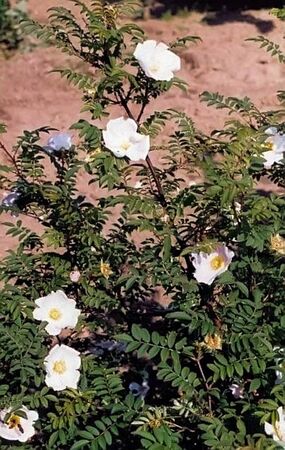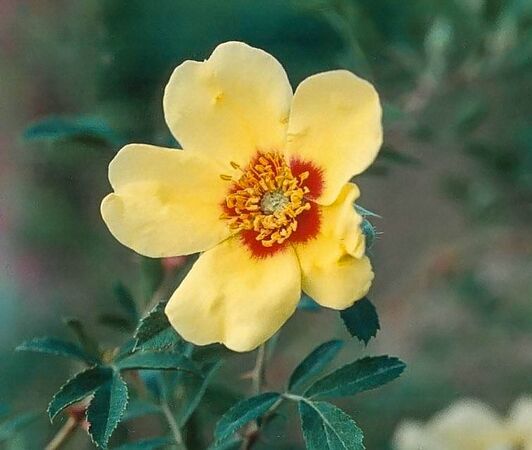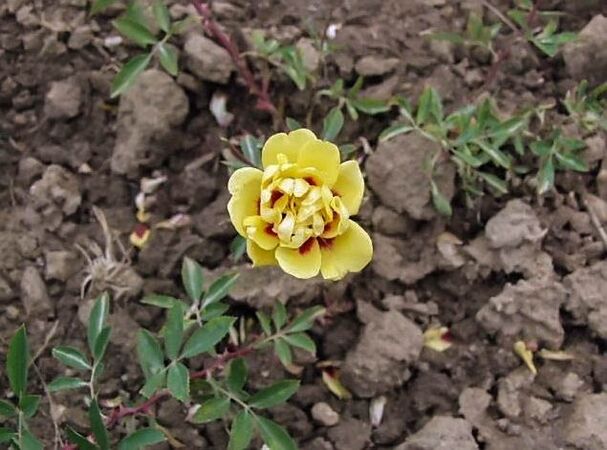La Collection Loubert - Roses Botaniques
Roses Loubert - Collection Nationale de Roses I
Botanische Rosen und ihre Hybriden • Wild Roses and their hybrids • Rosiers botaniques et hybrides
- Raymond Loubert (* 16.07.1929, ✝ 5.04.2015) hat zusammen mit seiner Frau Thérèse (* 25.02.1934) eine großartige Sammlung Botanischer und Historischer Rosen geschaffen. Damit seine Dokumentation und seine Fotos nicht verloren gehen, wurde diese Seite geschaffen. Sie zeigt die gleichen Fotos und Texte, wie die Homepage von Loubert, nur einige Rosennamen wurden auf den letzten Wissensstand gebracht. Dank an Thérèse Loubert für Ihre freundliche Genehmigung!
- Raymond Loubert (* 16.07.1929, ✝ 5.04.2015) and his wife Thérèse created a great collection of botanical and ancient roses. This site was established to preserve the documentation and all photos. It shows the same photos and texts as the homepage of Loubert, only a few rose name have been updated according to the latest findings. Warm thanks to Thérèse Loubert for her friendly approval!
- Raymond Loubert (* 16.07.1929, ✝ 5.04.2015) et sa femme Thérèse ont constitué une collection impressionnante de rosiers botaniques et anciens. Cette page a été créée afin de préserver leurs documentation et photos. Textes et photos sont identiques à ceux du site Loubert. Seuls certains noms ont été modifiés selon l'état des connaissances actuelles. Grand merci à Thérèse Loubert pour son aimable autorisation.
Rosa banksianae
- Die Banksrosen oder Rosa banksianae wurden aus dem Fernen Osten eingeführt, wo sie seit sehr langer Zeit kultiviert werden. Die weißen oder gelben Blüten formen spektakulaire Büschel. Die meisten duften, sind jedoch frostempfindlich. Bei günstigem Klima kann Rosa banksiae über 10 m in einen Baum hinein ranken und diesen überdecken.
- The Banksrosen or Rosa banksianae came from Far East to Europe, where they have been cultivated for a long time. The white or yellow blooms are forming spectacular corymbs. Most of them have delicate scents, but they are frost-sensitive. If the climate is mild, Rosa banksiae will climb in trees for more than 10 m and cover them.
- Les Roses de Banks ou Rosa banksianae furent introduites d'extrême-orient (Banks était le directeur de Kew Gardens) où elles sont cultivées depuis très longtemps. Les fleurs blanches ou jaunes forment des corymbes spectaculaires. Parfumées pour la plupart, elles craignent le gel. Sous un climat propice, Rosa banksiae peut atteindre plus de dix mètres surtout mélangée aux branches d'un arbre.
- Rosa banksianae
'Banks de Fortune' (Fortuniana)
- In der Sammlung vorhanden • Part of the collection • En collection
Bank's de fortune, (R. fortuniana banks), cremeweiß/ crème/ cream, Fortune, 1840, 12m
Fortune's bank, (R. fortuniana banks), crème/ cream, Fortune, 1840, 12m, Parfum 1
Rosa banksiae, weiß/ white/ blanc oder/ or/ ou gelb/ yellow/ jaune, China/ Chine <1807, 3 bis 6m, Parfum 2
Rosa banksiae alba plena, (Rose banks), weiß/ white/ blanc, China/ Chine <1807, 3 - 6m, Parfum 2
- R. banksiae 'alba plena' fut introduite de Canton en Chine à Kew Gardens en Grande Bretagne en 1807, parfois nommée Lady Banks pour honorer la femme du directeur de Kew à l'époque. Ses fleurs blanches doubles ont un délicat parfum de violette et son feuillage est persistant. C'est une rose de culture grimpant jusqu'à plus de 10 mètres. De 3 à 5 folioles lancéolées et dentées de 2 à 6 cm.
Rosa banksiae lutea, gelb/ yellow/ jaune, China/ Chine <1824, 3 - 6m, Parfum 1
- R. banksiae lutea fut introduite de Canton en Chine à Kew Gardens en Grande Bretagne en 1807, parfois nommée Lady Banks pour honorer la femme du directeur de Kew à l'époque. Ses fleurs blanches doubles ont un délicat parfum de violette et son feuillage est persistant. C'est une rose de culture grimpant jusqu'à plus de 10 mètres. De 3 - 5 folioles lancéolées et dentées de 2 à 6 cm.
Rosa banksiae lutescens, gelb/ yellow/ jaune, China/ Chine, 4 - 6m, Parfum 1
Rosa banksiae normalis, weiß/ white/ blanc, China/ Chine <1796, 6m, Parfum 2
Rosa banksiae pimp., gelb/ yellow/ jaune, China/ Chine <1824, 3 - 6m, Parfum 1
Rosa banksiae purezza, ('Purezza'), weiß/ white/ blanc Mansuino, 1961, 5m, Parfum 2
Rosa fortuniana banks, cremeweiß/ crème/ cream, China/ Chine <1845, 10m u. mehr, Parfum 1
Rosa fortuniana banks flore plena alba, weiß/ white/ blanc, China/ Chine kl., Parfum 1
- Parfum: 1 = schwach/ light/ légèrement parfumé, 2 = mittel/ fragrant/ parfumé, 3 = stark/ très parfumé/ very fragrant
↑ Nach oben • Top • Vers le haut ↑
Rosa bracteata
- Rosa Bracteata wurde von Engländern am Ende des 18. JH aus China importiert. (Die Art wird auch 'Rosier de Maccartney' genannt). Zwei Arten wuchsen wild in Asien, einige Hybriden befinden sich im Handel, wie die bekannte 'Mermaid'.
Wie der Name sagt, sind Bracteata durch Deckblätter (oder Brakteen) um den Kelchboden charakterisiert. Sie widerstehen gut heißem Klima, einige erreichen Höhen von 8 - 10 m. - Rosa Bracteata has been first imported from China by British at the end of the 18th century (the species is also called 'Rosier de Maccartney'). Two species are growing wildly in Asia and some hybrids are in trade, like the famous 'Mermaid'.
As the name states, Bracteata are characterized by the bracts around the calyx. They resist hot climate and some varieties reach a hight of 8 to 10 m. - Rosa Bracteata fut importée de Chine par les britanniques à la fin du 18è siècle (l'espèce est aussi nommée rosier de Maccartney). Deux espèces poussent à l'état naturel en Asie et quelques hybrides se trouvent dans le commerce dont le célèbre Mermaid.
Comme leur nom l'indique, Bracteata se caractérise par la présence de bractées foliacées autour du tube du calice. Particulièrement résistantes aux climats chauds, certaines variétés peuvent atteindre 8 à 10 mètres.
- Rosa bracteata und ihre Hybriden
'Mermaid'
- In der Sammlung vorhanden • Part of the collection • En collection
Maria Leonida, cremeweiß/ creme/ crème, Lemoyne, 1829, 1,2 - 1,5m, remontant/ repeat-flowering
Mermaid, gelb/ yellow/ jaune, Paul, 1918, 8m, Parfum 1, remontant/ repeat-flowering
Pink Mermaid, rosa/pink/ rose, Kalifornien/ California/ Californie, 1960, 10m, remontant/ repeat-flowering
Rosa bracteata (Rosa macartnea), weiß/ white/ blanc, China/ Chine, <1793, 4 - 5m, remontant/ repeat-flowering
Rosa latibracteata, kräftig rosa/ bright pink/ rose foncé, Himalaya?, Ende 19. J.H., 2,5m
- Parfum: 1 = schwach/ light/ légèrement parfumé, 2 = mittel/ fragrant/ parfumé, 3 = stark/ très parfumé/ very fragrant
↑ Nach oben • Top • Vers le haut ↑
Rosa canina
- Eine Wildrose in der Blüte und mit charakteristischem Duft, die berühmte "Dog Rose" im Englischen oder Hundsrose. An natürlichen Standorten findet man sie in ganz Europa. Sie können eine Höhe von 6 m erreichen, sind eine sehr harte Art und werden bereits lange als Veredlungsunterlage benutzt. Die Blätter der Art haben einen leichten Duft.
- A wild rose with typical blooms and caracteristic scent, the famous "Dog Rose". We find it all over Europe in nature. It may reaxh a height of 6 m, is very hardy and is used since longtime as underlay for grafting. The leaves have a light scent.
- C'est l'églantier à fleur et odeur caractéristiques, la célèbre "Dog Rose" (rose des chiens) anglaise. A l'état sauvage, on le trouve dans toute l'Europe.
Pouvant atteindre 6m de hauteur, c'est une espèce résistante qui fut longtemps utilisée comme porte-greffe. Les feuilles de l'espèce sont légèrement parfumées.
Rosa canina - Botanische • Species • Les botaniques
- Rosa canina Botanische • Species • Les botaniques
Rosa aciphylla A.Rau (falsch)
Rosa canina blondeana = Rosa blondeana Ripart ex Déségl.
Rosa exilis Crép. = Rosa canina L. var. exilis (Crép.) R.Keller
Rosa glutinosa Sm.→ Rosa rugosa Thunb.Rosa mollis Sm. ???
Rosa tomentosa x Rosa polliniana pendulina = Rosa tomentosa Sm. x Rosa x polliniana Spreng. var. pendulina (?)
↑ Nach oben • Top • Vers le haut ↑
Rosa canina - Hybriden • Hybrides • Les hybrides
- Rosa canina - Hybriden • Hybrides • Les hybrides
'Bradwardine' ??? Sollte ungefüllt sein!
'Canary Bird, Rubiginosa' ??? vermutlich Rosa xanthina 'Canary Bird'
'Creme'
'Freya' falsch, vermutlich Rosa x richardii Rehder
'Janet's Pride' ??? 'Janet's Pride' ist rosa.
'Julia Mannering', zweifelhaft
'Kiese'
'Walküre, Geschwind' (???) - diese Rose entspricht nicht der 'Walküre' von Geschwind
↑ Nach oben • Top • Vers le haut ↑
- In der Sammlung vorhanden • Part of the collection • En collection
Rosa achburensis, weiß/ white/ blanc, Usbekistan/ Uzbekistan/ Ouzbekistan 1952, 1,5m
Rosa aciphylla (= Rosa canina), weiß/ white/ blanc, Europa/ Europe, 3m, Parfum 2
Rosa agrestis (Rosa sepium), blaßrosa/ pale pink/ rose pâle, unbekannt/ unknown/ inconnu <1878, 1 - 2m
Rosa andersonnii, rosa/ pink/ rose, Hillier 1912, 2m
Rosa andersonnii collina, rosa/ pink/ rose,
Rosa arabica (?) = Rosa rubiginosa (Crépin), rosa/ pink/ rose, Europa/ Europe <1594; 2,5m
Rosa belgradensis, weiß/ white/ blanc, Serbien <1865, 2m
Rosa britzensis, hellrosa/ light pink/ rose clair, Kleinasien/ Asia Minor/ Asia mineur <1901, 2 - 3m
Rosa canina blondaeana, weiß-rosé/ white-pink/ blanc-rosé,
Rosa canina 'Crême', cremeweiß/ creme/ crème, Geschwind 1895, 3m
Rosa canina exilis, rosa/ pink/ rose,
Rosa caucasica, rosa/ pink/ rose,
Rosa corymbifera, weiß-rosé/ white-pink/ blanc-rosé, unbekannt/ unknown/ inconnu 1838, 2m
Rosa cuspidata (Rosa tomentosa Smith, R. dimorpha), hellrosa/ light pink/ rose clair, <1820
Rosa dumalis (Rosa vosagiaca), rosa/ pink/ rose, Europa/ Europe & Kleinasien/ Asia Minor/ Asia mineur <1872 2m
Rosa elliptica (rosa inodora) weiß-rosé/ white-pink/ blanc-rose, Zentraleuropa/ Central Europe/ Europe Central <1875, 2m
Rosa ferruginea, rot/ red/ rouge, weiße Mitte/ white center/ centre blanc, Zentral- & Südeuropa/ Central & South Europe/ Europe Central & Sud <1814, 2 - 2,5m
Rosa ferruginea livida, weiß/ white/ blanc, Zentral- & Südeuropa/ Central & South Europe/ Europe Central & Sud, 2 - 2,5m
Rosa glauca (Rosa rubrifolia carmenata), rosa/ pink/ rose, Zentral- & Südeuropa/ Central & South Europe/ Europe Central & Sud <1814, 2 - 2,5m
Rosa glutinosa, hellrosa/ light pink/ rose clair, Asien/ Asia/ Asie & Zentral- & Südeuropa/ Central & South Europe/ Europe Central & Sud <1821, 0,5 - 1m
Rosa haberiana, Italien? <1864
Rosa heckeliana, hellrosa/ light pink/ rose clair Italien/ Italy/ Italie, Griechenland/ Greece/ Grèce, 1m
Rosa heterophylla (Rosa sepium), kräftig rosa/ bright pink/ rose foncé, Schweiz/ Switzerland/ Suisse? <1839
Rosa horrida (Rosa ferox), weiß/ white/ blanc, Zentraleuropa, Türkei/ Turkey/ Turquie <1796, 1m
Rosa inodora (Rosa elliptica), weiß-rosé/ white-pink/ blanc-rose, Zentraleuropa/ Central Europe/ Europe Central <1875, 2m
Rosa jundzzillii (app. mod. Rosa marginata), rosa/ pink/ rose, Zentraleuropa/ Central Europe/ Europe Central <1870, 2 - 2,5m
Rosa leucantha, hellrosa/ light pink/ rose clair <1809, 3m et +
Rosa magnifica, rot/ red/ rouge, Hessen/ Hesse 1916, 2 - 3m
Rosa marginata (früher Rosa jundzzillii), rosa/ pink/ rose, Zentraleuropa/ Central Europe/ Europe Central <1870, 2 - 2,5m
Rosa micrantha sepium, blaßrosa/ pale pink/ rose pâle, Zentraleuropa/ Central Europe/ Europe Central <1800, 3m
Rosa mollis x Rosa gallica, rosa/ pink/ rose, West- u. Nordeuropa/ West and North Europe/ Europe du n. & o. <1818, 1 - 1,2m, Parfum 2
Rosa orientalis, rosa/ pink/ rose, Kleinasien/ Asia Minor/ Asia mineur <1905, 0,5m
Rosa pomifera (Rosa villosa), hellrosa/ light pink/ rose clair, Europa/ Europe, Westasien/ West Asia/ Asie occ. <1771, 2 - 2,5m
Rosa pouzinii, hellrosa/ light pink/ rose clair, Südeuropa, 1 - 2m
Rosa rhodonica, rosa/ pink/ rose,
Rosa rubiginosa, rosa/ pink/ rose, weiße Mitte/ white center/ centre blanc, Europa/ Europe <1594, 2,5m, Parfum 2
Rosa rubiginosa "Goldbusch", gelb/ yellow/ jaune Parfum 2
Rosa rubiginosa "Julia Mannering", rosa/ pink/ rose, Lord Penzance, 1895, Parfum 2
Rosa rubiginosa dimorphacantha, rosa/ pink/ rose, Europa/ Europe, Parfum 2
Rosa rubiginosa dimorphacantha x Rosa foetida (Canary Bird?), gelb/ yellow/ jaune Parfum 2
Rosa rubiginosa L. x Rosa foetida (Meg Merrilies), rosa & weiß/ pink & white/ rose & blanc, Lord Penzance 1894, 3 - 4m, Parfum 1
Rosa rubiginosa x Rosa foetida (Amy Robsart), kräftig rosa/ bright pink/ rose foncé, Lord Penzance 1894, 2,5m, Parfum 1
Rosa rubiginosa x Rosa harrisonii (Lord Penzance), weiß-gelb/ white-yellow/ blanc jaune, Lord Penzance 1894, 1 - 1,5m, Parfum 2
Rosa rubrifolia, rosa/ pink/ rose, Europa/ Europe 1814, 2m
Rosa rubrifolia pyrenaica, rosa/ pink/ rose,, Pyreneen/ Pyrenees/ Pyrénées
Rosa rubrosa carmenata, rosa/ pink/ rose, Central Exp. Farm 1923, 2,5m
Rosa rubrosa mechliniae, rosa/ pink/ rose, unbekannt/ unknown/ inconnu
Rosa rubrotincta (Hebe's Lip, Reine blanche), weiße Ränder, rot überhaucht/ white edges, tinted red/ blanc bords teintés rouge, Lee <1846, 1 - 1,3m
Rosa scabriuscula, rosa/ pink/ rose, Alpen/ Alps/ Alpes <1896
Rosa serafinii, blaßrosa/ pale pink/ rose pâle, Mittelmeer/ Mediterranean / Méditerranée <1914, 0,3 - 0,9m
Rosa sicula, weiß/ white/ blanc,
Rosa spherica, rosa/ pink/ rose,
Rosa stylosa, weiß bis hellrosa/ white to light pink/ blanc à rose clair, Westeuropa/ West Europe/ Europe occ. <1838, 3m
Rosa subcanina, hellrosa/ light pink/ rose clair, Europa/ Europe
Rosa subglobosa (Rosa tomentosa subglobosa), rosa/ pink/ rose,
Rosa tomentella (Léman), weiß-blassrosa, Europa/ Europe <1905, 2,5 - 3m
Rosa tomentosa (Rosa cuspidata, R. dimorpha), rosa/ pink/ rose, Europa/ Europe <1820, 2m, Parfum 3
Rosa tomentosa cinerescens, cremeweiß/ creme/ crème, Europa/ Europe <1820, 2m, Parfum 2
Rosa tomentosa x Rosa polliniana pendulina, rosa/ pink/ rose, Parfum 1
Rosa villosa (Rosa pomifera), hellrosa/ light pink/ rose clair, Europa/ Europe, Westasien/ West Asia/ Asie occ. <1771, 2 - 2,5m
Rosa villosa recondita, rosa/ pink/ rose, <1771 1,5 - 1,8m
Rosa vosagiaca (Rosa dumalis), rosa/ pink/ rose, weiße Mitte/ white center/ centre blanc, Europa/ Europe & Kleinasien/ Asia Minor/ Asia mineur <1872, 2m
Rosa x auneri
- Parfum: 1 = schwach/ light/ légèrement parfumé, 2 = mittel/ fragrant/ parfumé, 3 = stark/ très parfumé/ very fragrant
↑ Nach oben • Top • Vers le haut ↑
Rosa carolina
- Als Wildrose ist sie in Nord Amerika heimisch, aber Rosa carolina wurde bereits im 18. Jahrhundert kultiviert und vermehrt. Die botanischen Arten entwickeln sich nicht so üppig, wie manche europäische oder asiatische Arten, aber ihre blass-rosa Blüten haben ihren Charme nicht verloren. Rosa carolina wird oft mit Rosa palustris verwechselt, sie blüht jedoch im Juni. Zahlreiche Hybriden bereichern diese Gruppe amerikanischer Rosen.
Neuere amerikanische genetische Untersuchungen lassen nur geringe Unterschiede zur Gruppe der Cinnamomae erkennen und man hat sie deshalb umklassifiziert. Wir bleiben jedoch bei der alten Einstufung, selbst wenn dies in unserer Sammlungsliste nicht der Fall ist. - This wild rose is native from North America, but Rosa carolina was already cultivated and propagated in the 18th century. The botanical species don't develop as abundant as some european or asiatic cultivars, but the soft pink blossoms didn't loose their charm. Often confused with Rosa palustris, Rosa carolina blooms during June. Numerous hybrids enrich this American group.
Recent genetic studies in the USA show, that Rosa carolina does not differ significantly from the group of Cinnamomae and was regrouped. But we remain here with the old classification, even if we show them different in some of our lists - Poussant à l'état sauvage en Amérique du nord, Rosa carolina fut cultivé et multiplié dès le 18ème siècle. Les espèces naturelles n'ont pas le développement de certaines espèces européennes ou d'Asie, mais ses fleurs d'un rose pâle ne sont pas dénuées de charme. Souvent confondue avec Rosa palustris, Rosa carolina fleurit en juin. De nombreux hybrides enrichissent le groupe de roses américaines.
De récentes études génétiques américaines considèrent que Rosa carolinae n'est pas assez distinct du groupe des cinnamomae et les reclassent comme tels. Nous conservons la classification ancienne même si ce n'est pas le cas dans la liste de notre collection.
- Rosa carolina
Rosa x spaethiana Graebn. (Thumbnail vergrößert)
Rosa ultramontana (S.Watson) A.Heller (Thumbnail vergrößert)
'Theano' ? --> (Rosa californica f. plena Rehder)
↑ Nach oben • Top • Vers le haut ↑
- In der Sammlung vorhanden • Part of the collection • En collection
Rosa andreae, rosa/ pink/ rose, Lange 1875
Rosa bushii, rosa/ pink/ rose, Nordamerika/ North America/ Amérique du Nord <1918
Rosa carolina, (R. parviflora), rosa/ pink/ rose, Nordamerika/ North America/ Amérique du Nord <1826, 1,5m
Rosa carolina grandiflora humilis, rosa/ pink/ rose,, Nordamerika/ North America/ Amérique du Nord <1826, 1,5m
Rosa carolina plena, rosa/ pink/ rose, Nordamerika/ North America/ Amérique du Nord <1820, 0,5m
Rosa foliolosa, hellrot/ light red/ rouge clair, Nordamerika/ North America/ Amérique du Nord <1880, 0,3 - 0,7m
Rosa gymnocarpa, rosa/ pink/ rose, Nordamerika/ North America/ Amérique du Nord <1893, 0,5 - 1,5m
Rosa johanensis, rosa/ pink/ rose, Nordamerika/ North America/ Amérique du Nord <1918
Rosa karaalmensis, Zentralasien/ Central Asia/ Asie Centrale <1979
Rosa macounii, (Rosa woodsii), hellrosa/ light pink/ rose clair, Nordamerika/ North America/ Amérique du Nord <1826, 3m
Rosa minutifolia alba, weiß/ white/ blanc, Nordamerika/ North America/ Amérique du Nord 1888, 0,6m
Rosa nitida, rosa/ pink/ rose, Nordamerika/ North America/ Amérique du Nord <1807, 0,5 - 0,7m
Rosa nitida 'Dart's Defender', kräftig rosa/ bright pink/ rose foncé, Nordamerika/ North America/ Amérique du Nord c.1910, 1 à 1,5m
Rosa nutkana, (R. amblyotis), rosa/ pink/ rose, Nordamerika/ North America/ Amérique du Nord <1876, 1,5m
Rosa palustris, rosa/ pink/ rose, Nordamerika/ North America/ Amérique du Nord <1726, 1 - 1,8m
Rosa palustris nutaliana, rosa/ pink/ rose, Nordamerika/ North America/ Amérique du Nord
Rosa parviflora, (R. carolina, R. humilis), rosa/ pink/ rose, Nordamerika/ North America/ Amérique du Nord <1826, 1,5m
Rosa rugotida, rosa/ pink/ rose, Nordamerika/ North America/ Amérique du Nord
Rosa spaethiana, rose carmin, Graebner <1902, 1,5m
Rosa stellata mirifica, rosa-lila/ pink-lilac/ rose lilacé, Nordamerika/ North America/ Amérique du Nord <1916, 0,8m
Rosa sublaevis, rosa/ pink/ rose, Italien/ Italy/ Italie, 2,5m
Rosa ultramontana, rosa/ pink/ rose, Nordamerika/ North America/ Amérique du Nord <1888, 0,6 - 1,5m
Rosa virginiana, (R. humilis), hellrosa/ light pink/ rose clair, Nordamerika/ North America/ Amérique du Nord <1807, 1,5m
Rosa virginiana alba, (R. carolina alba,) weiß/ white/ blanc, Nordamerika/ North America/ Amérique du Nord <1826, 1,5m
Rosa virginiana minima, blaßrosa/ pale pink/ rose pâle, Nordamerika/ North America/ Amérique du Nord, 1,5m
Rosa woodsii, (Rosa macounii), rosa/ pink/ rose, Nordamerika/ North America/ Amérique du Nord <1880, 3m
Rosa woodsii fendleri, rosa-lila/ pink-lilac/ rose lilas, Nordamerika/ North America/ Amérique du Nord <1888, 1,8m
Rosa x mariae graebnerae Asch. & Graebn., rosa/ pink/ rose, Ascherson & Graebner 1900, 1,5m
Rosa yainacensis, rosa/ pink/ rose, Nordamerika/ North America/ Amérique du Nord <1903, 1,5m
Theano, (Rosa californica plena hort. non Rhed.), rosa/ pink/ rose, Geschwind 1894? 1895, 2 - 2,5m
- Parfum: 1 = schwach/ light/ légèrement parfumé, 2 = mittel/ fragrant/ parfumé, 3 = stark/ très parfumé/ very fragrant
↑ Nach oben • Top • Vers le haut ↑
Rosa chinensis
- Die Chinarosen, auch Bengalrosen genannt, da sie in Indien häufig vorkommen bzw. über Indien zu uns kamen (so 'Rosa Indica'), haben eine wichtige Rolle in der Geschichte der Rosen gespielt. Die remontierenden Arten, die von Engländern am Ende des 19. Jahrhunderts nach Europa gebracht wurden, sind der Ursprung des größten Teils der heutigen, modernen öfterblühenden Rosen. Heimisch in Yunnan, aber auch in Chinas Städten kultiviert, bieten sie eine erstaunliche Vielfalt an Farben und Formen. Da sie den Frost fürchten, sind die Chinarosen nicht für alle Breitengrade geeignet, obwohl einige der Kälte des Himalaya widerstehen.
- The Chinas, also called Bengal Roses, since they often grow in India too or came via India to us (like 'Rosa Indica'), have played an important role in the history of roses. The reblooming species, that were brought to Europe by British collectors at the end of 19th century, are the orign of most of our modern, reblooming roses. Naturally growing in Yunnan, but cultivated in many cities of China too, they introduced an estonishing variety of coulors and forms. Since they don't like the freeze, they are not suitable for all latitudes, although certain species withstand the frost of the Himalaya.
- Les roses de Chine, autrefois appellées du Bengale car fréquentes en Inde (d'ou R. Indica), ont une importance capitale dans l'histoire des roses, car les specimens remontants ramenés par les botanistes anglais de la fin du 19ème siècle, sont à l'origine de la plus grande partie des roses remontantes modernes. Poussant à l'état naturel dans le Yunnan, mais aussi cultivées dans les villes, elles offrent des variétés de couleurs et de formes étonnantes. Craignant le gel, les roses de Chine ne s'acclimatent pas sous toutes les latitudes, cependant certaines résistent aux froids himalayens!
- Rosa chinensis
Rosa chinensis multipetala = Rosa chinensis var. chinensis ?
Rosa indica 'Major' = 'Indica Major Grimpant'
Rosa odorata = Rosa odorata var. odorata
'Agrippina' ('Cramoisi Supérieur')
'Alice Hamilton' - falsch/ erroneous / erroné
'Arethusa'
'Brennus'
'Ducher'
'Fabvier'
'Flora McYvor' ist vermutlich 'Flora McIvor'
'Malton', Synonym 'Fulgens, Chinarose'
'Hermosa'
'Junon'
'L'Ouche'
↑ Nach oben • Top • Vers le haut ↑
- In der Sammlung vorhanden • Part of the collection • En collection
Admiration (L'), rose violacé, Robert 1856, 1,8m
Agrippina (Cramoisi Supérieur), rouge foncé, Coquereau 1832 1m, Parfum 2
Alice Hamilton, abricot, Nabonnand 1903, 1 à 1,2m
Alice Hoffmann, rose rouge, Hoffmann 1897 0,6m
Arethusa, jaune nuancé, Paul 1903, 2m, remontant/repeat-flowering
Beauty of Rosemawr, rose veiné blanc & rouge, Conard & Jones 1903 1m, Parfum 2
Bébé Fleuri, rose, Dubreuil 1906 1m, remontant/ repeat-flowering
Belle de Crécy, rose foncé, Roeser/Hardy 1829, 1 à 1,5m, Parfum 2
Bengale cerise r rouge p Chine <1800 0,6m, remontant/ repeat-flowering
Bengale Rouge (Bengali rubra), rouge, chine <1800 0,6m, remontant/ repeat-flowering
Blairii N°1, rose, Blair 1844 2m, Parfum 3, remontant/ repeat-flowering
Blairii N°2, rose, Blair 1845, 3 à 4m, Parfum 3, remontant/ repeat-flowering
Brennus (Queen Victoria), rouge, Laffay 1830, 2,5m
Camélia Rose, rose p Prévost c.1830 cl., remontant/ repeat-flowering
Catherine II, rose nacré, Laffay 1832, 0,5m, remontant/ repeat-flowering
Comtesse du Cayla, rose, Guillot 1902, 0,5 à 1m
Cramoisi Éblouissant, rouge, hollande 1839, 1m
Cramoisi Supérieur (Agrippina), rouge foncé, Coquerel 1832 1m
Ducher, blanc, Ducher 1869 1,2m, Parfum 2, remontant/ repeat-flowering
Duke of York, rose, chine <1894 1m, Parfum 2, remontant/ repeat-flowering
Fabvier (Colonel Fabvier), rouge, Laffay 1832, 0,5m, Parfum 1
Fellemberg Rose, rouge, Fellemberg 1857, 2 à 3m
Flocon de Neige, blanc, Lille 1898, 2 à 3m
Flora Mac Yvor, blanc et rose lilas, Laffay 1830, 1,5m, Parfum 2, remontant/ repeat-flowering
Fortune's Double Yellow, jaune, chine <1845, 3m
Frédéric II de Prusse, violet pourpre, Verdier 1847, 2,5m, Parfum 2
Gloire des Rosomanes (Red Robin), rouge, Vibert 1825 1,2m, Parfum 2, remontant/ repeat-flowering
Gräfin Estherazy, rose rouge, Geschwind
Great Western, rose carminé, amérique du n. c.1900, 1,5 à 2,5m, Parfum 1
Gruss an Teplitz, rose rouge, Geschwind 1897, 2 à 3m, Parfum 3, remontant/ repeat-flowering
Hermosa (Armosa, rose, Marcheseau 1840 1m, Parfum 2, remontant/ repeat-flowering
Irene Watts, rose, Guillot 1896, 0,5m, Parfum 1, remontant/ repeat-flowering
Jean Bach Sisley, rose argenté, Dubreuil 1889, 1,2m, Parfum 2
Junon Rose, Hardy >1820 1m, Parfum 3
Le Vésuve (Lemesle), rose, Laffay 1825, 1,5m, Parfum 3, remontant/ repeat-flowering
Lijiang Rose, rouge cuivré, chine, 4 à 5m, Parfum 1
L'Ouche, rose, Buatois 1891, 1,2m, remontant/repeat-flowering
Mme Laurette Messiny, rose saumon, Guillot 1887, 1,2m, remontant/ repeat-flowering
Ober Hofgärtner Kalb, rose carmin, Felberg-Leclerc 1913, Parfum 2, remontant/ repeat-flowering
Old Blush (Parson's Pink China), rose, chine <1000 cl., Parfum 2, remontant/ repeat-flowering
Papa Hémeray, vermillon centre blanc, Hémeray-Aubert 1912, 0,5 à 0,8m, remontant/ repeat-flowering
Princesse de Sagan, rouge foncé, Dubreuil 1887, 0,7m, Parfum 2
Queen Mab, abricot, Paul 1896, 0,6m
Rivers' George IV, cramoisi, Rivers c.1817, Parfum 2
Rosa chinensis multipetala, rose, chine, 1,5 à 2,5m, remontant/ repeat-flowering
Rosa chinensis mutabilis, rose cuivré, chine <1894, 1 à 6m, remontant/ repeat-flowering
Rosa chinensis semperflorens, rose, chine <1792, 1 à 1,5m, remontant/ repeat-flowering
Rosa chinensis spontanea, rose à rouge foncé chine, remontant/ repeat-flowering
Rosa chinensis viridiflora, vert, USA 1833 1,2m
Rosa dura (Rosa odorata dura), blanc, Parfum 2
Rosa gigantea (Rosa odorata gigantea), jaune ivoirev, chine <1882, 10m et +, Parfum 2
Rosa glomerata, blanc, chine <1915
Rosa indica major, rose, inde
Rosa manettii, rose, UK <1849, 1,8m
Rosa odorata, rose chair, c.1880, 5 à 7m
Rosa odorata dura, blanc, chine, Parfum 2
Rosa odorata ochroleuca, jaune clair, chine <1824, 1,8 à 2,5m, Parfum 2
Rosa rouletii, rose, Correvon 1922, 0,2m
Rosa serratipetala (Oeillet de St-Arquey), centre rose bords cerise, jacques?vilfray 1831? 1912, 1,2m, Parfum 1, remontant/ repeat-flowering
Rosa viridiflora (Rosa chinensis viridiflora) vert, Bambridge & Harrison 1856, 1 à 1,5m
Rosier Richert rouge, Richert
Sanguinea (sport de Slater Crimson?), cramoisi, chine 1887, 0,6m, remontant/ repeat-flowering
Sanguinea Richert (?provenant de), cramoisi, 1m, remontant/ repeat-flowering
Scarman's Crimson China, rose p Scarman 1995 0,8m, remontant/ repeat-flowering
Slater's Crimson China (Rosa chinensis semperflorens), rose soutenu, chine <1790, 1 à 1,2m, remontant/ repeat-flowering
Sophie’s Perpetual, rose foncé, Brooke 1960 2,5m, Parfum 2, remontant/ repeat-flowering
St Prist de Breuze, rouge centre rose, Desprez 1838, 1,2m, remontant/ repeat-flowering
Velours Épiscopal, pourpre, france >1863, 1,8m
- Parfum: 1 = schwach/ light/ légèrement parfumé, 2 = mittel/ fragrant/ parfumé, 3 = stark/ très parfumé/ very fragrant
↑ Nach oben • Top • Vers le haut ↑
Rosa cinnamomae
- Die 'Zimt Rosen' tragen den Namen nicht wegen ihres Duftes, sondern wegen der Farbe ihrer Triebe. Die Cinnamomae (1759 so von Linnée benannt), haben viele Unterarten und wir könnten sie in viele Rubriken unterteilen. Die Genetiker und Botaniker benennen um die fünfzig verschiedene Spezies (und regruppieren die Carolinae dorthin).
Bekannt sind sie auch als 'Mai-Rose', blühen allgemein nur einmal und sind zumeist ungefüllt. - The 'Cinnamon Rose' has its name not from the scent, but from the colour of its canes. The Cinnamomae (named by Linnée in 1759) have numerous subspecies and we could open several categories to describe them. The genetics and botanists have named about fifty species (and regrouped the Carolinae here).
They are known as 'May Rose' too, and normally bloom only once and are single. - Rosiers canelle, non pour le parfum de leurs fleurs, mais plutôt pour la couleur de leurs tiges, les cinnamomae (nommées ainsi par Linné en 1759) regroupent de nombreuses sous-espèces et pourraient faire l'objet de plusieurs rubriques. Les généticiens et botanistes en dénombrent une cinquantaine d'espèces (y regroupant les Carolinae).
Connues aussi sous le nom de 'Roses de mai', elles ne fleurissent en général qu'une fois et sont le plus souvent simples.
Rosa cinnamomae - Botanische • Species • Les botaniques A - M
- Rosa cinnamomae Botanische • Species • Les botaniques A - M
Rosa acicularis Lindl. (Rosa baicalensis Turcz. ex Besser)
Rosa albertii Regel, falsch, sollte weiß sein
Rosa iberica Sennen & Elias (Rosa rugosa iberica)
↑ Nach oben • Top • Vers le haut ↑
Rosa cinnamomae - Botanische • Species • Les botaniques N - Z
- Rosa cinnamomae Botanische • Species • Les botaniques N - Z
Rosa paulii repens rosea = Rosa x paulii Rehder var. paulii = Rosa rugosa repens rosea hort.
Rosa pseudoalpina (Rosa cinnamomea L. var. pseudoalpina C.A.Mey.)
Rosa stenodonta ? - unbekannte Botanische Rose
Rosier Tenuifolia ('Tenuifolia')
↑ Nach oben • Top • Vers le haut ↑
Rosa cinnamomae - Hybriden • Hybrides • Les hybrides
- Rosa cinnamomae Hybriden • Hybrides • Les hybrides
'Agnes'
'Cibles'
'Marga'
'Nevada'
'Ritausma'
'Rugspin'
'Ruskin'
↑ Nach oben • Top • Vers le haut ↑
- In der Sammlung vorhanden • Part of the collection • En collection
rosa acicularis rose foncé, am & europe du N <1905 1m, Parfum 2
Rosa acicularis nipponensis rose foncé, japon <1894 1,5m, Parfum 2
Rosa albertii rose Regel 1877
Rosa alpina aculeata rose
Rosa alpina adenophora rose hongrie
Rosa alpina stenodonta rouge
Rosa amblyotis C.A.Meyer (= R. nutkana?) rose kamtchatka <1917 1,5m
Rosa arkansana rouge clair am. du N <1715 0,5m
Rosa arkansana porter remontant, rose am. du N <1880 0,5m, remontant/ repeat-flowering
Rosa arkansana porter var.'corsley form' (R. arkansana x R. moyesii) rose am. du N <1880 0,5m
Rosa arnoldiana "khirghisia" blanc
Rosa atropurpurea rose france 3m
Rosa bella rose chine <1905 2,5m
Rosa blanda (R. fraxinifolia Lindl., rose du labrador) rose, labrador <1773 2m, Parfum 1
Rosa borissovae rose sibérie? 2m
Rosa californica rose californie c.1878 2 à 3m
Rosa californica cam. deep pink rose californie 2 à 3m
Rosa californica minima rose californie 2m
Rosa californica plena (theano) rose, Geschwind 1894 2m, Parfum 2
Rosa calocarpa lilas bruant 1891 1,2m
Rosa caudata rose chine <1896 4m
Rosa cinnamomae flore plena (R. majalis) rose inconnu <1569 1,3m
Rosa cinnamomae nepalensis rose himalaya 1 à 1,5m
Rosa cinnamomae rugosa rose foncé europe
Rosa coruscans rouge
Rosa coryana rose gb 1926 2,5m
Rosa corymbulosa rouge centre blanc chine <1908 2m
Rosa daniellii
Rosa davidii rose mauve, himalaya <1908 3m, Parfum 1
Rosa davidii "fenja" rose Petersen <1965 1,5 à 2m
Rosa davurica rose asie <1905 1m
Rosa dumetorum (laxa) blanc russie <1889 1 à 2m
Rosa fedtschenkoana blanc chine <1875 1,5 à 3m
Rosa forrestiana rose chine <1918 3m
Rosa fraxinifolia lindl. (R. blanda) rose labrador <1773 2m
Rosa froebellii (Rosa coriifolia froebelii, R. dumetorum) rose russie <1889 1 à 2m
Rosa giraldii rose centre blanc chine <1897 2 à 2,5m
Rosa glabrifolia blanc, 2m, Parfum 2
Rosa hemsleyana rose chine <1904 2m
Rosa hillieri rouge gb (Hillier?) c.1920
Rosa holondata (rosa moyesi rosea) rose chine <1908 2,5m
Rosa iberica rose
Rosa laxa microcarpa rose asie mineure 19è 1 à 1,3m
Rosa laxa retzius blanc turkestan <1800 1m
Rosa macrophylla rose foncé himalaya <1818 2 à 5m
Rosa macrophylla crasseaculeata (rosa setipoda) rose clair chine int Vilmorin <1895 3 à 5m
Rosa macrophylla glaucophylla rose chine <1895 7 à 10m
Rosa majalis (rosa cinnamomae flora plena) rose asie min. <1569 1,3m
Rosa majalis plena rose asie min. 1597 1,2 à 1,5m
Rosa marretii rose sakhalin <1910 1,5m
Rosa melina rose foncé Greene 1930 1,8m
Rosa micrugosa rose pâle inconnu <1905 1,5m
Rosa micrugosa alba blanc europe <1910 1,5 à 1,8m
Rosa montana blanc france 1 à 2m
Rosa moyesi rosea (rosa holodonta) rose chine <1908 2,5m
Rosa moyesii rouge foncé chine <1890 3 à 4m
Rosa moyesii "Beng Shaling" rose foncé chine
Rosa moyesii "Eddie Crimson" rouge foncé Eddie 1956 3 à 4m
Rosa moyesii "Eddie’s Jewel" rouge foncé Eddie 1962 3 à 4m
Rosa moyesii "Geranium" rouge géranium chine <1938 1,5 à 2m
Rosa moyesii "Hillieri" rouge sombre Hillier <1920 2m
Rosa moyesii 'Eos' rouge foncé Ruys 1950 3m
Rosa moyesii fargesii rose saumon chine <1900 2 à 3m
Rosa moyesii nevada blanc Dot 1927 2,5m
Rosa myalis
Rosa oxyodon rose foncé caucase <1904 1,5m
Rosa paulii repens blanc Paul 1903 3 à 4m
Rosa paulii repens rosea rose inconnu <1912 1m
Rosa pendulina "Amadis" rouge Laffay 1829 1 à 1,5m
Rosa pendulina "Morletti" rose foncé europe <1883 1,5m
Rosa pendulina (rose des alpes) rose à pourpre europe sud & cent <1683 1 à 1,5m
Rosa pendulina gracilis rose lilas Wood 1830 2m
Rosa pendulina inermis rose à pourpre europe sud & cent <1683 1 à 1,5m
Rosa pendulina oxyodon rose centre blanc europe <1904 1,5m
Rosa pendulina pyrenaica rose, pyrénées <1815 0,35m, Parfum 2
Rosa pendulina subsimplicided rose europe
Rosa pisocarpa rose lilas amérique du n. <1882 1,5 à 2m
Rosa pratii rose foncé chine <1908 1 à 2m
Rosa pruhoniciana rouge foncé Zemann 1924
Rosa pseudo alpina rose
Rosa regeliana rubra (rosa rugosa rubra) rouge pourpre japon <1796 1,5 à 2m
Rosa reversa rouge foncé Europe 1820 1 à 2m
Rosa reversa "duftfrucht" europe
Rosa reversa maxima rose rouge europe
Rosa rousseauriorum (boivin) rose Canada 1,2m
Rosa rugosa "Apples" rouge, Paul 1896, Parfum 1
Rosa rugosa "Frederic Worth", rose foncé, Parfum 1, remontant/ repeat-flowering
Rosa rugosa "Pourpre ancien" pourpre
Rosa rugosa "White Surprise" blanc, Parfum 1
Rosa rugosa alba blanc, asie <1854 2,5m, Parfum 2
Rosa rugosa atropurpurea (r.rugosa rubra) rouge pourpre, japon <1796 1 à 1,5m, Parfum 1
Rosa rugosa calocarpa lilas cramoisi, Bruant 1894 1,2m, Parfum 1
Rosa rugosa delicata rose lilas, Cooling 1898 2m, Parfum 1
Rosa rugosa germanica violet, Müller 1890 1,5 à 1,8m, Parfum 1
Rosa rugosa glandulosa (R. maximowicziana) rose, Parfum 1
Rosa rugosa glandulosa alba blanc, Parfum 1
Rosa rugosa 'Hansa' rose foncé, Schaum 1905 2 à 2,5m, Parfum 1
Rosa rugosa iberica rose, Parfum 1
Rosa rugosa kamtchatica blanc, sibérie <1770, Parfum 1
Rosa rugosa lyndlyana rose, Parfum 1
Rosa rugosa magnifica rose, Van Fleet 1907, Parfum 1
Rosa rugosa malmundiarensis, Parfum 1
Rosa rugosa microphylla rose, Parfum 1
Rosa rugosa 'Moje Hammarberg' (r.moyesii hammarbezerg) rose, Hammarberg 1931, Parfum 2
Rosa rugosa monterosa, rose, Parfum 1, remontant/ repeat-flowering
Rosa rugosa regeliana rubra rouge pourpre, japon <1796 2,5m, Parfum 2
Rosa rugosa scabrosa rose cramoisi violacé, c.1939 1,8m, Parfum 1
Rosa rugosa thunbergiana rose pourpre, Thunberg <1784, Parfum 1
Rosa rugosa 'Troll' rose, Parfum 1
Rosa rugosa 'White Surprise' blanc, lens 1987, Parfum 1
Rosa scabrata rose pourpre caucase <1823 3m
Rosa setipoda (R. macrophylla crasseaculeata) rose clair, chine int Vilmorin <1895 3 à 5m, Parfum 1
Rosa spaldingii blanc rosé Crépin 1915 1m
Rosa spinulifolia rose rouge europe cent. 1 à 3m
Rosa spinulifolia "Aicha" (r.pimp.aïcha) jaune Petersen 1 à 2m
Rosa spithamea S. Watson rose californie 0,3m
Rosa stenodonta blanc alpes <1886
Rosa sweginzowii macrocarpa rose clair centre blanc, chine <1909 4m, Parfum 2
Rosa tenuifolia? (Tenuiflora) blanc alpes <1904
Rosa thunbergiana (R. rugosa thunbeergiana), rose pourpre, Thunberg <1894 Parfum 1, remontant/ repeat-flowering
Rosa underwoodii blanc amérique du n. <1904 1 à 2m
Rosa wardii blanc tibet <1924 2m
Rosa willmottiae rose lilas chine <1904 2m
Rosa x highdownensis rose saumoné foncé, UK 1928 2 à 2,5m, Parfum 2
Rosa x micrugosa Henkel rose 1,5m
Rosa x micrugosa Henkel var. alba hort. blanc 1,5m
Rosa x wintoniensis rose foncé centre blanc, Hillier 1928 2 à 3m, Parfum 2
- Parfum: 1 = schwach/ light/ légèrement parfumé, 2 = mittel/ fragrant/ parfumé, 3 = stark/ très parfumé/ very fragrant
↑ Nach oben • Top • Vers le haut ↑
Rosa pimpinellifoliae
- Ursprünglich wurde sie spinosissima genannt, bekannt in Schottland ("Die Schottische Rose"), verbreitet in der nördlichen Hemisphere auf den Dünen der Meeresküsten, in Sibirien oder China. Die natürlichen Varietäten von Rosa pimpinellifoliae (lateinisch: mit dem Laub der Pimpernelle) haben alle ein besonderes Laub gemeinsam. Die Blätter sind klein und fein.
Die sehr widerstandsfähigen natürlichen Varietäten blühen nur einmal, was auf die neueren Schöpfungen nicht zutrifft. Es gibt ein Dutzend natürliche Arten (ohne die Synonyme mitzuzählen), zahlreiche Hybriden und Gartenformen. - Initially they were called spinosissima, known from Scotland ('Scots Rose') they are widespread in the northern hemisphere, growing in the dunes of seashores, in Siberia or China. The natural varieties of Rosa pimpinellifoliae (latin: with the leaves of pimpernel) have all this special leaves commonly. The leavlets are small and fine.
The wild species are very robust and once blooming, what is not the case with newer creations of today. About a dozen wild species exist (without counting all the synonymes) and numerous hybrides and garden forms. - Appelée à l'origine spinosissima, connue en Ecosse ("the Scotch rose") répandues dans l'hémisphère nord sur les dunes des côtes maritimes, en Sibérie ou en Chine, les variétés naturelles de Rosa pimpinellifoliae (en latin à feuille de pimprenelle) ont en commun un feuillage particulier. Les feuilles sont petites et fines.
Très résistantes, les variétés naturelles ne fleurissent qu'une fois, ce qui n'est pas le cas des créations plus récentes. Il existe une quinzaine d'espèces naturelles (sans compter les synonymies) de nombreux hybrides et variétés horticoles.
Rosa pimpinellifoliae - Botanische • Species • Les botaniques
- Rosa pimpinellifoliae Botanische • Species • Les botaniques
Rosa altaica Willd. Falsches Foto, es stellt Rosa roxburghii Tratt. dar.
Rosa spinosissima L. var. altaica-balcana hort. = 'Grandiflora No. 2'
Rosa sericea Lindl. (Rosa pteracantha)
Venusta Pendula - keine Bibernellrose! Hybride von Rosa arvensis Huds..
↑ Nach oben • Top • Vers le haut ↑
Rosa pimpinellifoliae - Hybriden • Hybrides • Les hybrides
- Rosa pimpinellifoliae Hybriden • Hybrides • Les hybrides
'Aicha'
'Aristide'
Falsche 'Petite Écossaise'
'Poppius'
'Queen Mary' = 'King of Scots'
'Repartee' ? = Rosa ripartii Déségl. ?
↑ Nach oben • Top • Vers le haut ↑
- In der Sammlung vorhanden • Part of the collection • En collection
Rosa aveyronensis, rose pâle, France 1900, 2m
Rosa compactilla, jaune clair, 0,5m
Rosa farreri, rose pâle, Chine <1915, 2m
Rosa farreri persetosa (issu de Rosa elegantula?), rose & blanc, Chine <1915, 2m
Rosa haedleyensis, blanc, Warburg 1920
Rosa x hibernica, rose pâle, p Irlande 1802, 1 - 2m
Rosa hugonis hemsley. var. flore plena, jaune, Chine <1899, 2 - 2,5m, Parfum 1
Rosa nanothamnus var. litvinovi, rose, 1935
Rosa omeiensis atrosanguinea, blanc, inconnu, 2,5m
Rosa omeiensis chrysocarpa, blanc, Himalaya <1901, 3 - 4m
Rosa omeiensis pteracantha (Rosa sericea pteracantha), blanc, Himalaya <1890, 2,5m
Rosa omissa (rosa sherardii) rose foncé * europe cent. <1933 1,8m, Parfum 1
Rosa pimpinellifolia albida, blanc
Rosa pimpinellifolia chlorocarpa, blanc
Rosa pimpinellifolia 'Double Pink', rose, Parfum 2
Rosa pimpinellifolia 'Double White', blanc, Descemet? 1815 1 - 2,5m, Parfum 2
Rosa pimpinellifolia 'Double Yellow', jaune, 1,5m
Rosa pimpinellifolia hispida blanc, Sibérie <1781, 1 - 2m
Rosa pimpinellifolia maxima blanc, 1,2m
Rosa pimpinellifolia maxima, (spinosissima pimp.), crème, Geschwind, 1,2m
Rosa pimpinellifolia minima, blanc, Espagne, 0,15m
Rosa pimpinellifolia musmoderosen
Rosa pimpinellifolia rubra, rose rouge, UK <1770, 1 - 1,2m
Rosa pimpinellifolia scotia, blanc
Rosa pimpinellifolia subspinosa, rose, Sangerhausen
Rosa pimpinellifolia 'Lutea', jaune Ècosse, 1,5m
Rosa pimpinellifolia 'Plena', crème
Rosa pimpinellifolia rubella, blanc, UK
Rosa pimpinellifolia subspinulifolia, rose pâle, <1974
Rosa primula primevère, Asie <1905, 2 - 2,5m, Parfum 2
Rosa pteracantha, blanc, 2 - 3m
Rosa pimp rubella, blanc, Europe du N., 1m
Rosa sericea pteracantha (Rosa omeiensis pteracantha), blanc, Himalaya <1890, 2,5m
Rosa sherardii Rrosa omissa), rose foncé, Europe Cent. <1933, 1,8m, Parfum 1
Rosa sulphurea (Rosa hemispherica, Rosa glaucophylla), jaune, Asie Mineure <1600, 1 - 4m
Rosa turkistanica, jaune, Regel 1900
Rosa wallensis, blanc
Rosa x pteragonis cantabrigiensis, blanc 1931, 2 - 2,5m, remontant/repeat-flowering
Rosa xanthina 'Allard', jaune, <1936, Parfum 2
- Parfum: 1 = schwach/light/légèrement parfumé, 2 = mittel/fragrant/parfumé, 3 = stark/tèrs parfumé/very fragrant
↑ Nach oben • Top • Vers le haut ↑
Rosa sempervirens
- Wie der Name sagt, ist Rosa sempervirens eine Art, die ihr Laub behält. Aus Nord Afrika stammend, ist sie im ganzen Mittelmeerraum verbreitet.
Rosa sempervirens ist sehr robust und kletternd, hat glänzendes Laub und die kleinen, duftenden Blüten erscheinen in Büscheln. Die Gartenformen produzieren spektakuläre flexible Triebe, geschmückt mit kleinen Blüten in klaren Farben. Sie sind weniger widerstandsfähig als die Art. - As the name indicates, Rosa sempervirens keeps the leaves. Native in North Africa, they prevail the Mediterranean area.
Rosa sempervirens ist very resistant and rambling, has glossy leaves and the small, fragrant blooms form large corymbs. The horticultural cultivars produce spectacular shoots, decorated with small blossoms in clear colours. They are less robust as the species. - Comme son nom l'indique, Rosa sempervirens est une epèce au feuillage persistant. Originaire d'Afrique du Nord, l'espèce se trouve à l'état naturel dans le pourtour méditerranéen.
Très résistante et sarmenteuse, Rosa sempervirens se caractérise par ses feuilles luisantes et des corymbes de petites fleurs parfumées. Les variérés horticoles déploient de spectaculaires tiges ornées de petites fleurs aux teintes claires. Elles sont moins résistantes que l'espèce.
- Rosa sempervirens
↑ Nach oben • Top • Vers le haut ↑
- In der Sammlung vorhanden • Part of the collection • En collection
Adélaïde d'Orléans, rose, centre blanc, Jacques 1826, cl., Parfum 1
Félicité et Perpétue, blanc, Jacques 1827, 6m, Parfum 2
Ornement des Bosquets, rose, Jamain 1860, 3 à 4m
Princesse Louise, rose blanc, Jacques 1828, 5 à 7m
Princesse Marie, rose blanc, Jacques 1829, 5 à 7m
Rosa sempervirens, blanc, Afrique du n. <1629, 5m, Parfum 2
- Parfum: 1 = schwach/ light/ légèrement parfumé, 2 = mittel/ fragrant/ parfumé, 3 = stark/ très parfumé/ very fragrant
↑ Nach oben • Top • Vers le haut ↑
Genus synstylae
- Rosa synstylae vereint 14 Arten und zahlreiche Hybriden. Es sind Rambler, oft stark kletternd und sich spektakulär entwickelnd. Rosa multiflora ist ohne Zweifel der Haupttyp der Gruppe. Die Blüten erscheinen in Büscheln und formen manchmal ein beeindruckende Blütenmeer.
Wir trennen hier die Arten von den (zahlreichen) Gartenformen und Hybriden. - Rosa synstylae summarises 14 species and numerous hybrides. They are ramblers, often climbing and are developing spectacularly. No dought, Rosa multiflora is the main type of this group. The blooms appear in corymbs and often form an impressive sea of flowers.
We do separate here the species from the (numerous) cultivars and hybrids. - Rosa synstylae regroupe 14 espèces et de nombreux hybrides. Ce sont des rosiers sarmenteux, souvent grimpants et qui tendent à se développer de manière spectaculaire. Rosa multiflora est sans doute le type même de ce groupe. Les fleurs sont en corymbes et forment des masses parfois impressionnantes.
Nous séparons ici les espèces des (nombreuses) variétés horticoles hybrides.
Synstylae - Botanische • Wild • Botaniques
- Synstylae Botanische • Wild • Botaniques
Rosa multiflora 'Yakushi', (Rosa yakushimanensis)
Rosa multiflora Thunb. var. cathayensis Rehder & E.H.Wilson, (Rosa gentiliana H.Lév. & Vaniot)
Rosa multiflora 'De Vaumarcus' = 'Multiflore de Vaumarcus'
Rosa setigera Michx. Dies ist eine Hybride!
↑ Nach oben • Top • Vers le haut ↑
Synstylae - Hybriden • Hybrids • Hybrides A-D
- Synstylae Hybriden • Hybrids • Hybrides A-D
'Bonfire, Wichurana', falsch
'Clematis'
'Donau'
↑ Nach oben • Top • Vers le haut ↑
Synstylae - Hybriden • Hybrids • Hybrides E-N
- Synstylae Hybriden • Hybrids • Hybrides E-N
'Ethel'
'Eurydice'
'Excelsa'
'Hiawatha'
'I.X.L.'
'Jelona'
'Lady Gay'
'Marie Henriette Gräfin Chotek' - falsches Foto, siehe Beschreibung unten
'Menja'
'New Dawn'
↑ Nach oben • Top • Vers le haut ↑
Synstylae - Hybriden • Hybrids • Hybrides O-Z
- Synstylae Hybriden • Hybrids • Hybrides O-Z
'Peter Lambert' - falsches Foto, siehe Farbbeschreibung unten
'Seagull'
'Suzon'
'Valrese'
'Violette, Multiflora-Hybride' - falsch
↑ Nach oben • Top • Vers le haut ↑
- In der Sammlung vorhanden • Part of the collection • En collection
Rosa anemonae rose cl.
Rosa anemonaeflora blanc chine <1844 cl.
Rosa arvensis plena blanc 1,5 à 2m
Rosa arvensis splendens (the myrrh scented rose) blanc rosé ** gb? 4m, Parfum 2
Rosa banksiopsis rose chine <1807 2 à 5m
Rosa brunonii 'La Mortola' blanc ** himalaya 1936 10m, Parfum 2
Rosa capreolata (R. arvensis capreolata, ayrshire rose) carmin cl.
Rosa dawsoniana rose centre blanc dawson 1888 3 à 6m
Rosa dupontii blanc nuancé de rose *** déséglise 1817 3 à 4m, Parfum 3
Rosa filipes blanc chine <1908 10m
Rosa filipes 'Kiftsgate' blanc * murell 1954 4 à 10m
rosa gentilliana (R. multif.cathayensis) blanc chine <1907 4m
Rosa helenae "Lykkefund" blanc ** olsen 1930 5m, Parfum 2
Rosa henryi blanc chine <1907 4m
Rosa lucens erecta blanc chine 3 à 4m
Rosa luciae blanc asie <1870 3m
Rosa lutea "Windelfens Gelbe" jaune
Rosa maximowicziana (R. glandulosa) blanc corée <1880 3m
Rosa moschata floribunda blanc *** 2,5m, Parfum 3
Rosa moschata "Astra Desmond" (white flight) blanc *** cl., Parfum 3
Rosa moschata "La Mosquenton" blanc ***, Parfum 3
Rosa moschata nastarana (r.pissardii) blanc rosé *** carrière? 1879 3m, Parfum 3
Rosa moschata umbrella blanc *** chine 2 à 3m, Parfum 3
Rosa mulliganii (Rosa longicuspis) blanc * chine <1917 6m, Parfum 1
Rosa multiflora "Yakushi" (r. yakushimanensis) blanc japon 4 à 6m
Rosa multiflora adenochaeta rose ** japon 2 à 4m, Parfum 2
Rosa multiflora bentall (paulette bentall) rouge pourpre bentall 1916 1,5 à 2m
Rosa multiflora carnea blanc rosé ** japon <1804 6m, Parfum 2
Rosa multiflora cathayensis (r.gentilliana) blanc ** asie <1902 4 à 6m, Parfum 2
Rosa multiflora de Vaumarcus blanc rosé ** menet 1865 1,5m, Parfum 2
Rosa multiflora folis variegata blanc rosé cl.
Rosa multiflora fronleite
Rosa multiflora grandiflora blanc bernaix 1886
Rosa multiflora platyphylla (seven sisters' rose) carmin à rose à ivoire * japon c.1815, Parfum 1
Rosa multiflora watsoniana rose pâle asie <1870 0,6m
Rosa phoenicea blanc asie mineure c.1885 1,5m
Rosa rubus blanc chine <1888 4 à 5m
Rosa rubus nudescens (issu de rubus) ivoire
Rosa setigera serena rose foncé <1948
Rosa sinowilsonnii blanc chine <1904 5m
Rosa subgallicoides blanc france <1900
Rosa uncinella <1811
Rosa wichura follis variegata blanc 0,6m
Aennchen von Tharau, blanc crème, geschwind 1886 2,5m
Aglaïa, jaune à blanc, Schmitt, <1896 4 à 5m, Parfum 3
Albéric Barbier, crème, Barbier, 1900 7m
Albertine, rose, Barbier, 1921 2 à 6m, Parfum 2
Alexandre Girault, carmin, Barbier, 1907 7m, Parfum 2
Alida Lovett, rose, Van Fleet, 1905 3 à 4m, Parfum 2
Alpenfee, rose Geschwind, 1890 2m
American Pillar, rose, Van Fleet, 1902 5 à 7m
Améthyste, mauve, Nonin, 1911 3,5m
Apple Blossom, rose pâle, Burbank, 1932 3 à 4m, Parfum 2
Aristide Briand, rose à mauve, Penny, 1928 3 à 4m
Arndt, rose carné, Lambert, 1913 cl.
Auguste Gervais, rose saumon cuivré, Barbier, 1916 7m, Parfum 2
Aurelia Liffa, rose Geschwind 1886 2m
Aviateur Blériot jaune orangé, Fauque, 1909 3m, Parfum 2
Awakening, rose pâle, Blatna Nurseries, 1935 cl., Parfum 3, remontant/repeat-flowering
Ayrshire Queen, rouge foncé, Rivers, 1835 cl.
Babette Rambler, rouge Walsh 1906 3 à 5m
Belle de Baltimore, rose à blanc, Feast, 1843 3 à 4m, Parfum 2
Bennett’s Seedling, blanc, Bennett, 1840 4 à 6m, Parfum 1
Bijou des Prairies, rose foncé, Burgess, 1865 3m
Bishop's Rambler, rouge foncé, Scarman, 1995 cl.
Bleu Magenta (Bleu Violette), magenta, Van Houtte, 1900 3 à 5m, Parfum 1
Blush Rambler, rose pâle, Cant, 1903 4 à 6m, Parfum 2
Bobby James, blanc, Sunningdale, 1961 6m et +, Parfum 2
Bonfire, rouge, Turbat, 1928 cl.
Bonnie Prince, blanc centre jaune, Cook, 1916 3m
Bordeaux, rose foncé, Soupert & Notting, 1908 cl.
Captain Kidd, rouge, Horvath, 1934 3 à 4m
Caroline Bank, rose, Geschwind, 1889 cl.
Caroubier, cramoisi, Nonin, 1912 cl.
Casimir Moullé (Mme Casimir Moullé), rose, Barbier, 1910 >2m, remontant/repeat-flowering
Chaplin’s Pink Climber, rose vif, Chaplin, 1928 4 à 5m
Châtillon Rambler, crème à rose, Nonin, 1913 4 à 6m
Chevy Chase, rouge, Hansen, 1939 3m
Clematis, rouge, Turbat, 1924 cl.
Coronation, rouge, Turner, 1911 cl.
Corporal Johann Nagy, cramoisi & violet, Geschwind, 1890 2,5 à 3m
Courage, rouge, Thomas, 1925 7m, Parfum 2
Crimson Rambler (Cerisier Rosier), rouge, Japon <1893 cl., remontant/repeat-flowering
Crimson Shower, rouge, Norman, 1951 2 à 3m
De la Grifferaie, rose lilas, Vibert, 1844 2,5m, Parfum 1
Débutante, rose clair, Walsh, 1901 4 à 5m, Parfum 2
Décoration de Geschwind (Geschwinds Orden), rose violet, Geschwind, 1886 3m
Docteur W. van Fleet, blanc rose, Van Fleet, 1910 5 à 7m
Donau, lilacé, Praskac, 1913 cl.
Dorothy Dennison, rose, Dennison, 1909 3 à 4m, Parfum 1
Dorothy Perkins, pompon rose, Jackson & Perkins, 1901 6m, Parfum 1
Dukat, blanc jaune Tantau 1955 3 à 4m, Parfum 2
Dunkelrote Tausendschön, rouge foncé, Vogel, 1942 2 à 3m, Parfum 1
Edmond Proust, rose, Barbier, 1902 cl.
Eichsfeldia, blanc jaune, Bruder Alfons, 1925 2m
Eisenach, rouge centre blanc, Kiese, 1909 cl.
Eleonore Berkeley, rose, UK, 1902 2m
Emerick Rose, rose pâle, pâle, Bruder Alfons, 1922 2m
Emily Gray, jaune, Williams/Cant, 1918 4 à 7m, Parfum 1
Ernst G. Dörel, rose carmin, Geschwind, 1888 2,5 à 3m
Ethel, blanc rose, Turner, 1912 6 à 8m
Eurydice, chair, Geschwind, 1887 2m
Eva Schubert, (Frau), rose, Tepelmann, 1937 cl.
Eva Teschendorf, blanc, Grunewald, 1923 1,5m
Évangeline, rose, Walsh, 1916 4 à 5m, Parfum 2, remontant/repeat-flowering
Excelsa (Red Dorothy Perkins), rouge, Walsh, 1908 3 à 4m
Fatinitza, blanc & rose, Geschwind, 1886 2,5 à 3m
Ferdinand Roussel, rouge, Barbier, 1902 3m
Fernande Krier, rose rouge, Walter, 1925 cl.
Fontaine des Loups, blanc, Louette, 1999 cl., Parfum 2
Hackeburg, blanc, Kiese, 1912 3m
Heideröslein, rose clair, Lambert, 1932 2m, Parfum 2
Hélène Granger, rose centre cuivré, Granger, 1910 cl.
Henri Barruet, jaune & rose, Barbier, 1918 2,5mv, remontant/ repeat-flowering
Hiawatha, rouge & blanc Walsh 1904 5 à 7m
Himmelsauge, pourpre, Geschwind, 1895 2 à 3m, Parfum 2
Hugo Maweroff (= Souvenir d'Adolphe de Charvoik?), rose carminé, Soupert & Notting 1910 cl.
IXL, mauve, Coolidge, 1925 cl.
Jacotte, abricot, Barbier, 1920 2m
Janet B. Wood, blanc, Beales, 1990 9m
Jelona, blanc & rose, 4m
Jersey Beauty, jaune pâle, Manda, 1899 3m
Josefine Ritter, rose, Geschwind, 1900 3m
Kew Rambler, rose, UK, 1912 6m
La Fraîcheur, rose, Turbat, 1921 2 à 3m
Lady Gay, rose, Walsh, 1905 4 à 6m, remontant/repeat-flowering
Lady Godiva (Sport de Dorothy Perkins), rose pâle, Paul, 1908 5 à 7m
Laure Davoust, rose Laffay 1834 4 à 5m
Léontine Gervais, rose saumoné, Barbier, 1903 7 à 8m, Parfum 2, remontant/repeat-flowering
Léopold Ritter, rouge, Geschwind, 1900 2,5 à 3mv
Leuchtstern, rose, Kiese, 1889 3m
Louis' Rambler, ® jaune clair à blanc, Lens, 1997 5 à 6m
Lyon Rambler, rose, Dubreuil, 1909 cl., Parfum 2
Madeleine Selzer (Mme ..., Blanc Tausendschön), blanc, Walter, 1926 3m, Parfum 3
Maria Liesa, rose foncé, Bruder Alfons, 1925 1,5m
Marie Gouchault, rouge, Turbat, 1927 3m
Marie Henriette Chotek, (Grafin…, Comtesse…), rouge foncé, Lambert, 1911 2,5 à 3m
Marietta Silva tarouca, rose, Zeman, 1925 3 à 5m, remontant/repeat-flowering
Max Graf, rose foncé, Bowditch, 1919 0,6m
May Queen, rose, Manda, 1898 cl., Parfum 3
Menja, rose, Petersen, c.1965 1,2m, Parfum 2
Minnehaha, rose foncé, Walsh, 1905 5 à 7m, remontant/ repeat-flowering
Miss Helyett (Heylett, Hellyett), rose rouge Fauque 1908 3 à 4m
Mlle Marthe Carron, blanc, Mermet, 1931 0,5m, remontant/ repeat-flowering
Mme Alice Garnier (Brownlow Hill Rambler), rose, Fauque, 1906 3,5m, Parfum 2
Mme Auguste Nonin, rose, Nonin, 1912 3m
Mme Constans, rose, L'Haÿ, 1902 cl.
Mosel, violacé, Lambert, 1920 2m, remontant/repeat-flowering
Mountain Snow, blanc, Austin, 1985 6m
Mühle Hermsdorf, blanc pur, Dechant, 1928 cl.
Multiflore Grossau, Unmuth, 1998 cl.
Neige d'Avril, blanc, Robichon, 1908 cl., Parfum 1
New Dawn, rose pâle, Somerset, 1930 6m, Parfum 1, remontant/ repeat-flowering
Newport Fairy, rose Gardner 1908 4m, remontant/repeat-flowering
Non Plus Ultra, carmin foncé, Weigand, 1903 3m
Nymphe Egeria, rose, Geschwind, 1891?1893 2,5 à 3m
Olivet, rouge clair, Vigneron, 1892 cl.
Ovide, rose vif, Geschwind, 1890 2m
Paul Dauvesse, jaune, Barbier, 1933 cl.
Paul Noël, rose, Tanne, 1913 2 à 4m, remontant/ repeat-flowering
Paul Transon, rose, Barbier, 1900 5m, Parfum 2
Paul’s Scarlet, rouge, Paul, 1916 3 à 4m, remontant/repeat-flowering
Paulette Bentall (R. multiflora 'Bentall'), rouge pourpre, Bentall, 1916 1,5 à 2m
Perle des Neiges, blanc, Dubreuil, 1903 1,5m
Peter Lambert, rose foncé, Vogel, 1936 1,5 à 2m
Primevère, (Primrose) jaune, Barbier, 1929 2,5m
Prinz Hirzeprinzchen, rouge, Geschwind/Lambert, 1912 1,5 à 2m
Psyche, carmin saumon, Paul, 1899 3 à 4m
Purpurtraum, rouge foncé, Kayser & Seibert, 1922 cl.
Rambler-Königin (Rambler), rose, Köhler & Rudel, 1907 1,5m, remontant/repeat-flowering
Rambling Rector, blanc, UK, 1910 2 à 4m
Regierungsrat Rottenberger, rose, Praskac, 1926 cl.
Reine des Belges, blanc, Jacques, 1832 cl.
René André, jaune cuivre, Barbier, 1900 7m
Roby Rose, rouge, Guillot, 1912 1,5m
Rosebud, ® rose, Demits, 1995
Rottenberger, rouge, Praskac, 1926
Rudelsburg, rose carmin, Kiese, 1919 3m
Russeliana (Old Spanish Rose), rouge violet, inconnu, 1840 7m, Parfum 2
Sander's White (Rambler), blanc pur, Sanders, 1912 4,5m, Parfum 1
Schloss Friedenstein, mauve, J. C. Schmidt, 1915 cl.
Schneewittchen, (Iceberg, Fée des Neiges) Climbing, blanc, Cant, 1968 3m, Parfum 1, remontant/repeat-flowering
Seagull, blanc, Pritchard 1907 4m, Parfum 2
Secret Garden Musk Rambler, blanc, Demits, 1990 3m et +, Parfum 2
Seven Sisters Rose (R. multiflora platyphylla), carmin à rose à ivoire, Japon c.1815 8 à 10m, Parfum 1
Snowflake (Flocon de Neige), blanc, Cant, 1923 cl.
Souvenir d’Adolphe de Charvoik, (= Hugo Maveroff?), rose, inconnu, 1910 2m
Souvenir de Brod, rose foncé, Geschwind, 1886 2m et +
Splendens, rouge, UK, <1838 5m, Parfum 3
Super Dorothy, rose, Hetzel, 1986 3m, remontant/repeat-flowering
Super Excelsa, rouge, Hetzel, 1986 3m, Parfum 1, remontant/repeat-flowering
Suzon, ® rose, Eve, 1994 5 à 10m
Suzy, ® rose à jaune, Eve, 1994 5 à 10m
Taunusblümchen, violet rose, Weigand, 1902 2m
Tausendschön, rose centre blanc, Schmidt, 1906 3m, remontant/repeat-flowering
Tea Rambler, rouge, Paul, 1904 3m
Thelma, rose corail, Easley, 1927 3m
Toby Tristam, blanc, Hillier, c.1970 5m, Parfum 1
Trompeter von Säckingen, rouge velouté, Geschwind, 1890 2,5 à 3m
Troubadour, rouge, Walsh, 1911 cl.
Unmuth Blanc Remontant, blanc, Unmuth
Valrese, blanc, cl.
Veilchenblau, mauve foncé, Schmidt, 1909 3 à 4m, Parfum 1
Violette, violet, Turbat, 1921 5 à 6m, Parfum 1
Virago, rose clair, Geschwind, 1887 cl.
Wartburg, rose foncé, Kiese, 1910 2m
Weetwood, ® rose clair, Bawden, 1983 cl.
White Dorothy (Sport de Dorothy Perkins), blanc, Cant, 1908 2m
White Flight (White Mrs Flight), blanc, Rockford, 1916 2m
William C. Egan, rose, Dawson, 1900 3m, Parfum 2
Wodan, cramoisi, Geschwind, 1890 1,5 à 2m
- Parfum: 1 = schwach/ light/ légèrement parfumé, 2 = mittel/ fragrant/ parfumé, 3 = stark/ très parfumé/ very fragrant
↑ Nach oben • Top • Vers le haut ↑
Subgenus hesperodos
- Die Untergattung Hesperhodos umfasst nur 3 Arten: Rosa minutifolia, Rosa mirifica und Rosa stellata. Die Blüten stehen einzeln. Rosa stellata (so genannt wegen der sternförmigen Behaarung (Trichom), die die jungen Stengel umhüllt), ist im Englischen als die Wüstenrose bekannt, sie wurde 1897 in Texas entdeckt. Rosa mirifica unterscheidet sich durch das Fehlen der Behaarung an den Stengeln. Rosa minutifolia ist im Westen Amerikas heimisch, ihre Blüten sind rosa (es existiert eine weiße Form), und ihr charakteristisches, sehr kleines Laub erlaubt ihr einem trockenen, ariden Klima zu widerstehen.
- The subgenus Hesperhodos comprises 3 species only: Rosa minutifolia, Rosa mirifica and Rosa stellata. The blossoms are solitary. Rosa stellata (named for its stellate trichomes covering young stalks) is known as the 'Desert Roses', 1897 it was discovered in Texas. Rosa mirifica differs by the absence of the trichomes on the stalks. Rosa minutifolia is native in the West of America, the flowers are pink (a white variety exists) and its typical very small foliage allows her to survive in a very arid climate.
- Le sous-genre Hesperhodos inclut trois espèces seulement: Rosa minutifolia, Rosa mirifica et Rosa stellata. Les fleurs sont solitaires. Rosa stellata (ainsi nommée à cause des poils étoilés qui recouvrent les tiges jeunes) est connue comme la rose du désert en anglais, elle fut découverte au Texas en 1897. Rosa mirifica se distingue de la précédente par l'absence de poils sur les tiges. Rosa minutifolia existe à l'état naturel dans l'ouest américain, sa fleur est rose (il existe une espèce blanche) et ses feuilles caractéristiques très petites lui permettent de résister à un climat aride.
- Subgenus hesperodos
↑ Nach oben • Top • Vers le haut ↑
- In der Sammlung vorhanden • Part of the collection • En collection
Rosa minutifolia alba, weiß/ white/ blanc, Nordamerika/ North America/ Amérique du Nord 1888, 0,6m
Rosa stellata, blassrosa/ soft pink/ rose pâle, <1902
Rosa stellata mirifica, rosa-lila/ pink purple/ rose lilacé, Nordamerika/ North America/ Amérique du Nord <1916, 0,8m
↑ Nach oben • Top • Vers le haut ↑
Subgenus platyrhodon
- Die Untergattung Platyrhodon enthält eine einzige Art, Rosa roxburghii, eine besondere Rose, die aus China stammt: Ihre runden, bestachelten Früchte bleiben grün und die Art hat 15 bis 17 stark gezähnte Fiederblätter (zwei bis fünfmal soviele, wie die meisten europäischen Arten), sodass sie manchmal mit einem Farn verglichen wird. Sie wurde von den Botanikern separat klassifiziert. Mit Rosa rugosa gekreuzt, hat sie Rosa microphylla hervorgebracht (lateinisch: mit kleinen Blättern).
- The subgenus Platyrhodon consists of a sigle species, Rosa roxburghii, which is a particular rose, native from China: The round and pricky hips remain green and the species has 15 to 17 leaflets, deaply serrated (2 to 5 times more than most of the european wild roses), thats why it is sometimes compared with ferns. Hybridized with Rosa rugosa it formed Rosa microphylla (latin: with small leaves).
- Le sous-genre Platyrhodon inclut une seule espèce, Rosa roxburghii, une rose particulière, originaire de Chine: ses fruits ronds et épineux restent verts et l'espèce compte de quinze à dix-sept folioles très serrées (deux à cinq de plus que la plupart des Eurosa) qui la font parfois comparer à une fougère. Elle est classée à part pour les botanistes. Croisée avec Rosa rugosa, elle a donné Rosa microphylla (à petites feuilles en latin).
- Subgenus platyrhodon
Rosa roxburghii Tratt. var. plena Rehder = var. roxburghii
Rosa roxburghii Tratt. f. normalis Rehder & E.H.Wilson = var. forrestii (Focke) Brumme & Gladis
↑ Nach oben • Top • Vers le haut ↑
- In der Sammlung vorhanden • Part of the collection • En collection
Rosa roxburghii flora plena, rosa/ pink/ rose, China/ Chine <1828, cl.
Rosa roxburghii hirtula, rosa/ pink/ rose, Japan/ Japon <1862, 1,5 - 2,5m
Rosa roxburghii normalis, weiß-rosa/ white-rosé/ blanc rosé, China/ Chine <1908, 3 - 4m, Parfum 2
Rosa roxburghii purpurea, plena (Pourpre ancien) purpur/ purple/ pourpre, unbekannt/ unknown/ inconnu <1829, cl.
Rosa roxburghii x Rosa rugosa, rosa-rot/pink-red/rose platy
- Parfum: 1 = schwach/ light/ légèrement parfumé, 2 = mittel/ fragrant/ parfumé, 3 = stark/ très parfumé/ very fragrant
↑ Nach oben • Top • Vers le haut ↑
Genus hultemia
- Der Genus Hultemia unterscheidet sich von allen anderen Rosen durch die einzeln und nicht paarweise angeordneten Blätter. Es existier eine einzige Art, die in Nord-Ost Asien entdeckt und Ende des 18. Jahrhunderts in Europa eingeführt wurde. Einige aus ihr mit dem Genus Rosa entstandene Hybriden, sind sehr frostempfindlich.
- The Genus Hultemia differs from all other roses by the single, not paired leaves. Only a single species exists, that was discovered in North-East Asia and brought to Europe end of 18th century. Some hybrids with the genus Rosa are quite sensitive against freeze.
- Le genre Hultemia se différencie du genre Rosa à cause de ses feuilles qui sont simples et non composées. Il existe une seule espèce découverte en Asie septentrionale et introduite en Europe vers la fin du 18ème siècle. Quelques hybrides avec le genre Rosa donnent des variétés très sensibles au gel.
- Genus hultemia
'Tigris'
↑ Nach oben • Top • Vers le haut ↑
- In der Sammlung vorhanden • Part of the collection • En collection
Rosa x hultemosa hardii, gelb/ yellow/ jaune, Hardy ca./ about/ vers 1835
Tigris, Harkness, 1985
Collection Nationale de Roses II
Klicke hier für: / Click here for the: / Cliquez ici pour voir les:
Alte Rosen • Old Roses • Rosiers anciens
La Collection Loubert II - Rosiers anciens • Old Roses • Alte Rosen
↑ Nach oben • Top • Vers le haut ↑

